Forums
- Forums
- Axis And Allies Forum
- General Discussion
- Aviation News
Aviation News
Post a reply
- Go to Next topic
- Go to Welcome
- Go to Introduce Yourself
- Go to General Discussion
- Go to Screenshots, Images and Videos
- Go to Off topic
- Go to Works in Progress
- Go to Skinning Tips / Tutorials
- Go to Skin Requests
- Go to IJAAF Library
- Go to Luftwaffe Library
- Go to RAF Library
- Go to USAAF / USN Library
- Go to Misc Library
- Go to The Ops Room
- Go to Made in Germany
- Go to Campaigns and Missions
- Go to Works in Progress
- Go to Juri's Air-Raid Shelter
- Go to Campaigns and Missions
- Go to Works in Progress
- Go to Skinpacks
- Go to External Projects Discussion
- Go to Books & Resources
-
 Main AdminAn AH-64 Apache helicopter with 1st Battalion, 3rd Aviation Regiment, 12th Combat Aviation Brigade, secures an area during a combined arms live fire exercise (CALFEX) in Grafenwoehr Training Area, Germany, Mar 28, 2018. (U.S. Army photo by Spc. Hubert D. Delany III / 22nd Mobile Public Affairs Detachment)?
Main AdminAn AH-64 Apache helicopter with 1st Battalion, 3rd Aviation Regiment, 12th Combat Aviation Brigade, secures an area during a combined arms live fire exercise (CALFEX) in Grafenwoehr Training Area, Germany, Mar 28, 2018. (U.S. Army photo by Spc. Hubert D. Delany III / 22nd Mobile Public Affairs Detachment)?
ATLANTIC OCEAN (March 27, 2018) An MH-60S Sea Hawk, attached to Helicopter Sea Combat Squadron (HSC) 9, carries ordnance from the aircraft carrier USS George H.W. Bush (CVN 77) to the fast combat support ship USNS Supply (T-AOE 6) during an ammo offload. The ship is underway conducting sustainment exercises to maintain carrier readiness. (U.S. Navy photo's by Mass Communication Specialist 3rd Class Mario Coto)
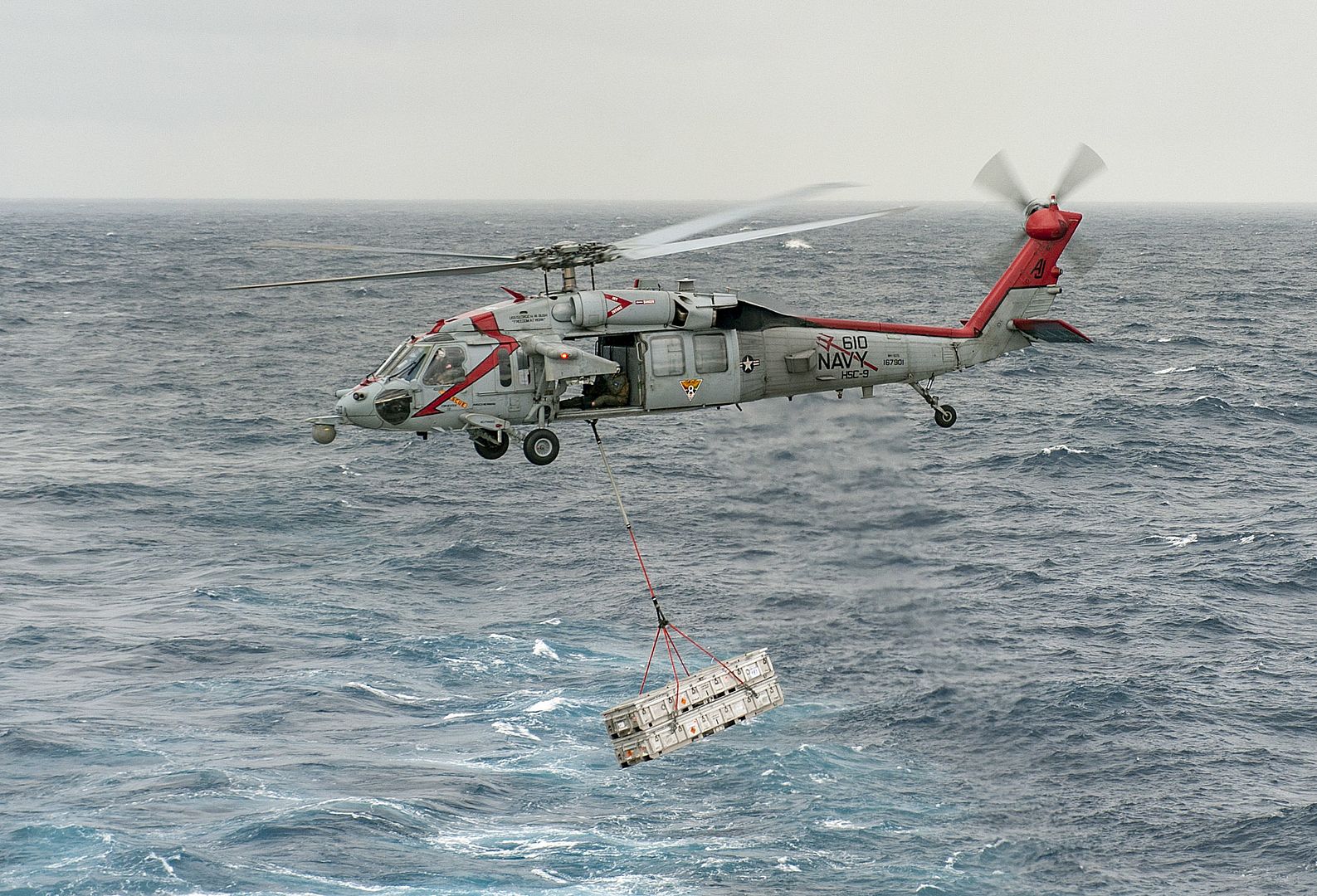
ATLANTIC OCEAN (March 28, 2018) T-45C Goshawk's attached to Training Air Wing (TW) 2 flies over the aircraft carrier USS George H.W. Bush (CVN 77). The ship is underway conducting sustainment exercises to maintain carrier readiness. (U.S. Navy photo's by Mass Communication Specialist 3rd Class Mario Coto)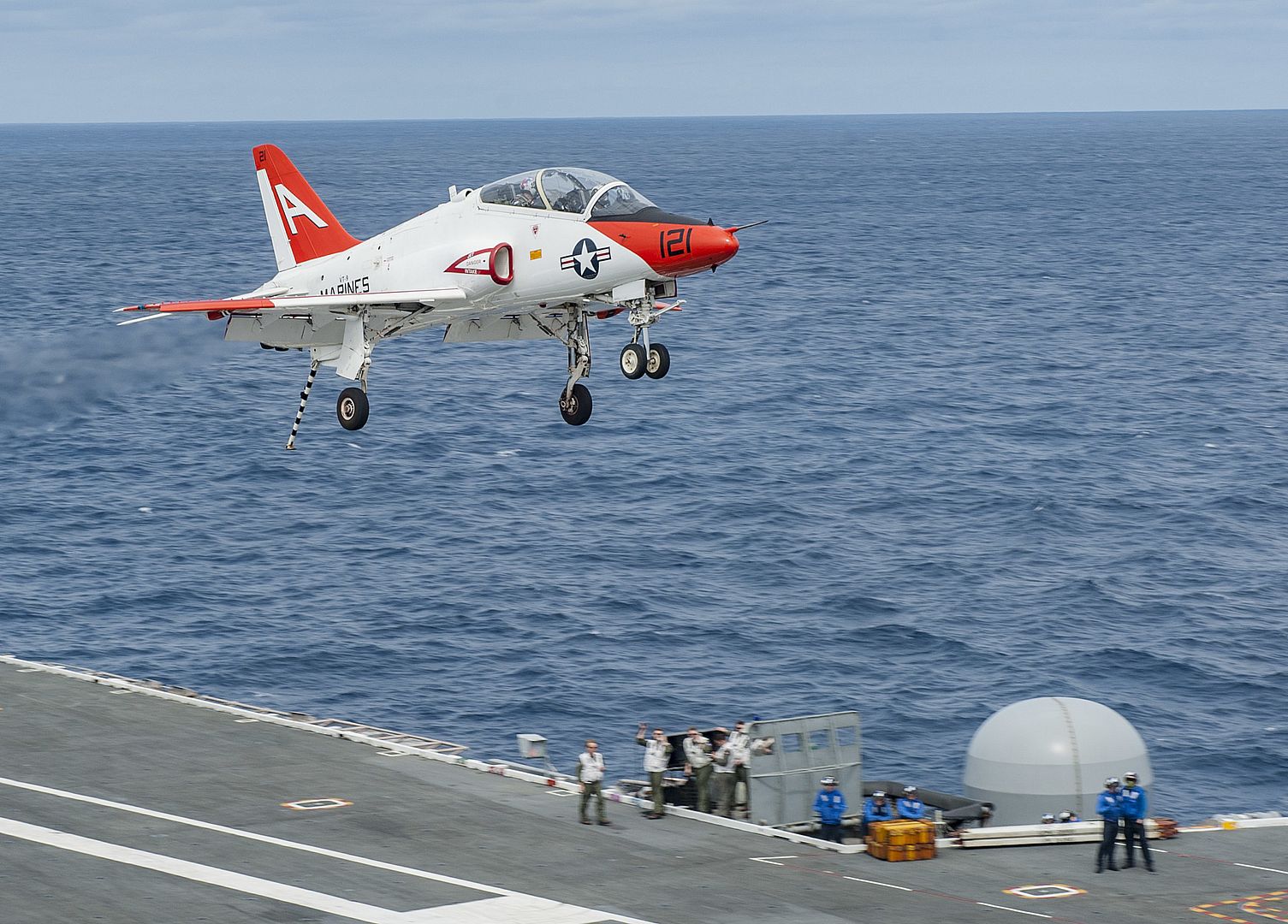
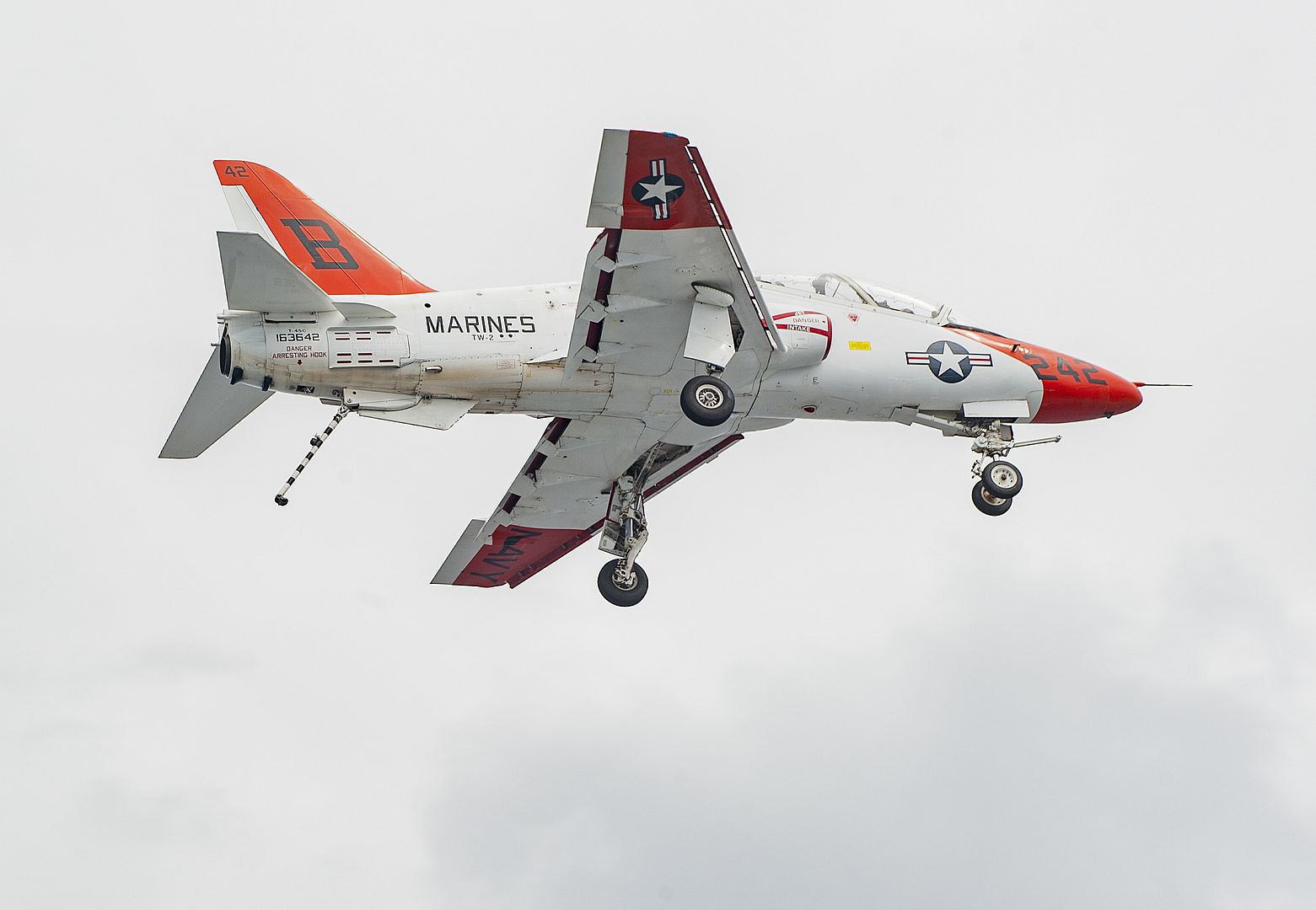
ATLANTIC OCEAN (March 28, 2018) A T-45C Goshawk attached to Training Air Wing (TW) 2 lands aboard the aircraft carrier USS George H.W. Bush (CVN 77). The ship is underway conducting sustainment exercises to maintain carrier readiness. (U.S. Navy photo by Mass Communication Specialist 3rd Class Mario Coto)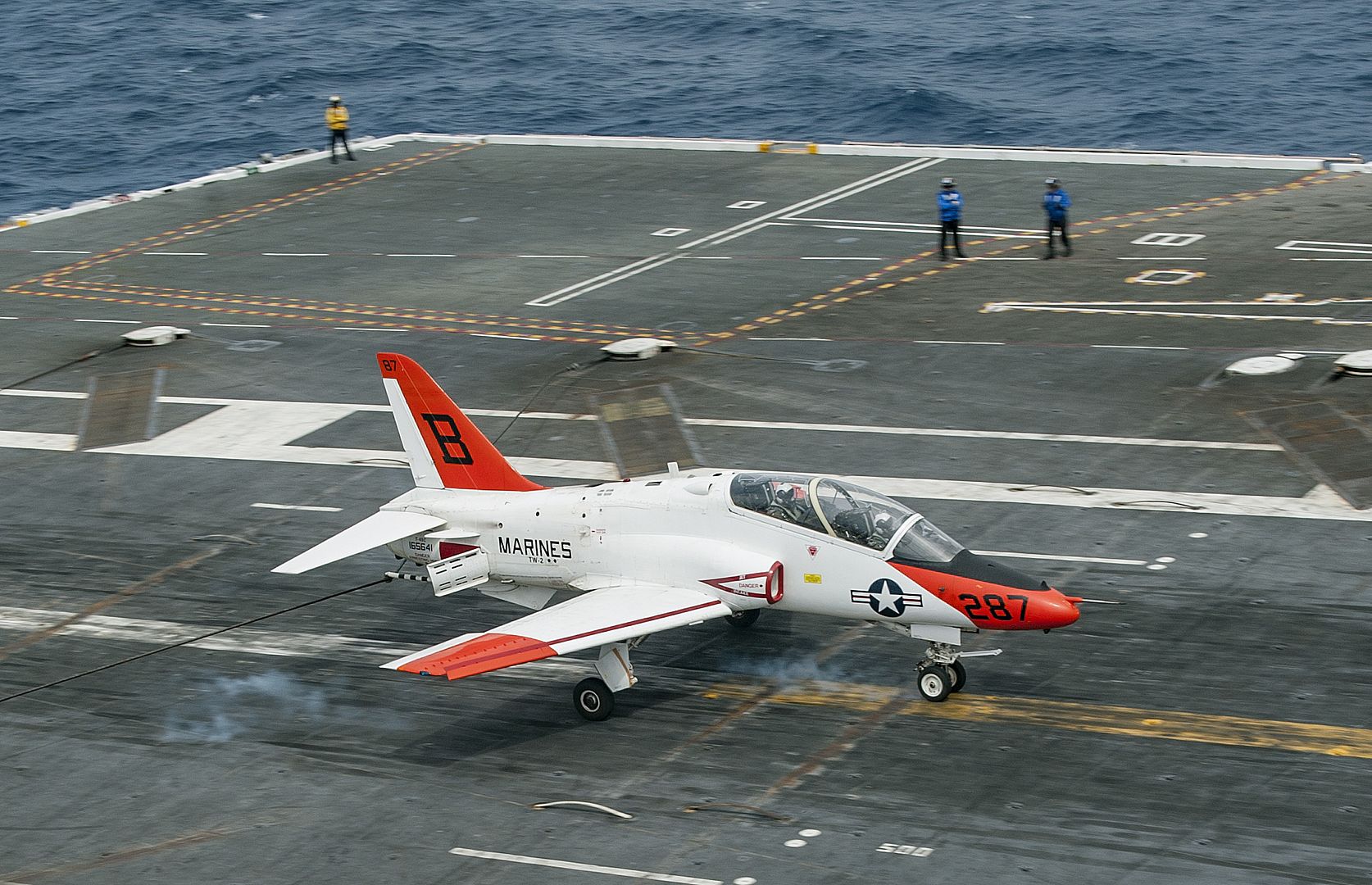
ATLANTIC OCEAN (March 28, 2018) Sailors push a T-45C Goshawk attached to Training Air Wing (TW) 2 aboard the aircraft carrier USS George H.W. Bush (CVN 77). The ship is underway conducting sustainment exercises to maintain carrier readiness. (U.S. Navy photo by Mass Communication Specialist 3rd Class Mario Coto)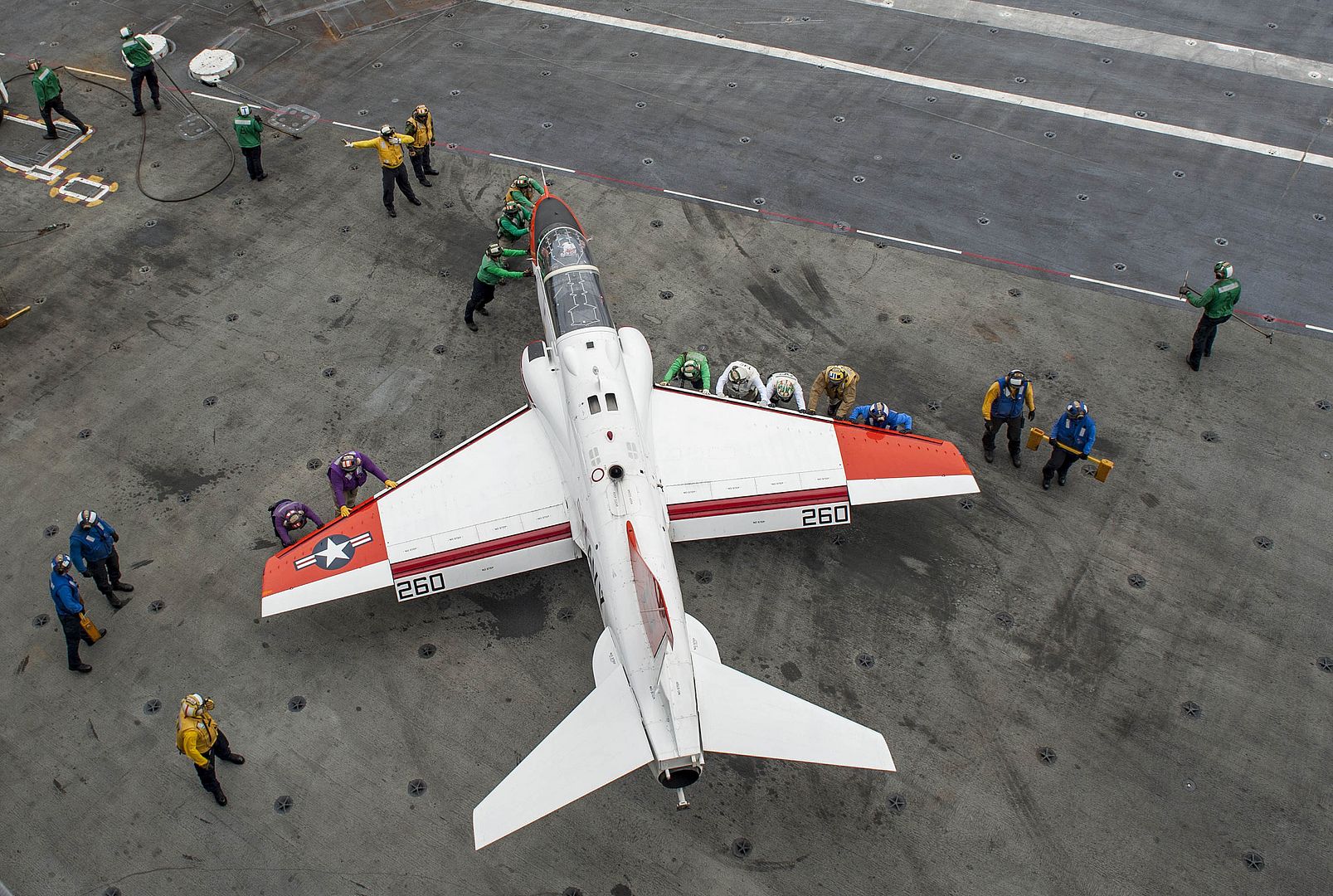
ATLANTIC OCEAN (March 28, 2018) A T-45C Goshawk attached to Training Air Wing (TW) 2 receives fuel aboard the aircraft carrier USS George H.W. Bush (CVN 77). The ship is underway conducting sustainment exercises to maintain carrier readiness. (U.S. Navy photo by Mass Communication Specialist 3rd Class Mario Coto)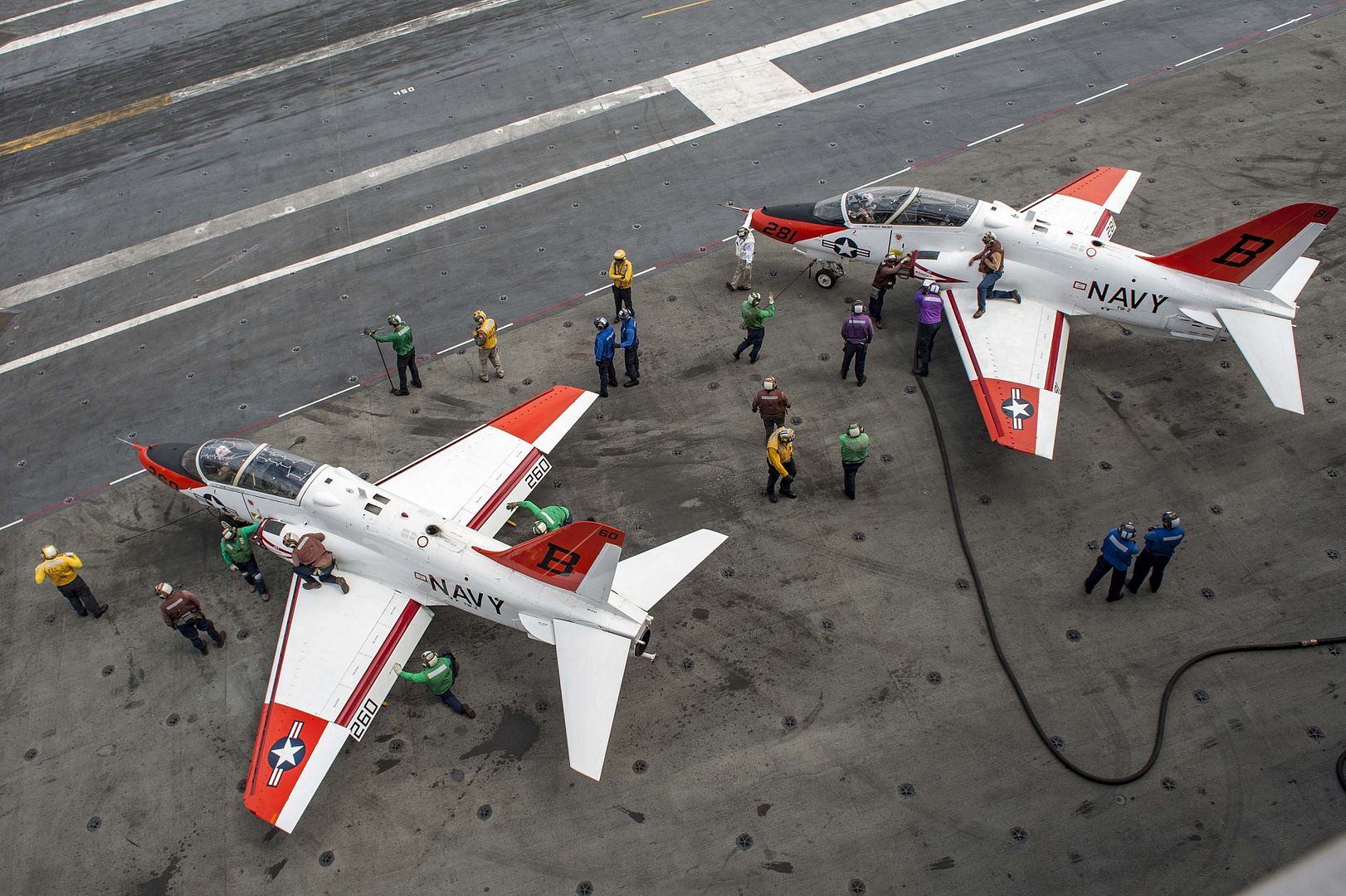
A U.S. Air Force B-52 Stratofortress, assigned to the 20th Expeditionary Bomb Squadron, deployed from Barksdale Air Force Base, La., opens its drag chute during its arrival at Royal Air Force Base Darwin, Australia, March 29, 2018. The detachment of U.S. Air Force B-52H bombers, aircrew and support personnel deployed to RAAF Darwin for EAC 18-2 enables the U.S. to train and increase interoperability with our Australian counterparts. (U.S. Air Force photo by Staff Sgt. Alexander W. Riedel)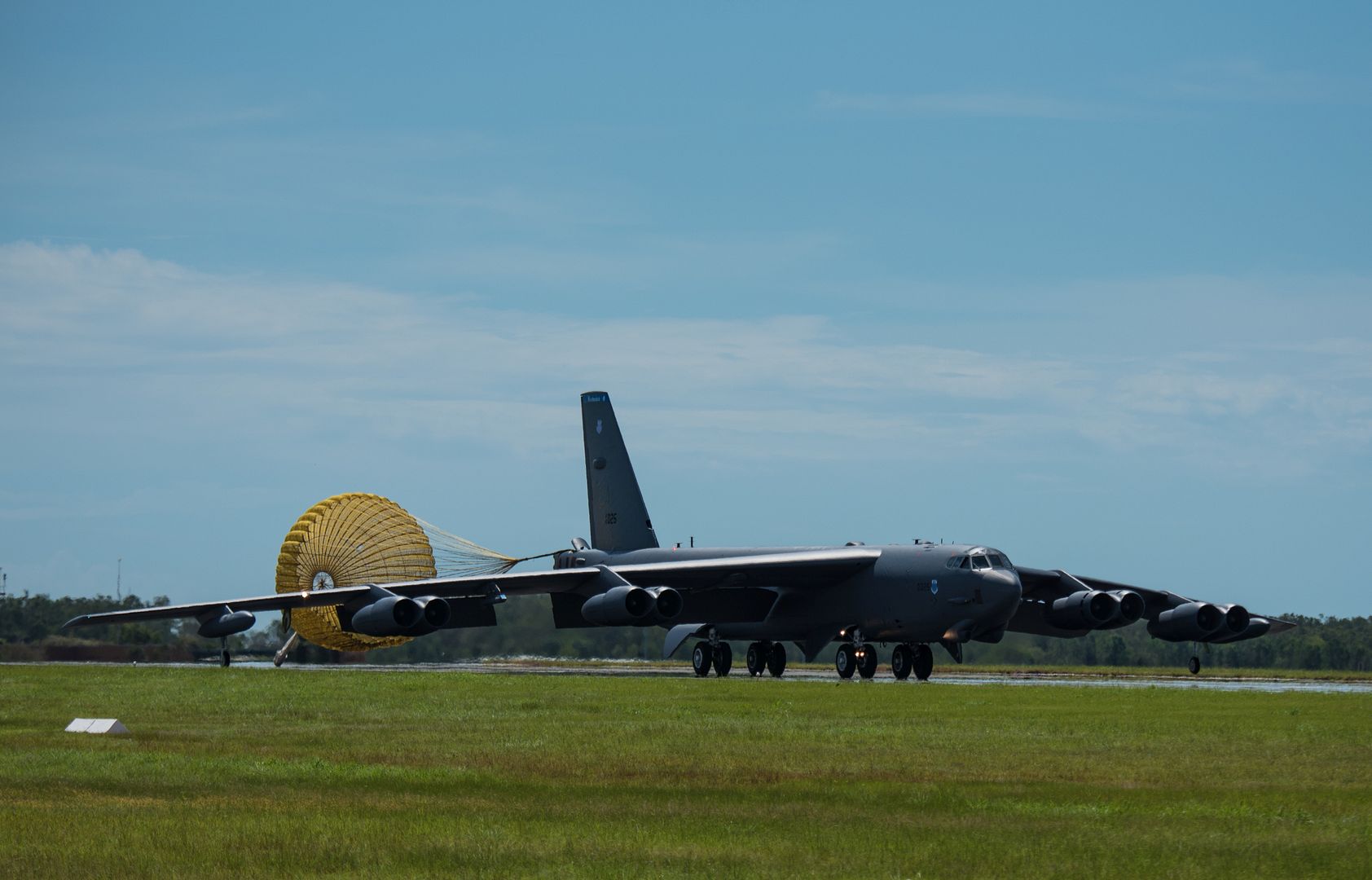
A U.S. Air Force B-52 Stratofortress assigned to the 20th Expeditionary Bomb Squadron, sits parked on the flightline at Royal Air Force Base Darwin, Australia, March 29, 2018. Two B-52s arrived to the small base in Australia?s Northern Territory to support the U.S. Pacific Command's Enhanced Air Cooperation initiative in cooperation with Australian RAAF crews. The EAC comprises a range of air exercises and training activities that allow the U.S. Air Force to increase resiliency, capability and cooperation with Australian armed forces by increasing aircraft rotations and conducting combined military exercises and training in Australia. The B-52 is currently deployed from Barksdale Air Force Base, La. (U.S. Air Force photo by Staff Sgt. Alexander W. Riedel)
SEATTLE, Mar 28, 2018 -- Boeing [NYSE: BA] and SCAT Airlines celebrated the delivery of the Kazakhstan carrier?s first 737 MAX 8 airplane, one of six that the airline will operate as it expands its fleet and service.
SCAT has long operated the fuel-efficient and reliable Boeing Next-Generation 737. With the new 737 MAX, SCAT will be able to achieve a further double-digit improvement in fuel efficiency and environmental performance. And SCAT will be the first in Central Asia to fly the MAX.
?Last year SCAT celebrated its 20th anniversary and it is very symbolic that we are entering a year of adulthood with a purchase of the newest aircraft models. We are confident that the acquisition of Boeing 737 MAX 8 jets will not only raise the level of customer service in our airline, but will also give a new momentum to the development of the aviation industry in Kazakhstan?, said Vladimir Denisov, president of SCAT Airlines.
SCAT announced an order for six 737 MAX 8s at the 2017 Dubai Airshow. The agreement, valued at $674 million at list prices, includes purchase rights for five additional 737 MAX 8s.
"Today marks another significant milestone in our long-term partnership with SCAT Airlines. We are proud to have supported their growth and we look forward to the 737 MAX taking the airline to new heights," said Marty Bentrott, Sales vice president for Middle East, Turkey, Russia, Central Asia & Africa.
The 737 MAX family is designed to offer customers exceptional performance, with lower operating costs and additional range to open up new destinations in the single-aisle market. The 737 MAX incorporates the latest CFM International LEAP-1B engines, Advanced Technology winglets, Boeing Sky Interior, large flight deck displays and other features to deliver the highest efficiency, reliability and passenger comfort in the single-aisle market.
The 737 MAX is the fastest-selling airplane in Boeing history, accumulating more than 4,300 orders from 95 customers worldwide. For more information and feature content, visit www.boeing.com/commercial/737max.
About SCAT Airlines
Established in 1997, SCAT Airlines, based in Shymkent, is one of the leading carriers of Kazakhstan. SCAT operates an extensive network of domestic services as well as international destinations in the Commonwealth of Independent States and Central Asia. The airline has 12 Boeing airplanes in its fleet including 737, 757 and 767 models.
-
 Main AdminThe Commanding Officer of Marine Fighter Attack Squadron 122 (VMFA-122), Lt. Col. John P. Price, conducts a pre-flight check of aircraft in preperation of VMFA-122's first flight operations in an F-35B Lightning II on Marine Corps Air Station (MCAS) Yuma, Ariz., March 29, 2018. VMFA-122 is conducting the flight operations for the first time as an F-35 squadron. (U.S. Marine Corps photo by Sgt. Allison Lotz)
Main AdminThe Commanding Officer of Marine Fighter Attack Squadron 122 (VMFA-122), Lt. Col. John P. Price, conducts a pre-flight check of aircraft in preperation of VMFA-122's first flight operations in an F-35B Lightning II on Marine Corps Air Station (MCAS) Yuma, Ariz., March 29, 2018. VMFA-122 is conducting the flight operations for the first time as an F-35 squadron. (U.S. Marine Corps photo by Sgt. Allison Lotz)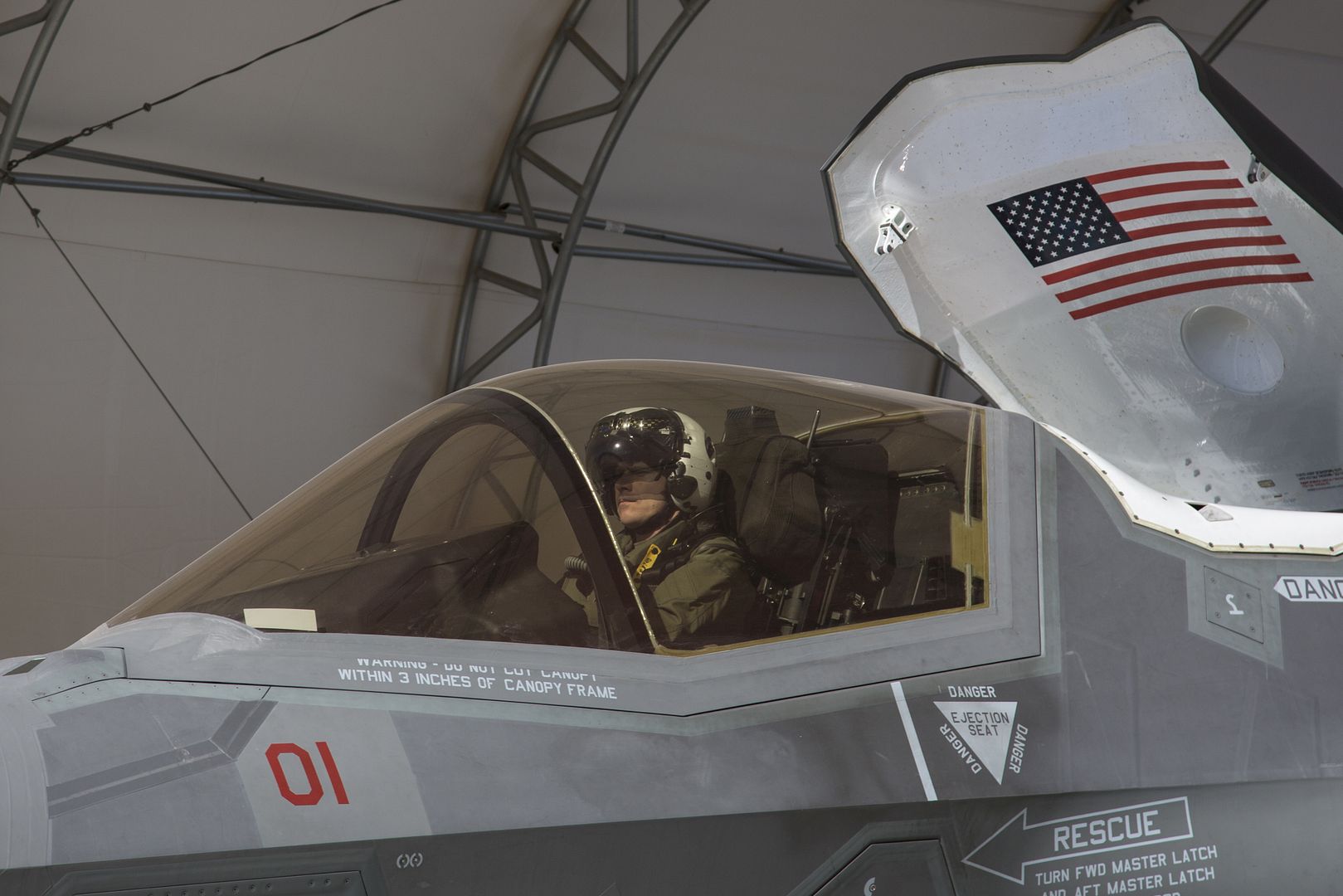
The Commanding Officer of Marine Fighter Attack Squadron 122 (VMFA-122), Lt. Col. John P. Price, conducts VMFA-122's first flight operations in an F-35B Lightning II on Marine Corps Air Station (MCAS) Yuma, Ariz., March 29, 2018. VMFA-122 is conducting the flight operations for the first time as an F-35 squadron. (U.S. Marine Corps photo's by Sgt. Allison Lotz)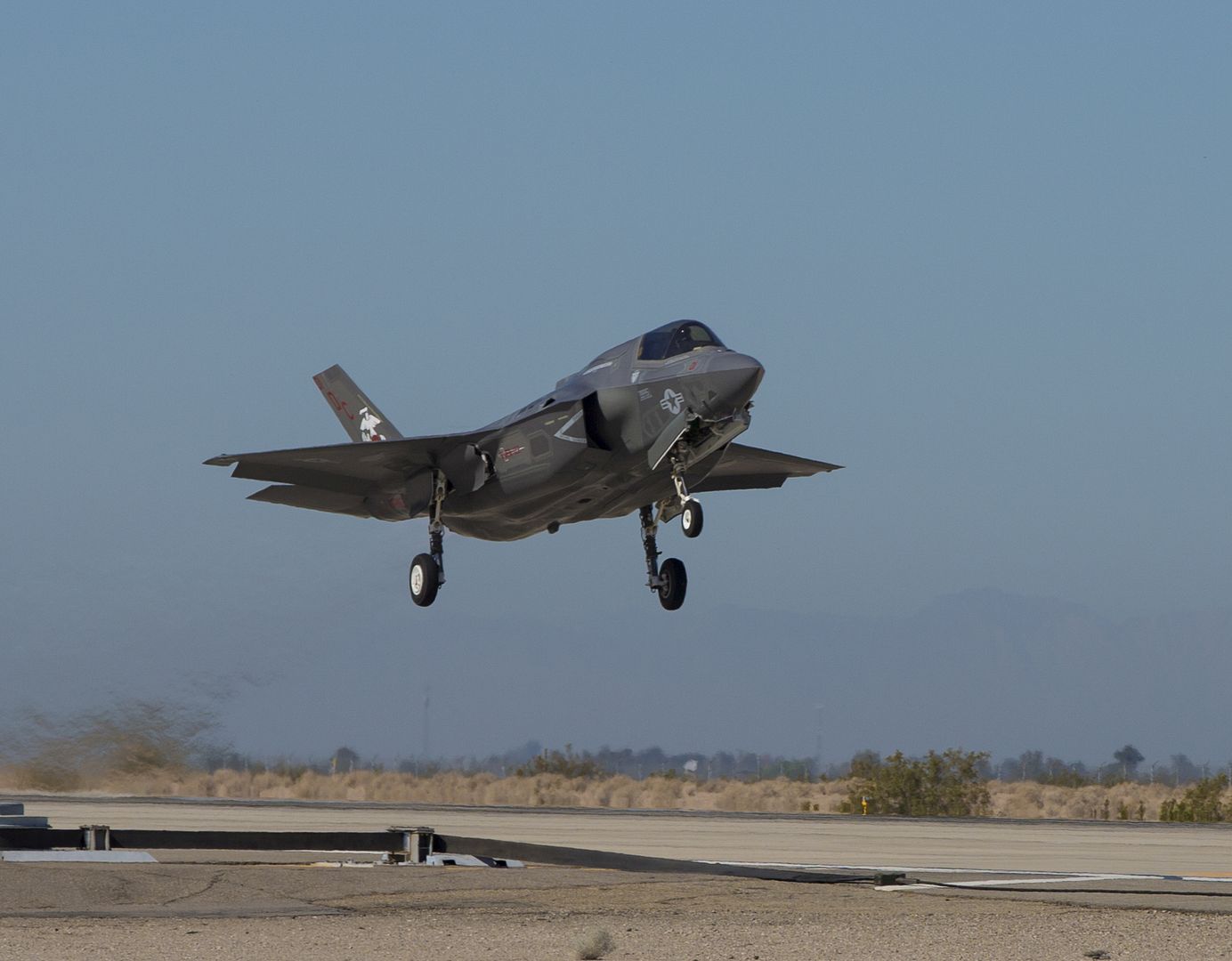
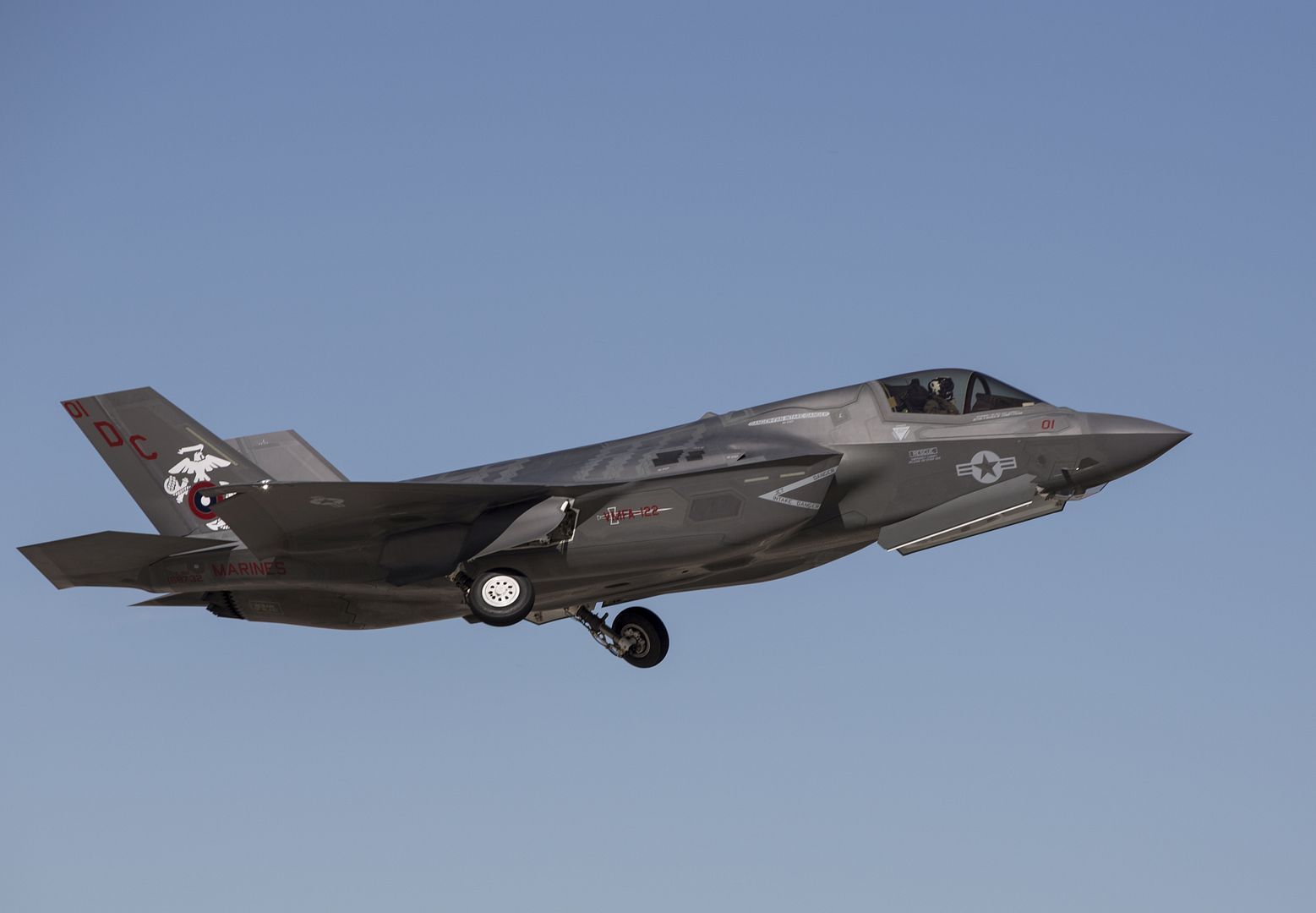
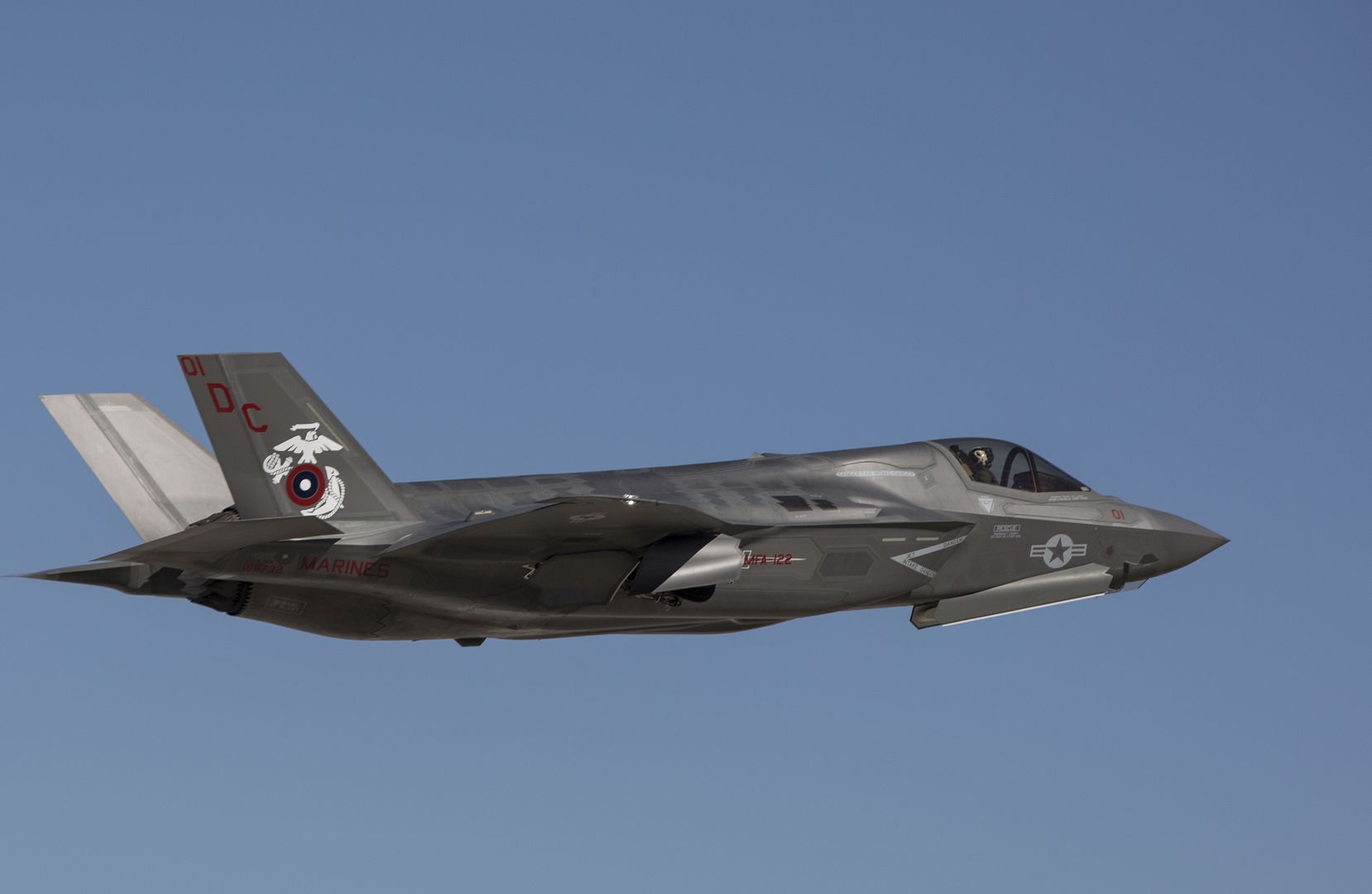
An Air Force C-130J Super Hercules assigned to the 36th Airlift Squadron flies over Yokota Air Base, Japan, during a training mission, March 30, 2018. Sakura trees bloomed at Yokota eight days earlier that last year. (U.S. Air Force photo by Yasuo Osakabe)
-
 Main AdminMarines with Marine Wing Support Squadron 372 conducted Forward Arming and Refuel Point operations in support of Weapons and Tactics Instructor Course 2-18 in Yuma, Ariz., March 31. WTI is a seven-week training event hosted by Marine Aviation Weapons and Tactics Squadron 1 cadre, which emphasizes operational integration of the six functions of Marine Corps aviation in support of a Marine Air Ground Task Force and provides standardized advanced tactical training and certification of unit instructor qualifications to support Marine Aviation Training and Readiness and assists in developing and employing aviation weapons and tactics. (U.S. Marine Corps photo taken by Sgt. David Bickel/Released)
Main AdminMarines with Marine Wing Support Squadron 372 conducted Forward Arming and Refuel Point operations in support of Weapons and Tactics Instructor Course 2-18 in Yuma, Ariz., March 31. WTI is a seven-week training event hosted by Marine Aviation Weapons and Tactics Squadron 1 cadre, which emphasizes operational integration of the six functions of Marine Corps aviation in support of a Marine Air Ground Task Force and provides standardized advanced tactical training and certification of unit instructor qualifications to support Marine Aviation Training and Readiness and assists in developing and employing aviation weapons and tactics. (U.S. Marine Corps photo taken by Sgt. David Bickel/Released)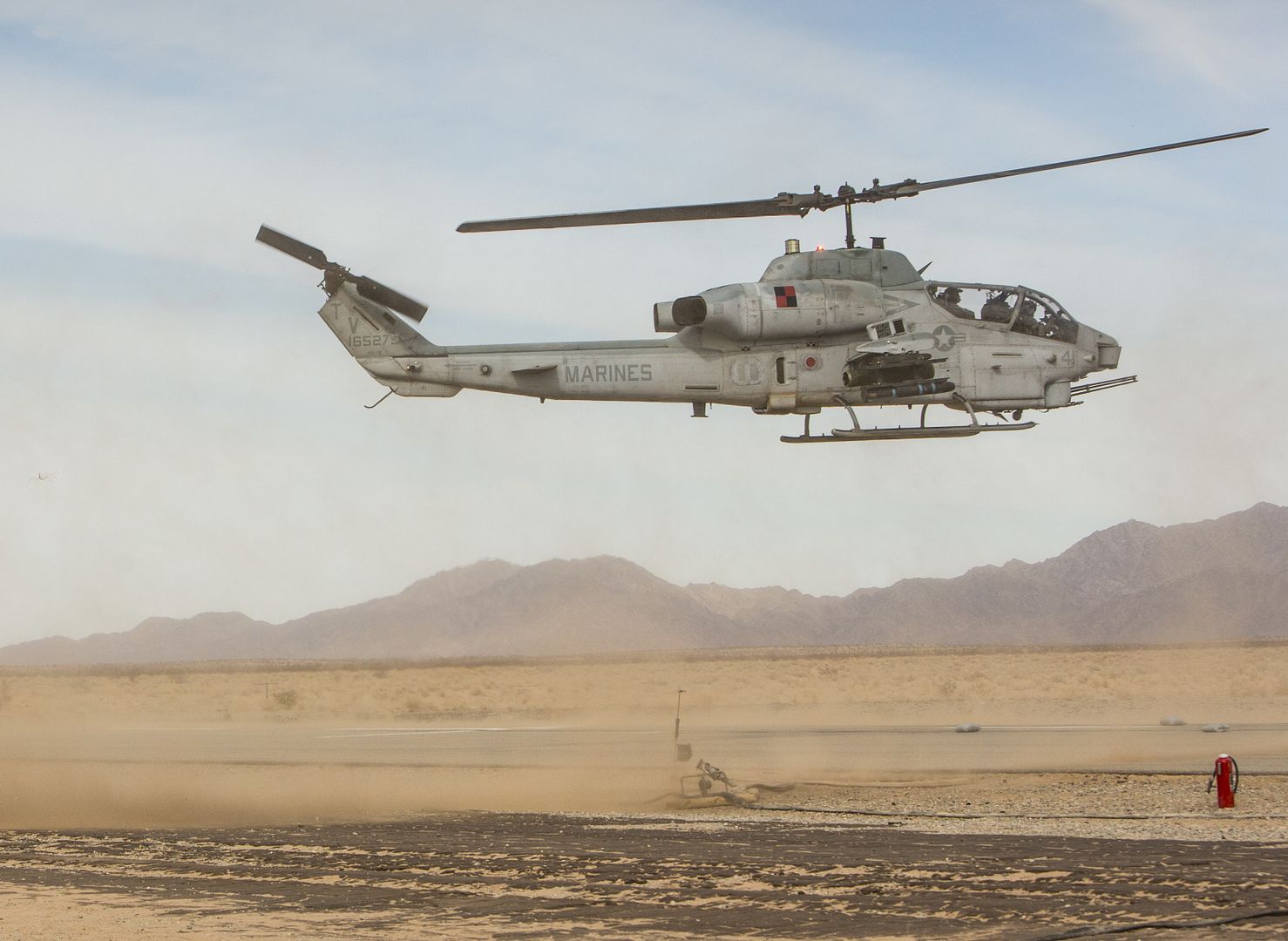
-
 Main AdminF-16 Fighting Falcon fighter jets assigned to the 162nd Wing, Arizona Air National Guard, land and taxis on Marine Corps Air Station (MCAS) Kaneohe Bay, Marine Corps Base Hawaii, April 2, 2018. Two squadrons of Fighting Falcons arrived to MCAS Kaneohe Bay where they will be participating in Exercise Sentry Aloha. Sentry Aloha provides tailored, cost effective and realistic combat training for Department of Defense services to provide warfighters with the skill sets necessary to perform their homeland defense and combat missions. (U.S. Marine Corps photo's by Sgt. Jesus Sepulveda Torres)
Main AdminF-16 Fighting Falcon fighter jets assigned to the 162nd Wing, Arizona Air National Guard, land and taxis on Marine Corps Air Station (MCAS) Kaneohe Bay, Marine Corps Base Hawaii, April 2, 2018. Two squadrons of Fighting Falcons arrived to MCAS Kaneohe Bay where they will be participating in Exercise Sentry Aloha. Sentry Aloha provides tailored, cost effective and realistic combat training for Department of Defense services to provide warfighters with the skill sets necessary to perform their homeland defense and combat missions. (U.S. Marine Corps photo's by Sgt. Jesus Sepulveda Torres)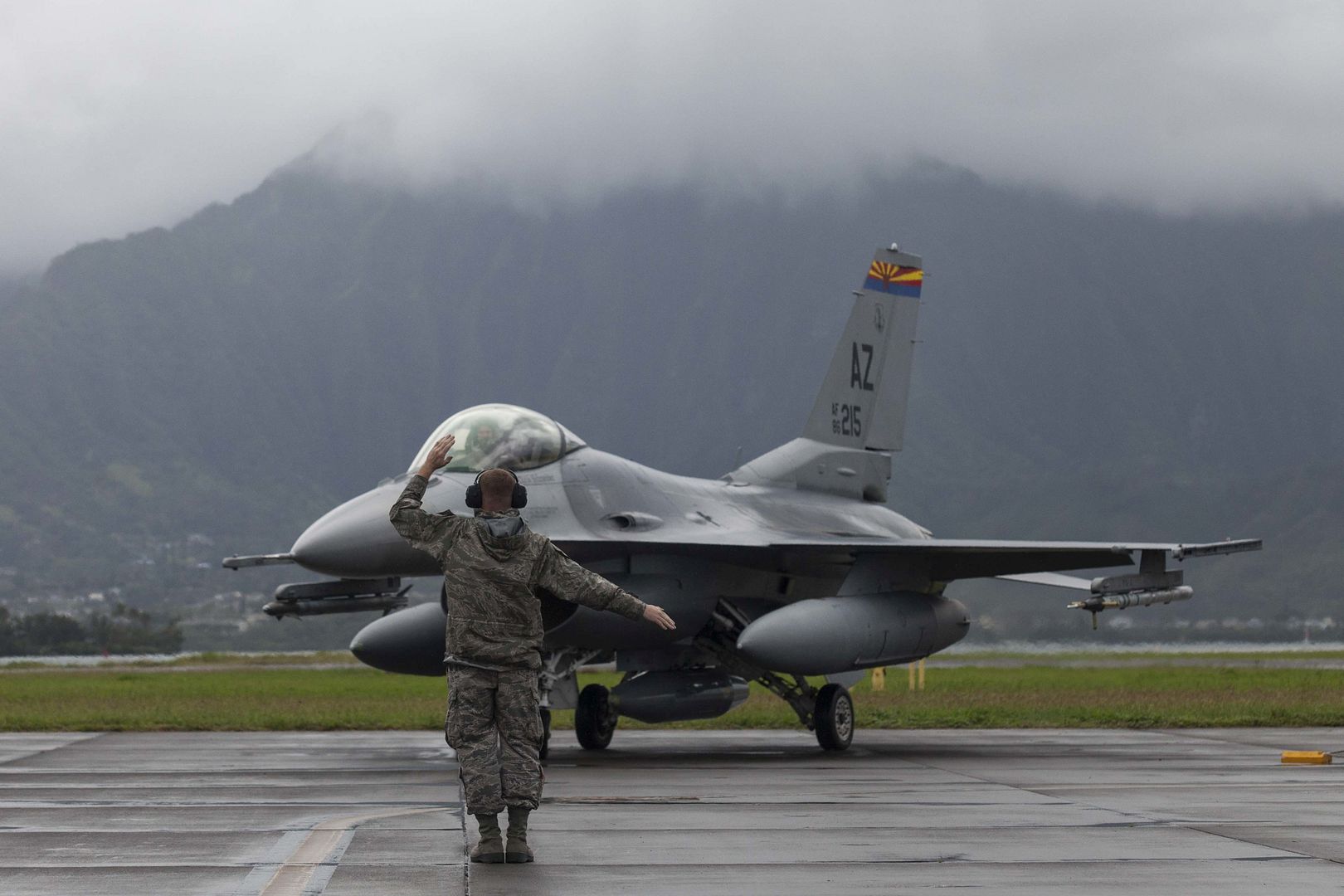
PALMDALE, Calif., April 3, 2018 /PRNewswire/ -- Supersonic commercial travel is on the horizon. Today NASA awarded Lockheed Martin (NYSE: LMT) Skunk Works? a contract to design, build and flight test the Low-Boom Flight Demonstrator, an X-plane designed to make supersonic passenger air travel a reality.
"It is super exciting to be back designing and flying X-planes at this scale," said Jaiwon Shin, NASA's associate administrator for aeronautics. "Our long tradition of solving the technical barriers of supersonic flight to benefit everyone continues."
Lockheed Martin Skunk Works will build a full-scale experimental aircraft, known as an X-plane, of its preliminary design developed under NASA's Quiet Supersonic Technology (QueSST) effort. The X-plane will help NASA establish an acceptable commercial supersonic noise standard to overturn current regulations banning commercial supersonic travel over land.
"We're honored to continue our partnership with NASA to enable a new generation of supersonic travel," said Peter Iosifidis, Low-Boom Flight Demonstrator program manager, Lockheed Martin Skunk Works. "We look forward to applying the extensive work completed under QueSST to the design, build and flight test of the X-plane, providing NASA with a demonstrator to make supersonic commercial travel possible for passengers around the globe."
Lockheed Martin Skunk Works and NASA have partnered for more than a decade to enable the next generation of commercial supersonic aircraft. NASA awarded Lockheed Martin Skunk Works a contract in February 2016 for the preliminary design of the supersonic X-plane flight demonstrator.
The aircraft will be built at the Lockheed Martin Skunk Works facility in Palmdale, California, and will conduct its first flight in 2021.
For more information, visit our websites: lockheedmartin.com/QueSST or www.nasa.gov/aero.
SANTIAGO, Chile, April 3, 2018 /PRNewswire/ -- 2018 marks 30 years of operations for the Black Hawk helicopter in Latin America, since the Colombian Air Force took delivery of its first five UH-60A aircraft in 1988. Designed and manufactured by Sikorsky, now a Lockheed Martin company (NYSE: LMT), the twin engine medium-lift Black Hawk has become synonymous with the successful defense of territorial sovereignty, providing humanitarian assistance and disaster relief, combatting drug trafficking, performing search and rescue missions, surveilling coastlines and borders, and transporting heads of state.
"We congratulate and thank the 11 government agencies and armed forces across Argentina, Brazil, Chile, Colombia, and Mexico for showing the world how to adapt and operate the Black Hawk helicopter for critical missions that serve and protect their citizens," said Adam Schierholz, Sikorsky regional executive for Latin America. "Continued confidence in the Black Hawk by these countries during the past three decades stems from the aircraft's unequaled rugged military design, which translates to predictable reliability and performance in flight, effectiveness in combat, and the availability of strong product support to ensure high operational readiness."
"The Black Hawk has proven to be a unique and strategic tool for the Colombian Air Force that has allowed us to perform some of the most challenging missions in very extreme conditions," said Gen. Carlos Eduardo Bueno, Chief of the Colombian Air Force. "We join in celebrating this milestone anniversary, and look forward to many more years of effective utilization of these fine machines with the help and support of our friends at Sikorsky."
Since 1988, Sikorsky has delivered 174 Hawk aircraft to the region, which includes six Seahawk? variants to the Brazil Navy. The total will climb to 180 during 2018 when the Chilean Air Force takes delivery of six S-70i Black Hawk aircraft for military and humanitarian missions.
A Look Back
Country-specific operations include:
Colombia: As the largest Black Hawk customer in Latin America, the Colombian Air Force, Colombian Army and Colombian National Police have collectively taken delivery of 103 aircraft, including seven S-70i digital cockpit variants in 2013. Carrying out diverse combat missions such as attack, MEDEVAC, CASEVAC, and Air Assault, these aircraft have played an essential role to defend and regain territorial control during the Colombian Conflict.
Mexico: With the region's second largest Black Hawk fleet, Mexico has acquired 48 aircraft ? UH-60L and UH-60M variants ? since 1991 for its Navy, Air Force and Federal Police to fight drug traffickers and crime syndicates. In 2011, the State of Jalisco took delivery of one S-70i.
Brazil: In 2017, two Air Force squadrons ? the 7/8 'Harpia' air group based in Manaus, and the 5/6 'Pantera' air group in Santa Maria ? achieved 30,000 flight hours for all 16 UH-60L aircraft. The same year, the Ex?rcito Brasileiro commemorated its 20th anniversary operating four S-70A Black Hawk aircraft. The Brazil Navy operates six S-70B Seahawk aircraft.
Chile: The Chile Air Force has operated one S-70A aircraft since 1998 in a multirole capacity.
Argentina: Argentina's Presidencia has operated one S-70A for head of state transport since 1994.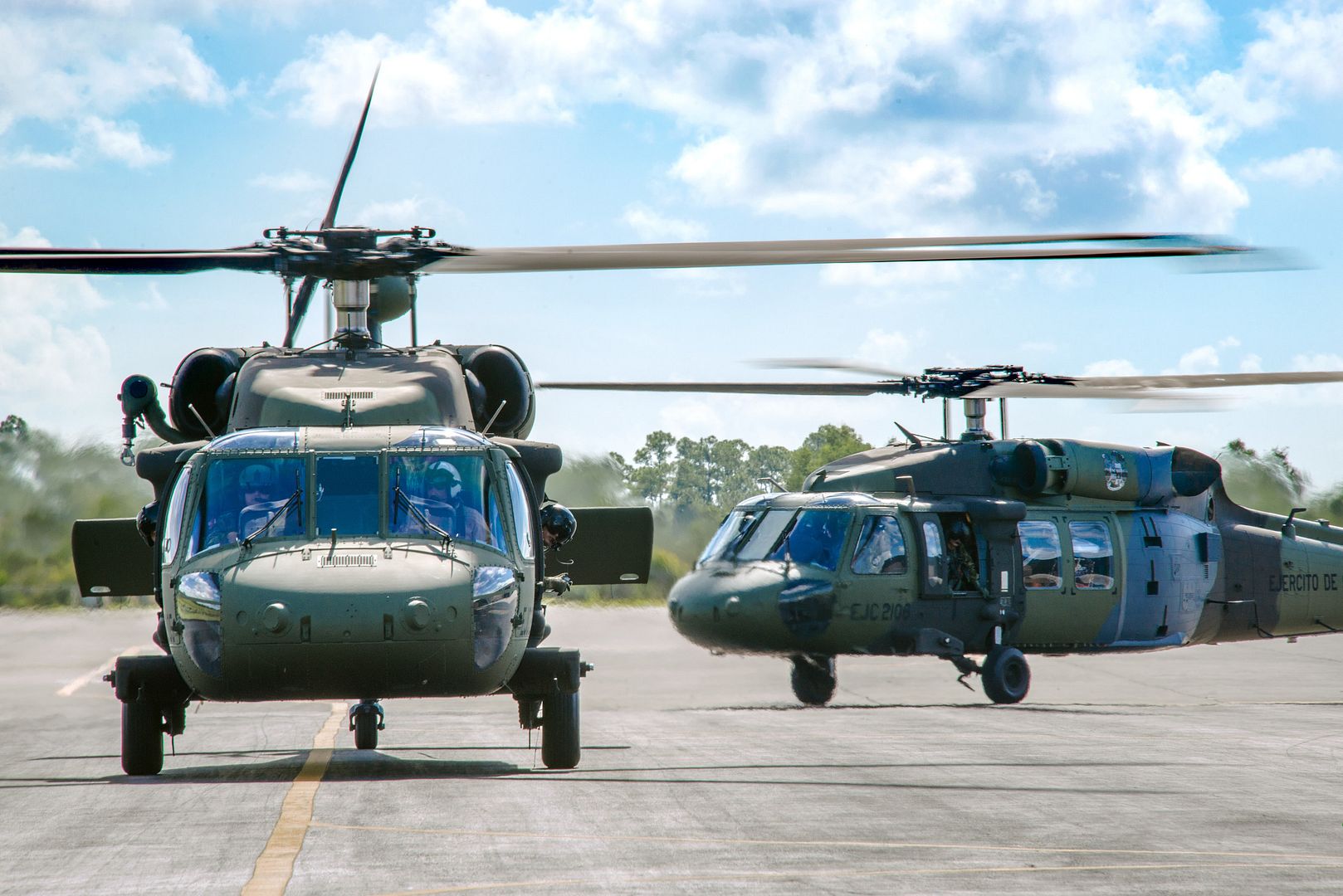
SEATTLE, April 3, 2018 /PRNewswire/ -- Boeing [NYSE:BA] and Air Lease Corporation (NYSE: AL) (ALC) announced they have finalized an order for eight more 737 MAX 8 airplanes, valued at $936.8 million at list prices.
Boeing [NYSE:BA] and Air Lease Corporation (NYSE: AL) (ALC) announced they have finalized an order for eight more 737 MAX 8 airplanes, valued at $936.8 million at list prices. The airplane is seen here in an artist's rendering. (Boeing illustration)
Air Lease Corporation (ALC), one of the world's leading airplane lessors, has been a big buyer of the improved 737 airplane. This new order raises ALC's total 737 MAX orders to 138.
"These aircraft perfectly fit ALC's and our airline lessees' growing need for additional 737 MAX 8 aircraft. Our success in MAX placements to date speaks to the strong market demand for these aircraft," said John Poerschke, Executive Vice President of Air Lease Corporation.
The 737 MAX family is designed to offer customers exceptional performance, with lower operating costs and additional range to open up new destinations. The 737 MAX incorporates the latest CFM International LEAP-1B engines, Advanced Technology winglets, Boeing Sky Interior, large flight deck displays and other features to deliver the highest efficiency, reliability and passenger comfort in the single-aisle market.
Boeing has delivered more than 100 737 MAX airplanes to over 20 customers worldwide, including four to ALC, with the fifth delivering in May 2018.
"The ALC team has a great track record of forecasting what airlines want in terms of new airplanes. Their growing commitment to the 737 MAX reflects the strong market demand for this airplane around the world," said Ihssane Mounir, senior vice president, Global Sales & Marketing, The Boeing Company. "We're pleased that ALC is having success with the 737 MAX's capabilities and efficiencies which are critical traits lessors need in their portfolios."
The 737 MAX is the fastest-selling airplane in Boeing history, accumulating more than 4,400 orders from 96 customers worldwide. For more information and feature content, visit www.boeing.com/commercial/737max.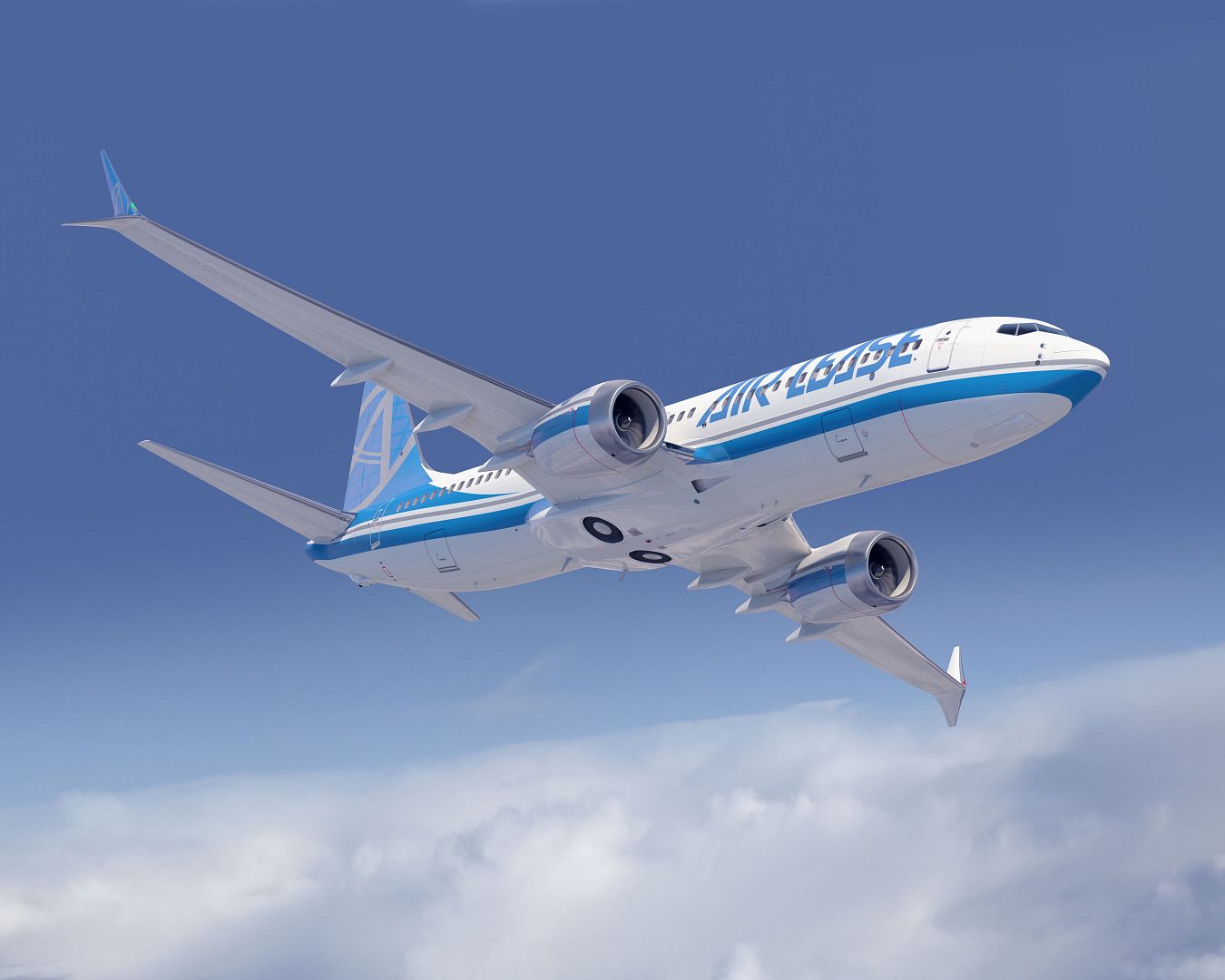
The A350-900 flight test aircraft arrived at Santiago Chile?s Arturo Merino Benitez Airport for the 20th edition of the FIDAE air show, where it will be on static display and take part in flying demonstrations between 2-5 April.
The A350-900 displayed in Santiago, MSN002, first made its debut at FIDAE in 2016. MSN002 is one of the five original development test aircraft, fitted with a two-class cabin with 42 lie-flat, business-class seats in a four-abreast configuration and 210 economy-class seats in a nine-abreast configuration. This aircraft was used for testing all cabin-related systems, which have demonstrated a high level of maturity since the A350-900?s entry into service in 2015.
The A350-900 is a member of the A350 XWB Family, an all-new family of mid-size widebody long-haul airliners shaping the future of air travel. Since its launch, Airbus has captured nearly 50 percent market share of net orders of widebody aircraft in Latin America.
In 2016, LATAM Airlines Group became the first operator in the Americas to fly the A350 XWB when it started operating its first of 27 on order. Other A350 XWB customers in the region include Synergy Aerospace, Avianca?s main shareholder and owner of Avianca Brasil, which has ordered 10 A350 XWB.
The A350 XWB features the latest aerodynamic design, carbon fibre fuselage and wings, plus new fuel-efficient Rolls-Royce engines. Together, these latest technologies translate into unrivalled levels of operational efficiency, with a 25 percent reduction in fuel burn and emissions, and significantly lower maintenance costs. More than 26 million passengers have already enjoyed the absolute comfort of the A350 XWB Airspace cabin which, on top of the aircraft?s spaciousness and quietness, provides better ambience, design and services.
Currently operated by 17 airlines, the A350 XWB has flown more than 100,000 flight cycles over more than 200 routes.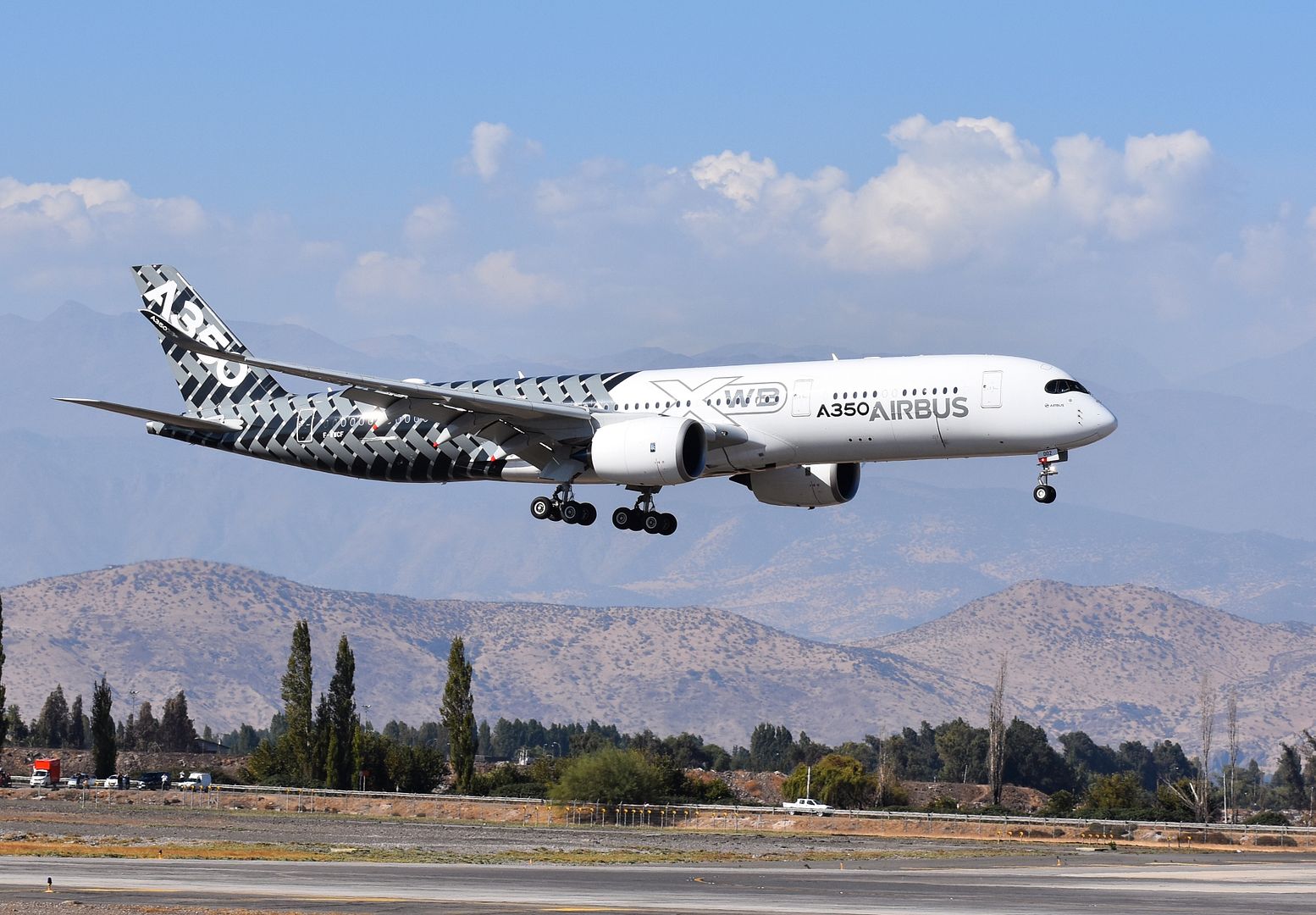
-
 Main AdminA U.S. Marine Corps UH-1Y Venom assigned to Marine Aviation Weapons and Tactics Squadron 1 lands at Bull Attack Forward Arming and Refueling Point in support of Weapons and Tactics Instructor Course 2-18 at Chocolate Mountain Aerial Gunnery Range, Calif., Aug. 2. WTI is a seven-week training event hosted by Marine Aviation Weapons and Tactics Squadron 1 cadre, which emphasizes operational integration of the six functions of Marine Corps aviation in support of a Marine Air Ground Task Force and provides standardized advanced tactical training and certification of unit instructor qualifications to support Marine Aviation Training and Readiness and assists in developing and employing aviation weapons and tactics. (U.S. Marine Corps photo taken by Lance Cpl. Cody Rowe)
Main AdminA U.S. Marine Corps UH-1Y Venom assigned to Marine Aviation Weapons and Tactics Squadron 1 lands at Bull Attack Forward Arming and Refueling Point in support of Weapons and Tactics Instructor Course 2-18 at Chocolate Mountain Aerial Gunnery Range, Calif., Aug. 2. WTI is a seven-week training event hosted by Marine Aviation Weapons and Tactics Squadron 1 cadre, which emphasizes operational integration of the six functions of Marine Corps aviation in support of a Marine Air Ground Task Force and provides standardized advanced tactical training and certification of unit instructor qualifications to support Marine Aviation Training and Readiness and assists in developing and employing aviation weapons and tactics. (U.S. Marine Corps photo taken by Lance Cpl. Cody Rowe)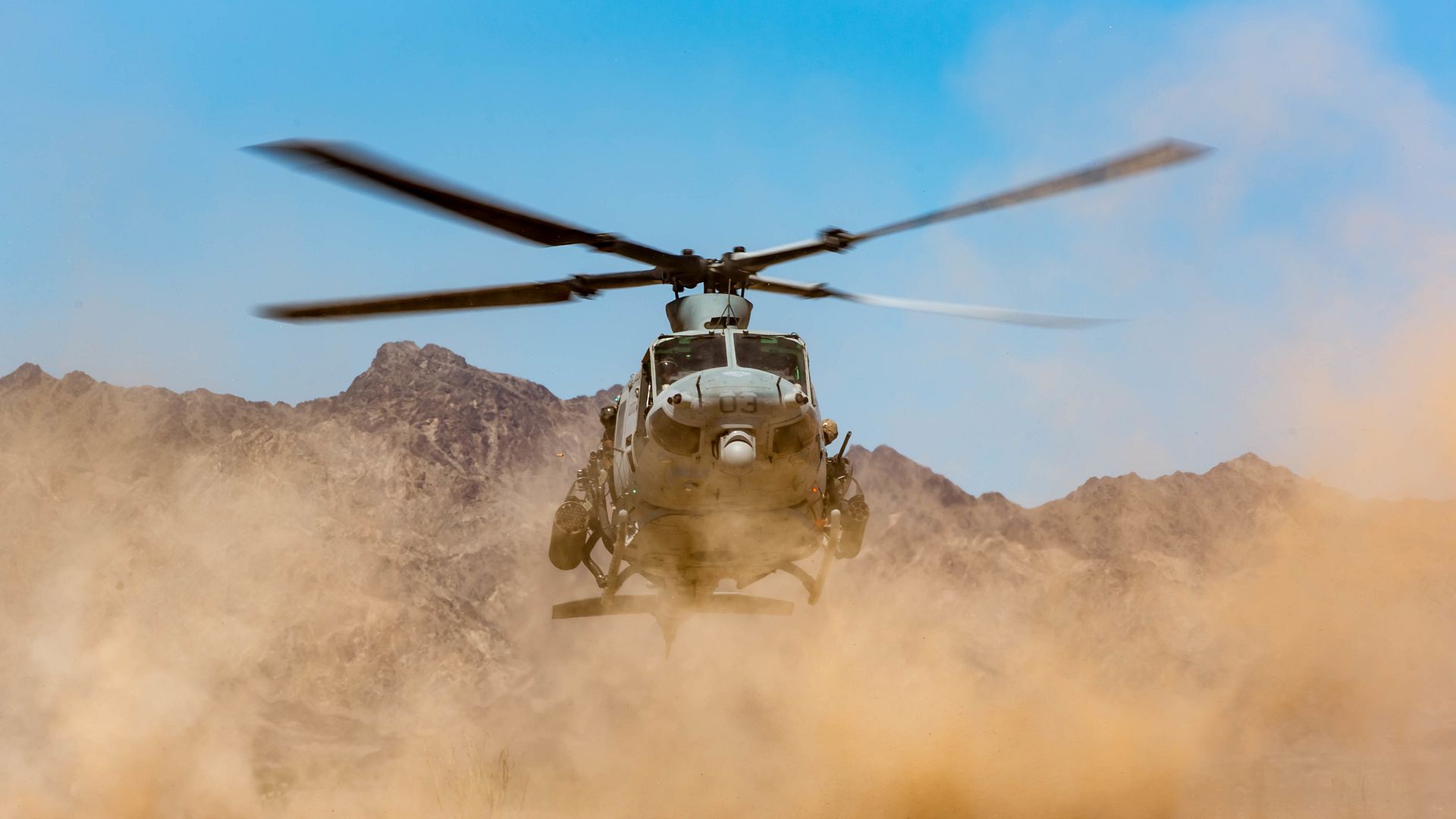
ARTA RANGE, Djibouti (April 2, 2018) A U.S. Marine Corps MV-22B assigned to Marine Medium Tiltrotor Squadron (VMM) 162 (Reinforced), 26th Marine Expeditionary Unit, is parked in Arta Range, Djibouti, during Alligator Dagger, April 2, 2018. Led by Naval Amphibious Force, Task Force 51/5th Marine Expeditionary Brigade, Alligator Dagger integrates U.S. Navy and Marine Corps assets to practice and rehearse a range of critical capabilities available to U.S. Central Command both afloat and ashore to promote stability and security in the region. (U.S. Marine Corps photo by Cpl. Jered T. Stone/Released)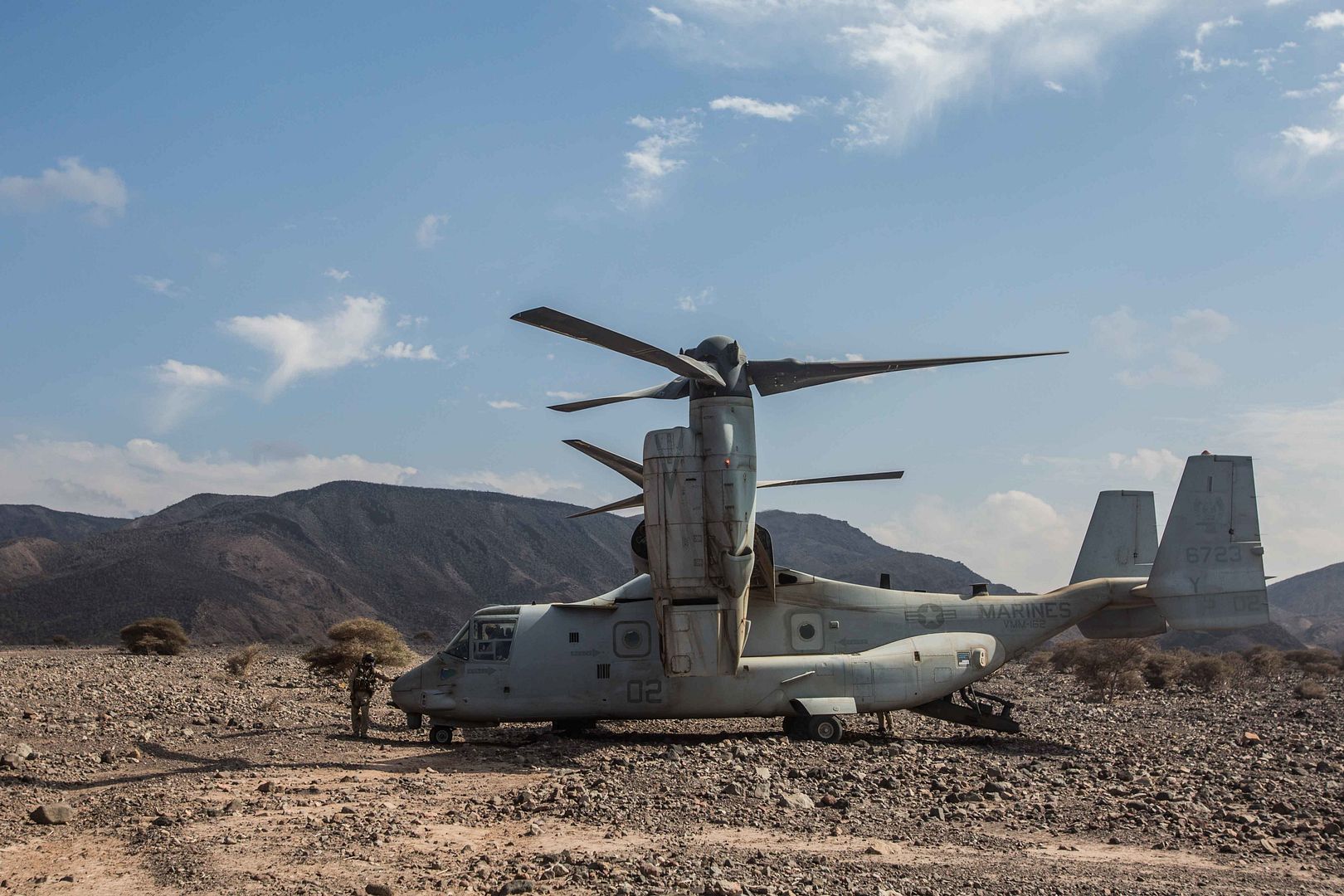
JOINT BASE ELMENDORF-RICHARDSON, Alaska - A C-17 Globemaster III assigned to the 176th Wing sits inside a hangar for a home station check at Joint Base Elmendorf-Richardson, Alaska, March 27, 2018. The 3rd and 176th maintenance squadrons complete an in-depth, four-day scheduled inspection of a C-17 approximately every 180 days. A home station check is the behind-the-scenes maintenance that can prevent loss of life, lead to savings in time and money and keep the aircraft fit to fight.
Photo By: Senior Airman Curt Beach
WATERS SURROUNDING OKINAWA (March 14, 2018) An F/A-18E Super Hornet, bottom, assigned to the "Eagles" of Strike Fighter Squadron 115, and an F-15D Eagle assigned to the "Fighting Cocks" of the 67th Fighter Squadron, conduct a joint air-to-air combat training mission during exercise Black Flag 2018. The annual exercise is focused on enhancing joint air-to-air combat execution between U.S. Navy and U.S. Air Force squadrons. (U.S. Navy photo by Lt. Steve Bachman/Released)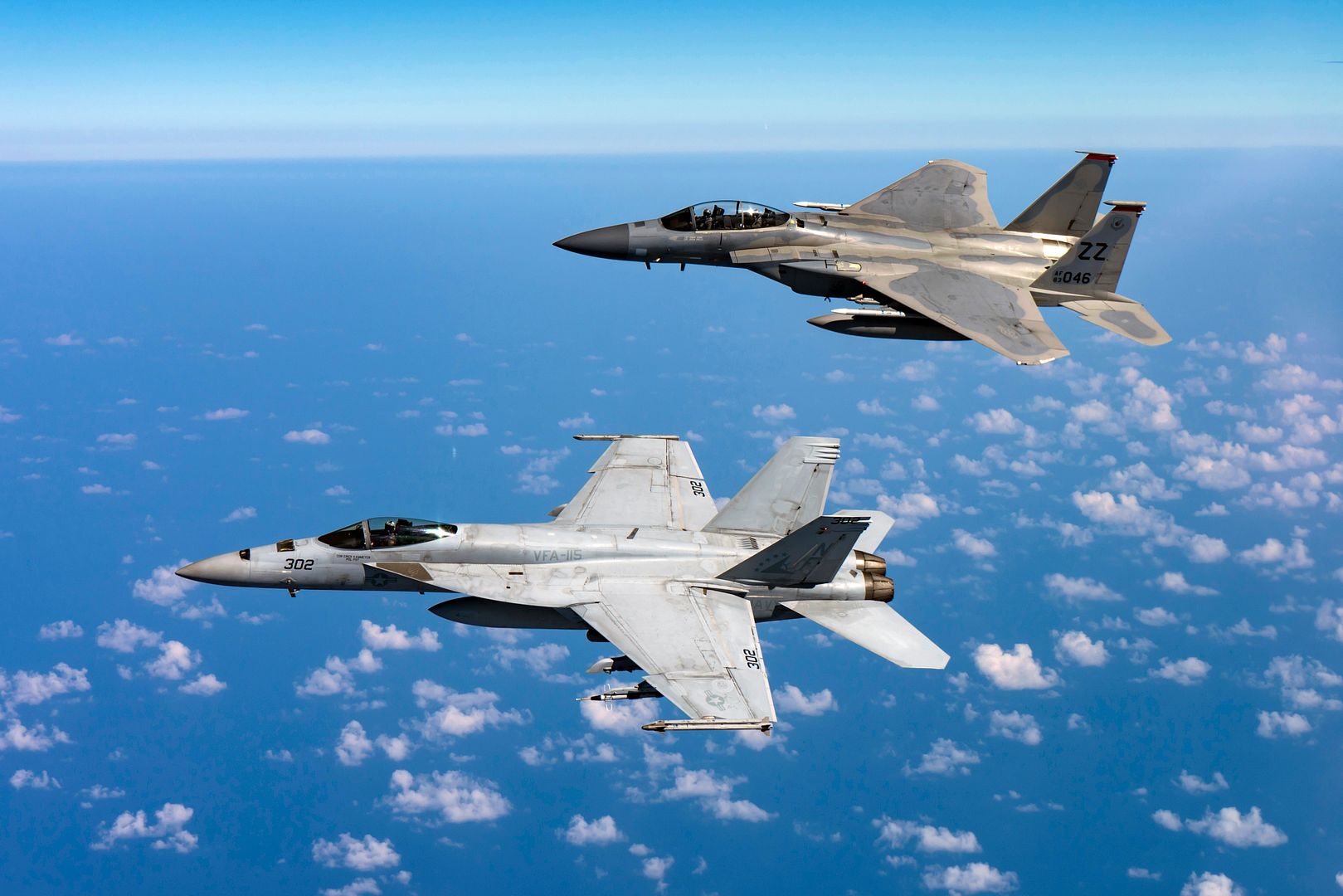
CAMP PENDLETON, Calif. (March 28, 2018) An F-35B Lightning II assigned to Marine Fighter Attack Squadron-211, 13th Marine Expeditionary Unit (13th MEU), takes off from the Wasp-class amphibious assault ship USS Essex (LHD 2), during flight operations. The Essex Amphibious Ready Group is fully integrated for the first time before their summer deployment. (U.S. Marine Corps photo by Cpl. A. J. Van Fredenberg/Released)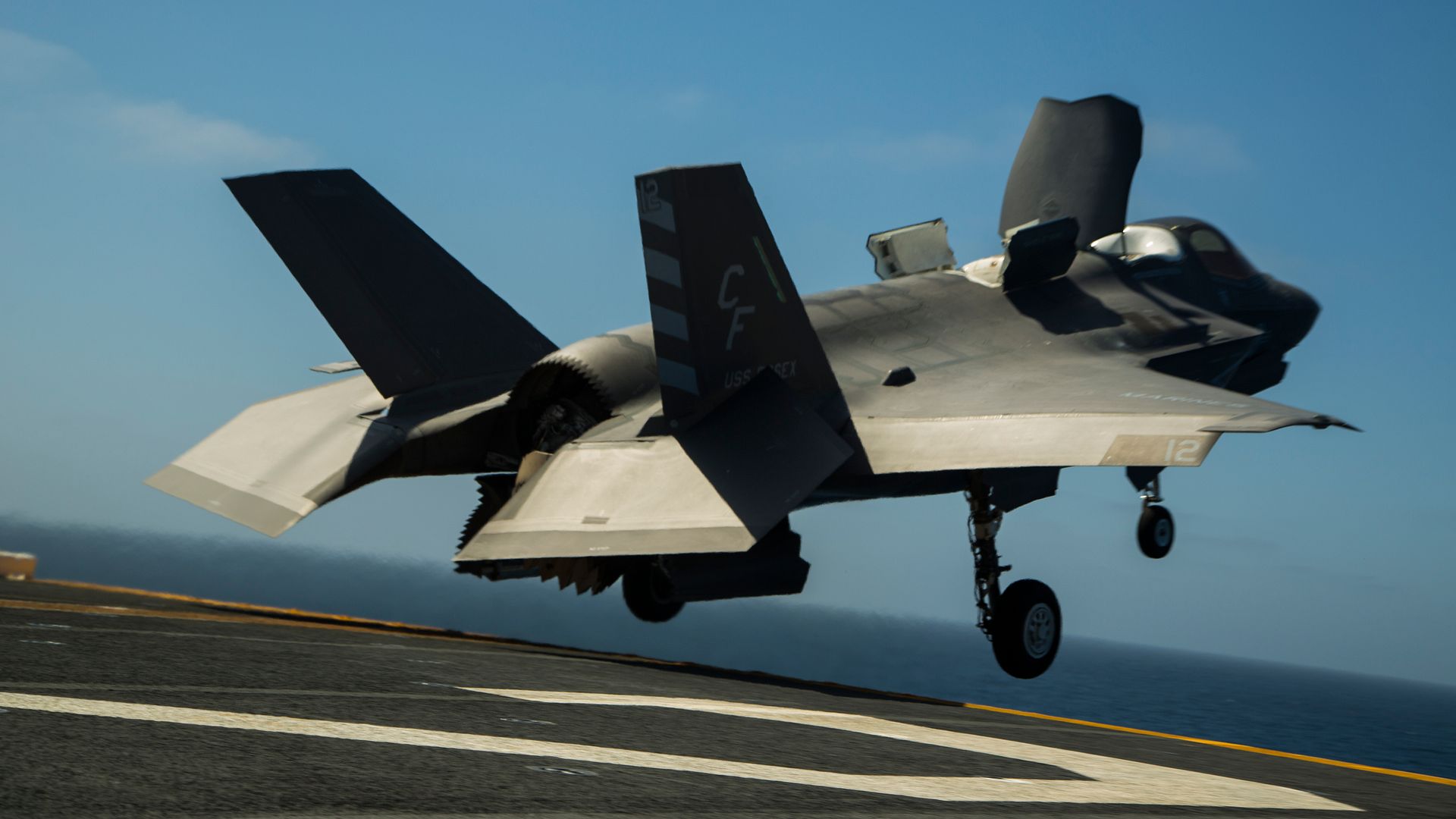
PACIFIC OCEAN (April 2, 2018) An F/A-18F Super Hornet assigned to the "Bounty Hunters" of Strike Fighter Squadron (VFA) 2 makes an arrested landing on the flight deck of Nimitz-class aircraft carrier USS Carl Vinson (CVN 70). The Carl Vinson Carrier Strike Group is operating in the western Pacific as part of a regularly scheduled deployment. (U.S. Navy photo by Mass Communication Specialist 3rd Class Matthew Granito/Released)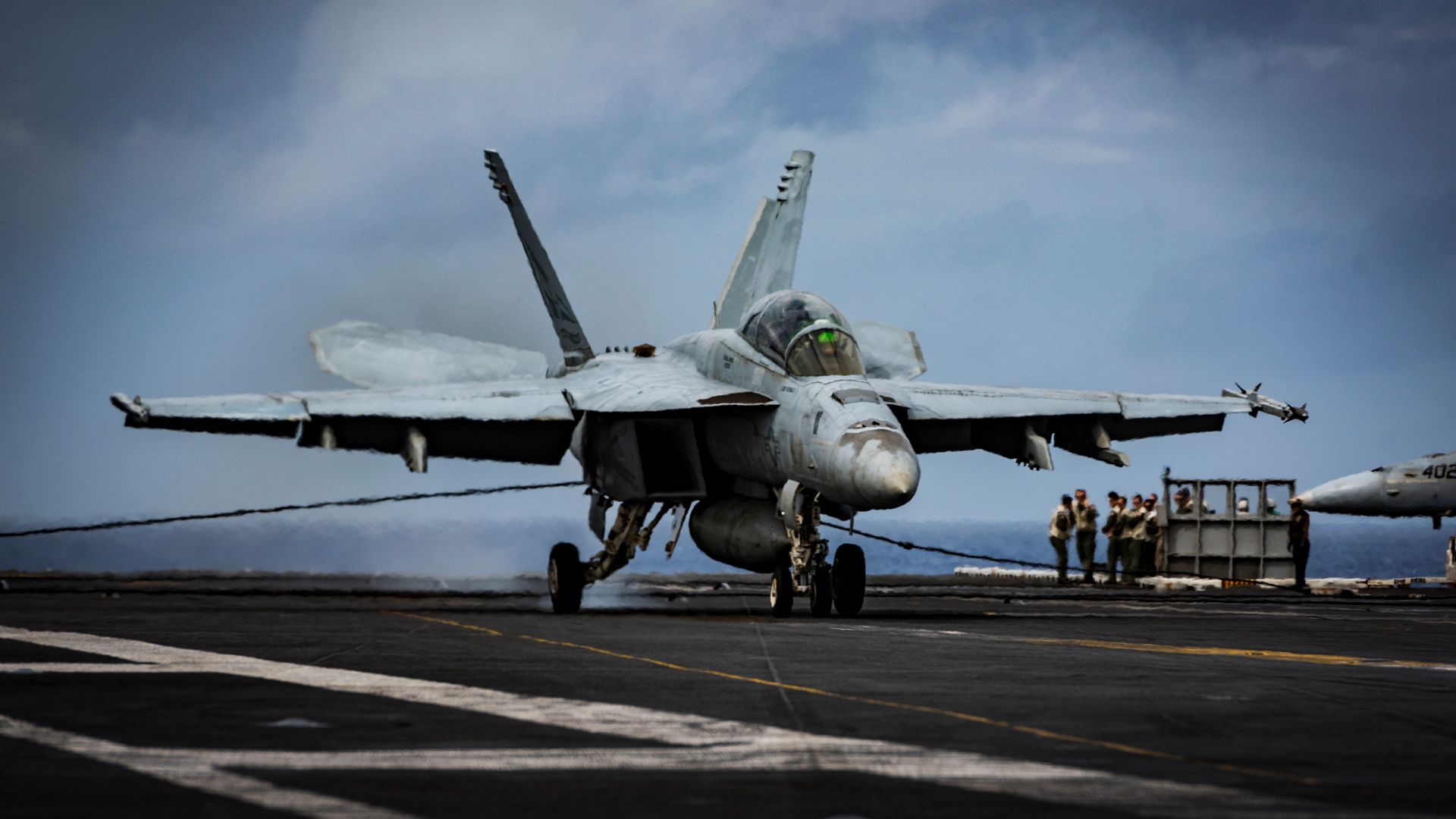
MUMBAI, India, April 4, 2018 /PRNewswire/ -- Boeing (NYSE: BA) and Jet Airways today announced a new order for 75 737 MAX airplanes as India's premier international airline looks to the new and improved 737 jet to power its future growth.
"Our new order for the additional 75 Boeing 737 MAX aircraft will allow us to deliver a differentiated and world class customer experience to our guests," said "Vinay Dube, Chief Executive Officer, Jet Airway. "This additional order reemphasizes our trust and confidence in Boeing and also reaffirms our commitment to operate extremely modern, reliable and fuel efficient aircraft as part of our fleet. Jet Airways' partnership with Boeing goes back 25 years ever since the airline was conceived and took to the skies. This order underscores Jet Airways' commitment to the growth and sustainability of the Indian aviation market"
Jet Airways announced its first order for 75 MAX airplanes in 2015 as part of a strategy to refresh its fleet with the most modern and environmentally progressive airplanes. The newest order adds 75 more MAXs to support the airline's future expansion. Jet Airways is set to take direct delivery of its first MAX airplane later this year.
"We are honored that Jet Airways has again placed its trust in Boeing with its order for 75 more 737 MAXs," said Dinesh Keskar, senior vice president, Asia Pacific & India Sales, Boeing Commercial Airplanes. "These additional 737 MAX airplanes will help Jet Airways continue to be an industry leader by combining a superior passenger experience with reliable and efficient operations."
The 737 MAX is a family of airplanes that offer about 130 to 230 seats with the ability to fly up to 3,850 nautical miles (7,130 kilometers). These jets incorporate the latest CFM International LEAP-1B engines, Advanced Technology winglets, the Boeing Sky Interior, large flight deck displays and other features to deliver the highest efficiency, reliability and passenger comfort in the single-aisle market.
The 737 MAX is the fastest-selling airplane in Boeing history, accumulating more than 4,400 orders from 96 customers worldwide to date. For more information and feature content, visit www.boeing.com/commercial/737max.
About Jet Airways
Jet Airways is India's premier international airline, which operates flights to 65 destinations within India and overseas. Jet Airways' robust domestic India network spans the length and breadth of the country covering metro cities, state capitals and emerging destinations. Beyond India, Jet Airways operates flights to key international destinations in South East Asia, South Asia, Middle East, Europe and North America.
The Jet Airways group currently operates a fleet of 120 aircraft, comprising Boeing 777-300 ERs, Next Generation Boeing 737s, Airbus A330-200/300s and ATR 72-500/600s.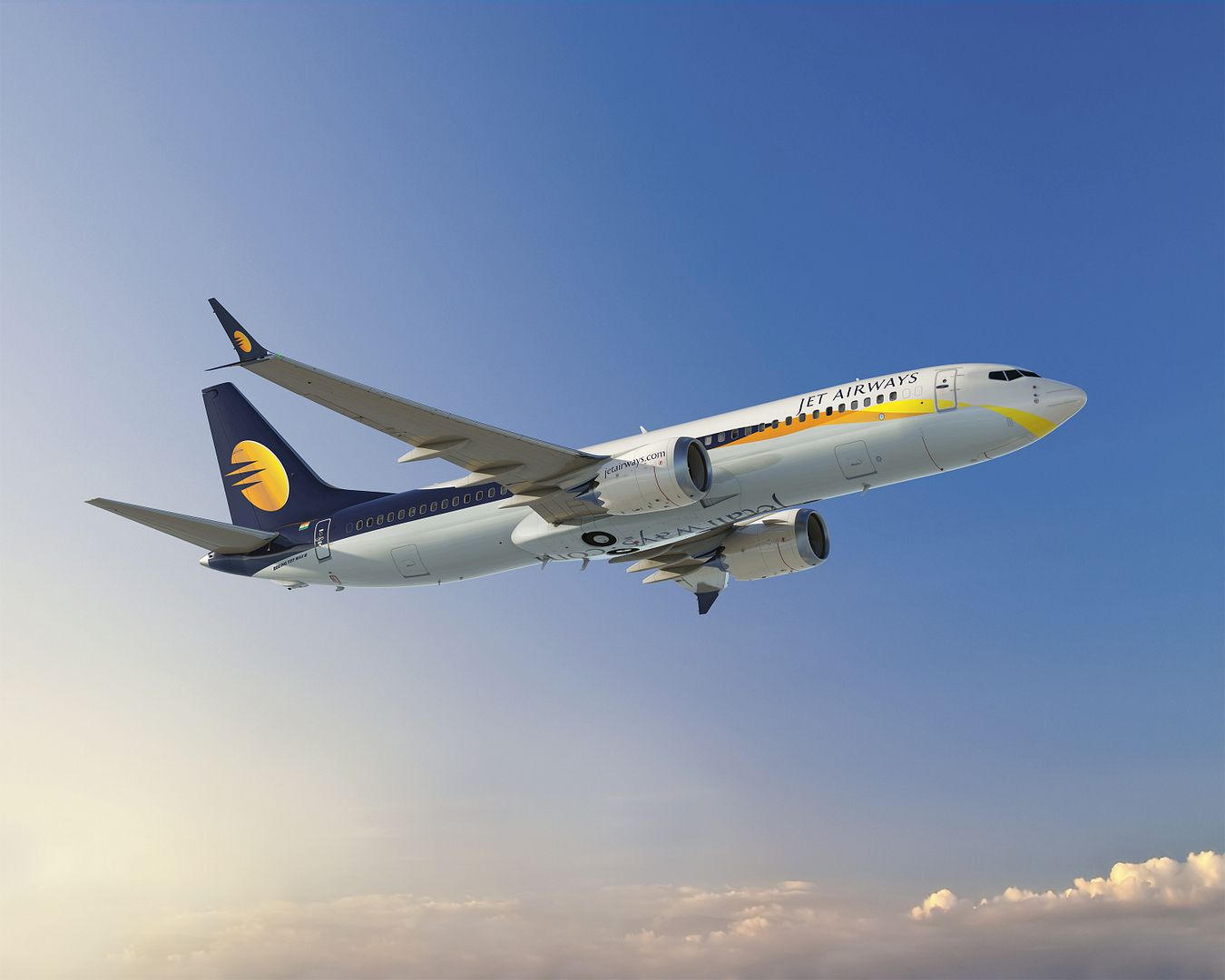
EVERETT, Wash., April 4, 2018 /PRNewswire/ -- Boeing [NYSE: BA] recently achieved a major certification milestone following a successful refueling flight between two KC-46 tankers. The company's tanker program has now completed its required Supplemental Type Certificate (STC) fuel on-load testing.
A Boeing KC-46 tanker refuels a second KC-46, transferring 146,000 pounds of fuel as part of its ?on-load? certification testing. The KC-46?s refueling boom allows it to transfer up to 1,200 gallons of fuel per minute.
During the three-hour, forty-eight minute flight, a KC-46 successfully transferred 146,000 pounds of fuel to a second KC-46, while achieving the maximum fuel off-load rate of 1,200 gallons per minute. Both aircraft took off and landed at Boeing Field, south of Seattle.
For its Federal Aviation Administration STC testing, the KC-46 demonstrated the ability to safely/effectively receive fuel from three other tankers -- KC-46, KC-135 and KC-10 aircraft. As part of the series of tests, KC-46 tankers took on 540,600 pounds of fuel and completed 68 contacts with refueling aircraft.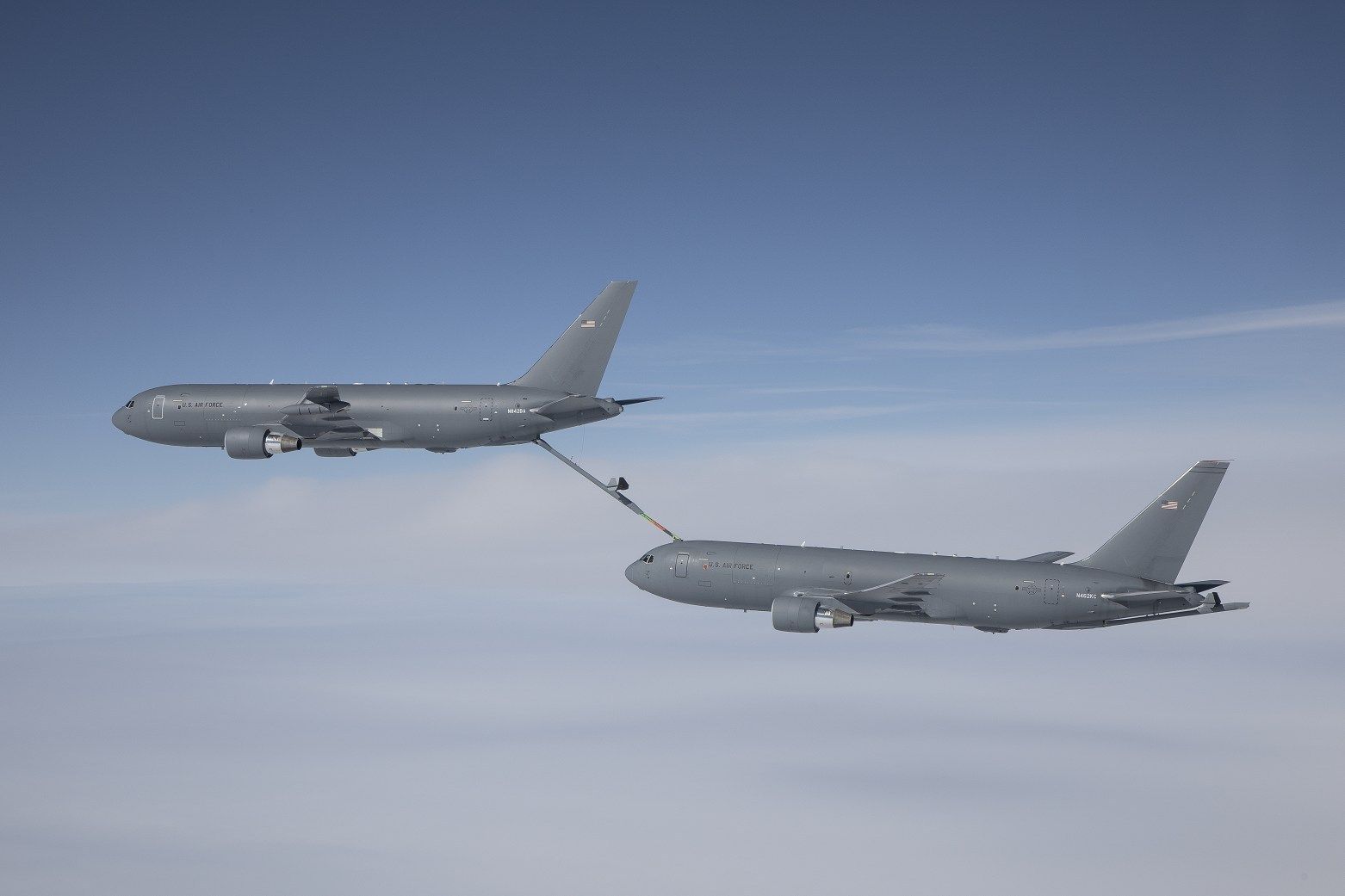
When in service, the KC-46 will refuel U.S., allied and coalition military aircraft using its boom and hose and drogue systems, but also must be able to take on fuel to extend its operational range. The boom allows the tanker to transfer up to 1,200 gallons of fuel per minute, while the hose and drogue systems, located on both the plane's wing and centerline, enables the KC-46 to refuel smaller aircraft with up to 400 gallons of fuel per minute.
A combined Boeing/U.S. Air Force team is currently working to complete the overall STC testing, which encompasses the military systems that are installed on the commercial 767-2C to make it a tanker. To date, the program's test aircraft have completed 2,700 flight hours and more than 2,500 contacts during refueling flights with F-16, F/A-18, AV-8B, C-17, A-10, KC-10 and KC-46 aircraft.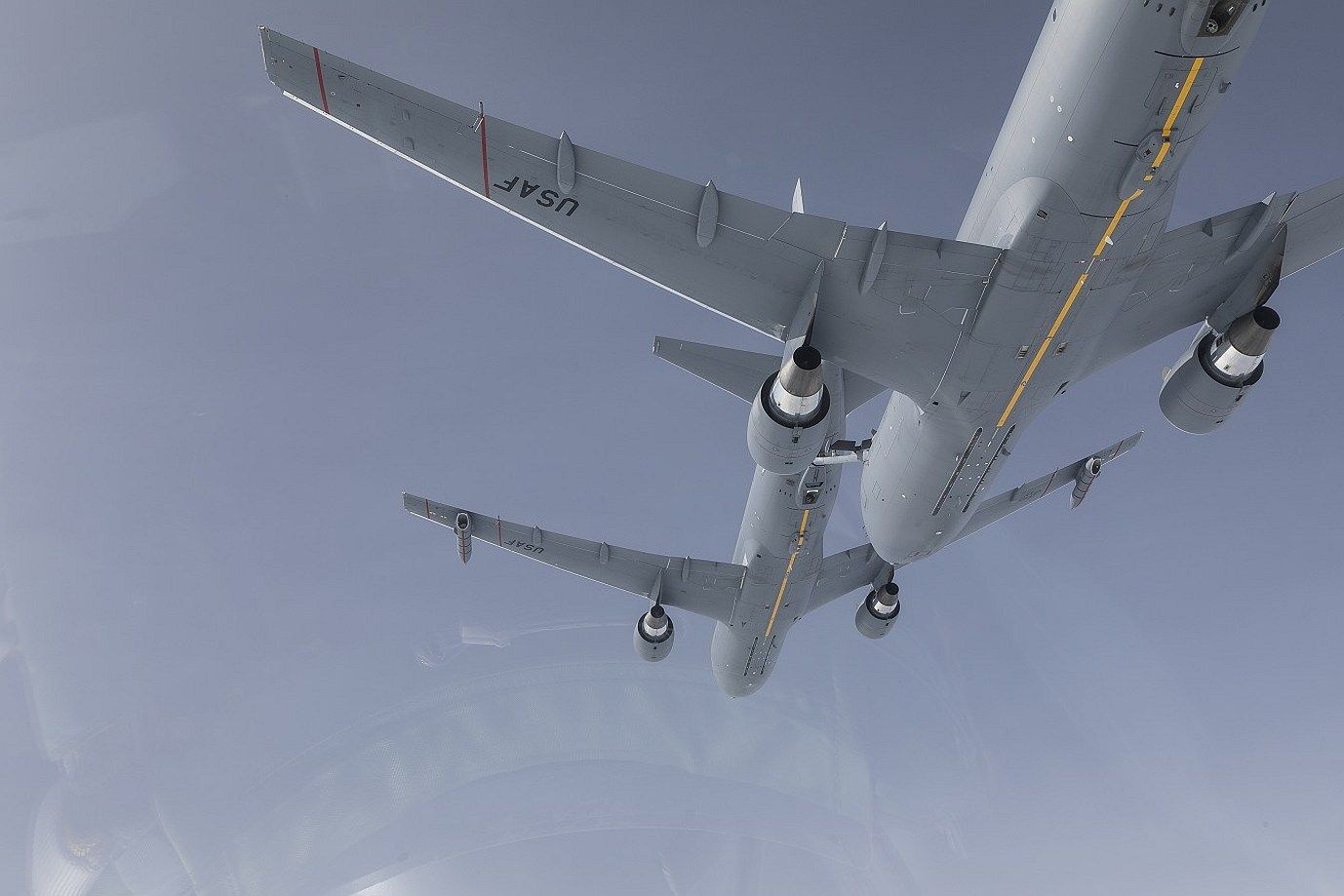
S?o Jos? dos Campos, Brazil, April 4, 2018 ? Embraer and Wider?e, Scandinavia?s largest regional airline, celebrated the delivery of the manufacturer?s first production E190-E2 today at a ceremony at Embraer?s facility in S?o Jos? dos Campos. The Norwegian airline will start flying the new aircraft on domestic routes later this month. The E190-E2 is the first of three new-generation aircraft seating from 80 to 146-seat E-Jets to be introduced through 2021. Wider?e?s E190-E2 is configured with 114 seats in a single-class layout. Wider?e has contracted for up to 15 E-Jets E2s - three firm E190-E2 orders and purchase rights for an additional 12 E2s. The total value of the order is approximately USD 873 million if all rights are exercised. ?The E190-E2 is an impressive aircraft. It is the ideal airplane for Wider?e as we introduce jets for the first time in the company?s 84-year history,? said Stein Nilsen, Chief Executive Officer of Wider?e. ?I am convinced our passengers are going to love the cabin, our operations people are going to embrace the new technology, while our financial collaborators will appreciate the economics the aircraft permits. I believe everyone is going to celebrate with, as the launch customer, the fact that we are the first airline to fly the world?s most environmentally-friendly airplane. With the lowest noise and emissions among aircraft in its category.? ?This is a historic day for the E-Jets program and for Embraer. The delivery of this E2 marks a continuation of a real success story in global aviation. I?m honored that Wider?e - such a respected and experienced airline - is our launch operator? said John Slattery, President & CEO, Embraer Commercial Aviation. ?I?m also delighted to welcome Wider?e as our newest Embraer customer and want to thank Stein and his team for the support over the last year; working together with us as partners to deliver this airplane today. I?m planning on being on the aircraft when it first enters Norwegian airspace next week and really looking forward to that!? The E190-E2 received Type Certification on February 28. It is the first time an aircraft program with the level of complexity of the E2 has received Type Certificates simultaneously from three major worldwide authorities: Brazil?s Civil Aviation Agency (Ag?ncia Nacional de Avia??o Civil ? ANAC), the FAA (the U.S. Federal Aviation Administration) and EASA (European Aviation Safety Agency). The E190-E2 features new ultra-high bypass ratio engines and a completely new wing and landing gear. Compared to the first-generation E190, 75% of the aircraft systems are new. Embraer recently announced some final flight tests results confirming the E2 as the most efficient single-aisle aircraft on the market. In fuel consumption, the E190-E2 proved to be 1.3% better than originally expected, a 17.3% improvement compared to the current- generation E190. The E190-E2 is also the aircraft with the lowest level of external noise and emissions in the segment. Flight test results also confirmed the E190-E2 to be better than its original specification in takeoff performance. The aircraft?s range from airports with hot-and-high conditions, such as Denver and Mexico City, increases by 600 nm compared to current generation aircraft. Its range from airports with short runways, such as London City, also increases by more than 1,000 nm allowing the aircraft to reach destinations like Moscow and the north of Africa. The E190-E2 will also have the longest maintenance intervals among single-aisle aircraft with 10,000 flight hours for basic checks and no calendar limit for typical utilization. This means an additional 15 days of aircraft utilization over ten years compared to current generation E-Jets. Another key gain is with pilot transition training time. Pilots of current-generation E-Jets will need only 2.5 days of training and no full flight simulator to be qualified to fly an E2. Wider?e?s E190-E2 fleet will have the support of the Flight Hour Pool Program which covers more than 300 key rotable components. Embraer?s Flight Hour Pool Program, which currently supports more than 40 airlines worldwide, is designed to allow airlines to minimize their upfront investment in expensive repairable inventories and resources and take advantage of Embraer?s technical expertise and vast component repair service provider network. This results in significant savings in repair and inventory carrying costs, reduction in required warehouse space, and the elimination of resources required for repair management, all while providing guaranteed performance levels. Embraer is the world?s leading manufacturer of commercial jets with up to 150 seats. The Company has 100 customers from all over the world operating the ERJ and the E-Jet families of aircraft. For the E-Jets program alone, Embraer has logged more than 1,800 orders and 1,400 deliveries, redefining the traditional concept of regional aircraft by operating across a range of business applications. Follow us on Twitter: @Embraer About Wider?e Wider?e is the largest regional airline in Scandinavia, with a staff of 3,000 and a turnover of NOK 3.5 billion. The company carries around 2.8 million passengers annually and flies to 46 domestic and international destinations. Wider?e operates more than 450 flights every day and operates to more than twice as many airports in Norway than any other airline. Today our network consists of 60% commercial routes, and 40% PSO routes (Public Services Obligations). About the E-Jets E2s E-Jets E2s represent the best of new technology in a proven platform. The application of advanced technologies for engines, wings, and avionics sets the E2s apart by providing airlines with the most efficient aircraft in the category while maintaining commonality with current-generation E-Jets. Enhancements include new aerodynamically-advanced high-aspect ratio distinctively-shaped wings, improved systems and avionics, 4th generation full fly-by-wire flight controls, and Pratt & Whitney?s PurePowerTM Geared Turbofan high by-pass ratio engines (PW1700G on the E175-E2, PW1900G on the E190-E2 and E195-E2). These combine to generate the most efficient single aisle family with double-digit reductions in fuel consumption, emissions, noise, and maintenance costs, as well greater productivity through less scheduled maintenance downtime. E-Jets E2s will achieve similar costs per seat as larger re-engined narrow-body aircraft, but with significantly lower costs per trip. These savings will create new opportunities for lower-risk development of new markets and fleet right-sizing. The E195-E2 is scheduled to enter into service in 2019 and the E175-E2 in 2021.
News Article / April 4, 2018
By Captain Jennifer Howell
The freshly-painted 2018 CF-18 Demonstration Team jet was towed into a 4 Wing Cold Lake, Alberta, hangar on a sunny April 3 afternoon in front of an eager crowd.
?Wow? oh wow,? said Captain Stefan Porteous.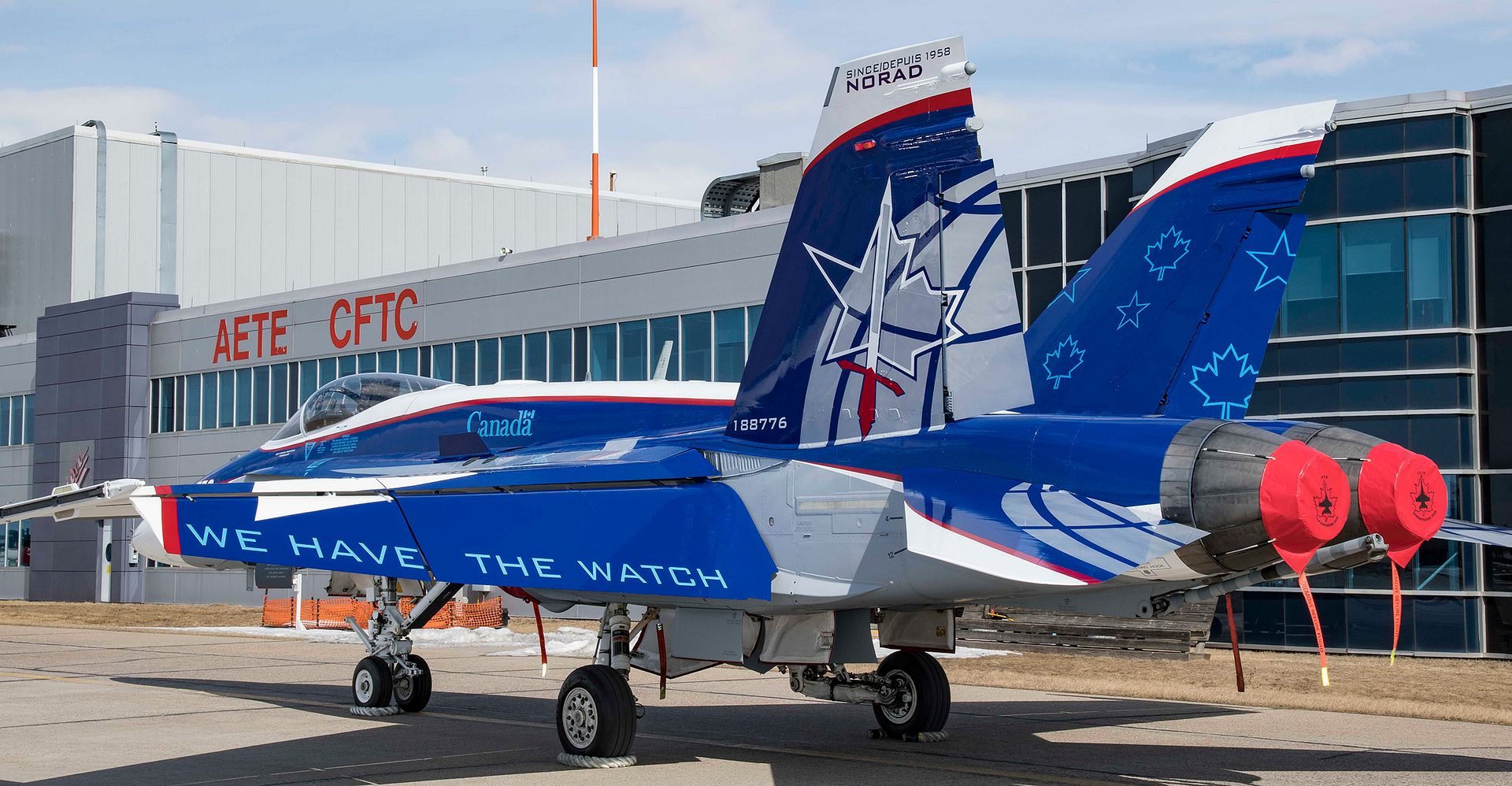
This was the first time he?d seen the finished CF-18 Hornet that he?ll spend the summer flying for air show audiences across North America and the United Kingdom.
?I?d only seen the teaser photos we posted about a month ago,? he said, smiling, with the bright blue, white, red and grey jet behind him.
During his address to the crowd, Captain Porteous introduced his maintenance and safety pilot team and thanked the army of people it took to get ready for the 2018 season.
?I realize that a staggering amount of work has gone into completing the paint job and preparing the aircraft for the show season,? he said. ?I think that everyone here today, as well as those following this unveil live online, would agree with me when I say that you have done an outstanding job!?
Brigadier-General Sean Boyle, the deputy commander of 1 Canadian Air Division, also attended the much-anticipated unveiling of the ?NORAD 60? paint scheme, which honours this year?s 60th anniversary of the NORAD agreement.
?NORAD is a unique example of the depth and breadth of the Canadian and U.S. partnership in the common defense of our continent,? he said. ?It is a relationship built on trust, mutual benefit, and a mutual respect for sovereignty. Our collaborative relationship is one of the closest and most extensive in history.?
Brigadier-General Boyle went on to thank the team at 1 Air Maintenance Squadron who, under the direction of designers Captain Jeff Chester and Mr. Jim Beliveau, brought the design to life.
The CF-18 Demo Team now moves to 19 Wing Comox, British Columbia, to fine tune the routine before the first airshow on May 4, 2018. Click here to see the schedule of the Demo Team?s 2018 appearances.
PHOTO's: Corporal Justin Roy
SAN DIEGO (March 30, 2018) Two KC-130J Super Hercules aircrafts assigned to Marine Aerial Refueler Transport Squadron (VMGR) 352, Marine Aircraft Group 11, 3rd Marine Aircraft Wing (3rd MAW), conduct a ceremonial formation flight for the VMGR-352 75th anniversary above Marine Corps Air Station Miramar, Calif. The squadron held a battle color ceremony, which consisted of a reading of the unit's citations and awards, a color guard, performance by the 3rd MAW band and a ceremonial formation flight. (U.S. Marine Corps photo by Lance Cpl. Clare J. McIntire/Released)
-
 Main AdminPACIFIC OCEAN (April 4, 2018) An F/A-18E Super Hornet assigned to the Kestrels of Strike Fighter Squadron (VFA) 137 makes an arrested landing on the flight deck of the Nimitz-class aircraft carrier USS Carl Vinson (CVN 70). The Carl Vinson Carrier Strike Group is operating in the western Pacific as part of a regularly scheduled deployment. (U.S. Navy photo by Mass Communication Specialist 2nd Class Sean M. Castellano/Released)
Main AdminPACIFIC OCEAN (April 4, 2018) An F/A-18E Super Hornet assigned to the Kestrels of Strike Fighter Squadron (VFA) 137 makes an arrested landing on the flight deck of the Nimitz-class aircraft carrier USS Carl Vinson (CVN 70). The Carl Vinson Carrier Strike Group is operating in the western Pacific as part of a regularly scheduled deployment. (U.S. Navy photo by Mass Communication Specialist 2nd Class Sean M. Castellano/Released)
PACIFIC OCEAN (April 4, 2018) An F/A-18C Hornet assigned to the "Blue Blasters" of Strike Fighter Squadron (VFA) 34 takes off from the flight deck of Nimitz-class aircraft carrier USS Carl Vinson (CVN 70). Carl Vinson Strike Group is currently operating in the Pacific as part of a regularly scheduled deployment. (U.S. Navy photo by Mass Communication Specialist 2nd Class Sean M. Castellano/Released)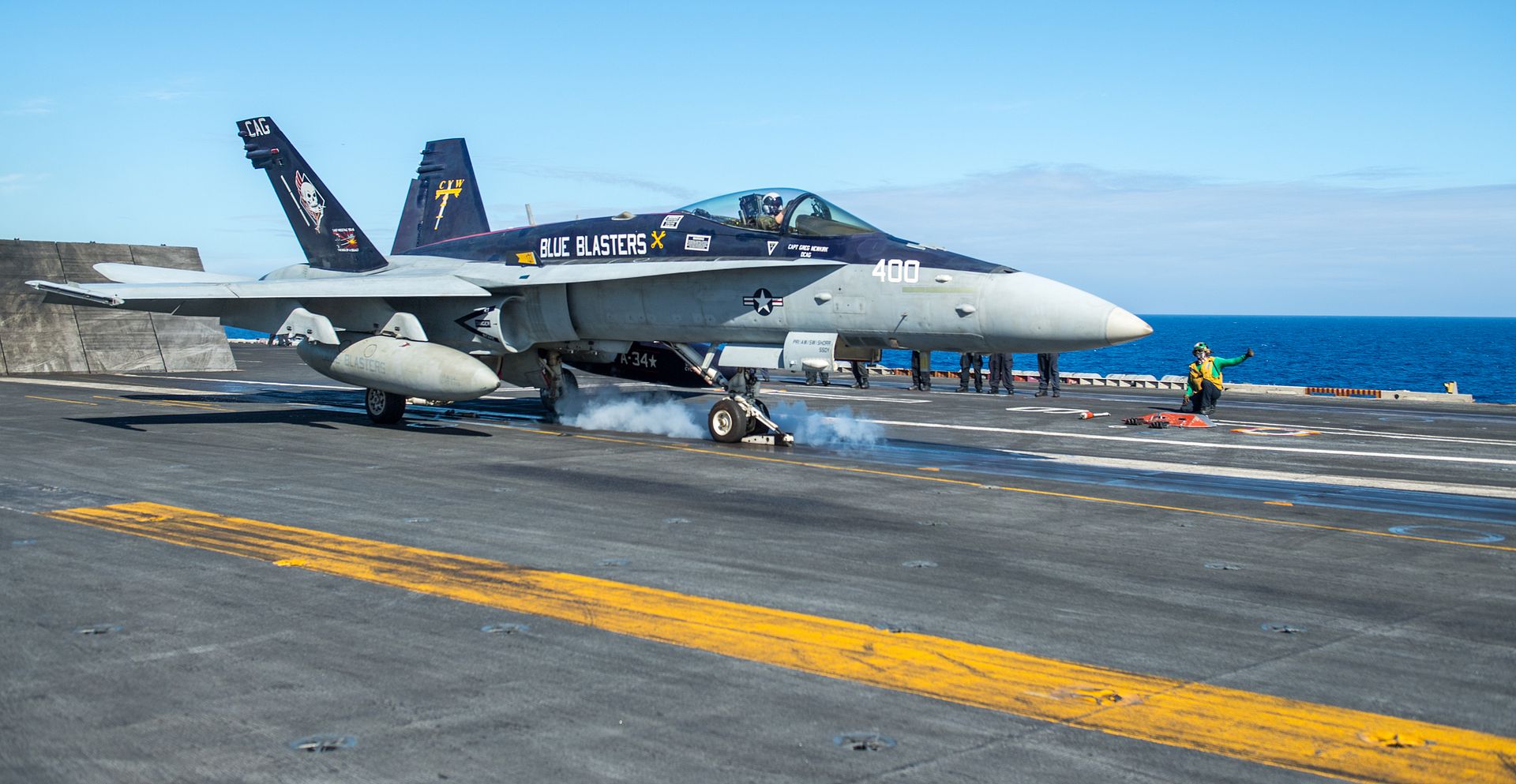
April 5, 2018 Montr?al Commercial Aircraft, Press Release
Bombardier Commercial Aircraft announced today that Bombardier Services Corporation and PSA Airlines, Inc. (PSA Airlines) of Vandalia, Ohio recently signed a three-year extension to the parties? heavy maintenance agreement. Under this contract, heavy maintenance tasks for the airline?s fleet of Bombardier CRJ200, CRJ700 and CRJ900 aircraft will be performed at Bombardier?s West Virginia Air Center. Bombardier has conducted heavy maintenance for PSA Airlines since 2005.
PSA Airlines, a wholly owned subsidiary of American Airlines Group operates a fleet comprised exclusively of 126 CRJ regional jets. The airline operates the aircraft under the American Eagle regional brand.
?PSA has seen tremendous growth over the past four years. We have tripled the size of our fleet and are well underway to our planned fleet of 150 CRJ aircraft. Our confidence in the West Virginia AirCenter simplified our decision to extend our partnership,? said Gary Pratt, Vice President, Maintenance and Engineering, PSA Airlines. ?Bombardier?s expertise and dedicated support in maintaining our fleet of CRJ aircraft provides us with significant value as we work to exceed safety and reliability expectations of our partners, employees, and customers.?
?We are very proud of this new agreement with PSA Airlines and thank the airline for once again selecting Bombardier to provide heavy maintenance for its fleet,? said Todd Young, Vice President and General Manager, Customer Services and Q400 Aircraft Program, Bombardier Commercial Aircraft. ?This vote of confidence in the service that we are providing underscores the value that our customers are receiving via the Bombardier FlightAdvantage ? the portfolio under which we are delivering maintenance, material, support and training services to support the global fleet of Bombardier commercial aircraft.?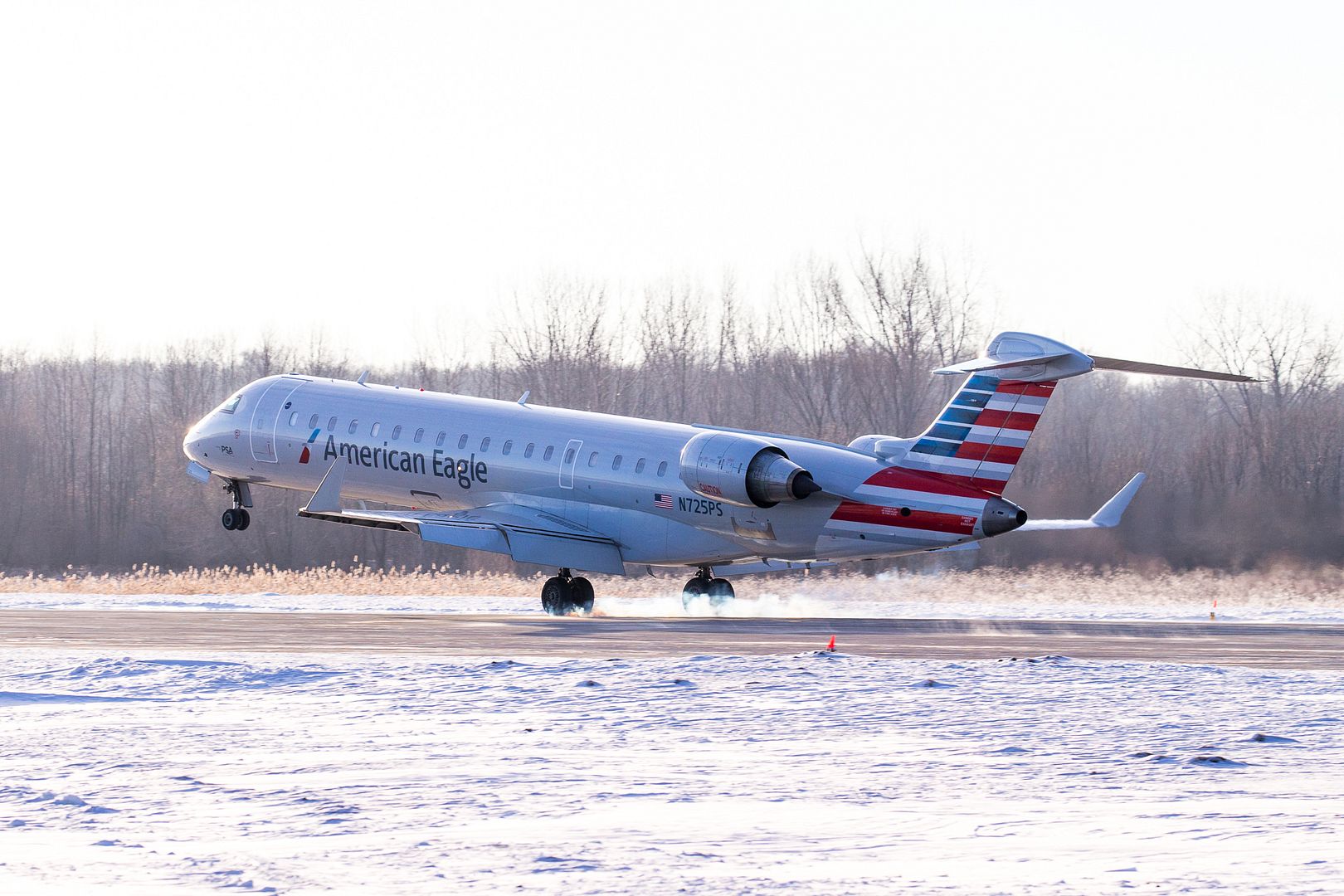
-
 Main AdminThe F-35B Lighting II sits in a hanger on MacDill Air Force Base, Fla. April 4, 2018. The purpose of the visit was to inform CENTCOM senior leaders of the capabilities of the aircraft and how it meets the demands of the complex CENTCOM environment. (Marine Corps Photo by Lance Cpl. Taryn Escott/released)
Main AdminThe F-35B Lighting II sits in a hanger on MacDill Air Force Base, Fla. April 4, 2018. The purpose of the visit was to inform CENTCOM senior leaders of the capabilities of the aircraft and how it meets the demands of the complex CENTCOM environment. (Marine Corps Photo by Lance Cpl. Taryn Escott/released)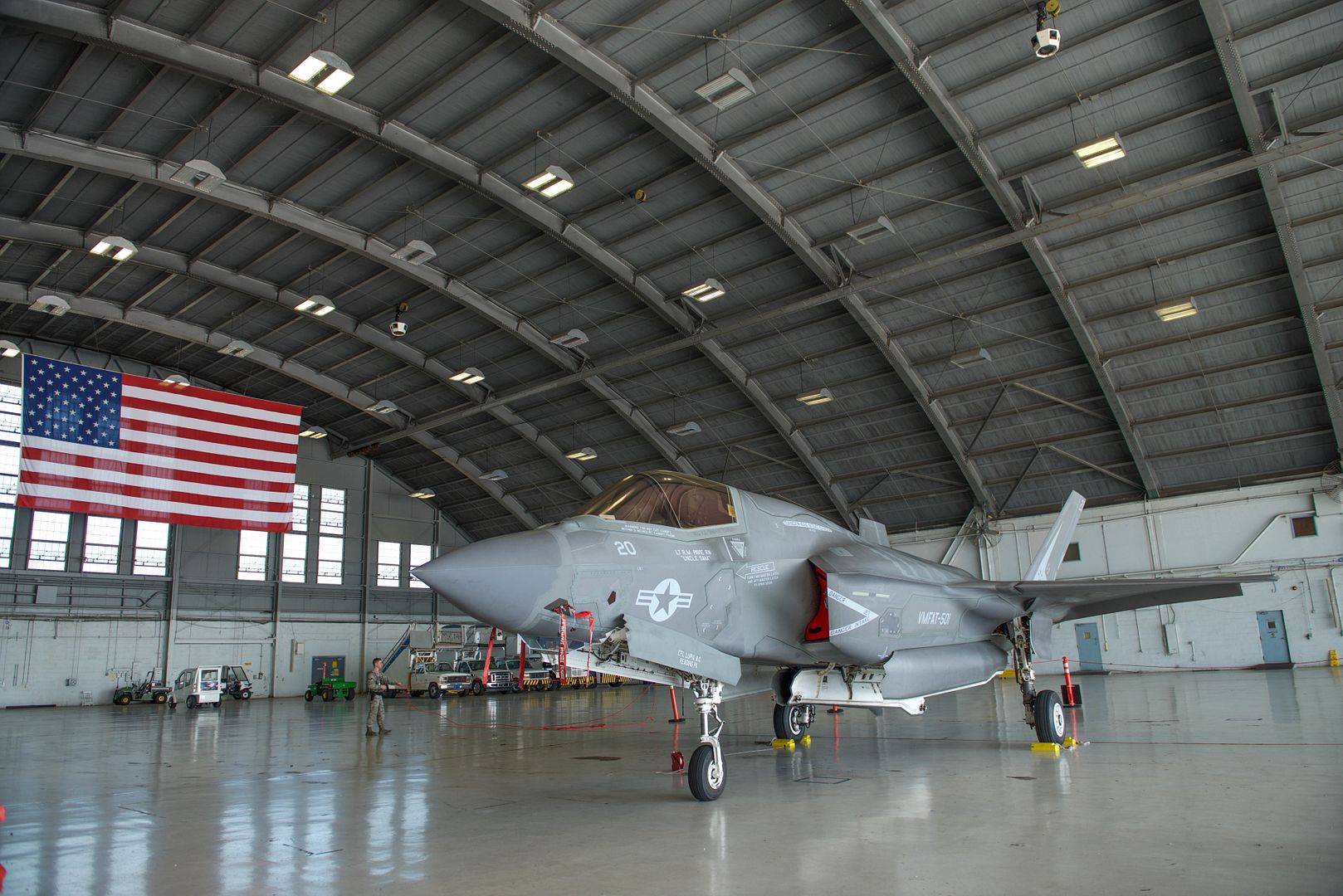
MARIETTA, Ga., April 6, 2018 /PRNewswire/ -- Lockheed Martin (NYSE: LMT) delivered the first HC-130J Combat King II combat search and rescue tanker to the California Air National Guard on April 5 at the company's site here.
This HC-130J will be operated by the 129th Rescue Wing (RQW) at Moffett Air National Guard Base, California. The 129th RQW currently operates a fleet of MC-130P Combat Shadow aircraft, which will be replaced by four new HC-130Js, and a fleet of HH-60G Pave Hawk rescue helicopters, which are built by Lockheed Martin's Sikorsky business in Stratford, Connecticut.
Like others in the U.S. Air Force Rescue community, the 129th RQW lives by the motto, "These Things We Do, That Others May Live," which reflects its mission of supporting combat search and rescue anywhere in the world. The 129th also performs a wide variety of civilian search and rescue missions, including distressed persons aboard ships, lost or injured hikers, and medical evacuations.
"The 129th Rescue Wing has long relied on its MC-130Ps to exemplify the National Guard's commitment to being, 'Always Ready, Always There,'" said George Shultz, vice president and general manager, Air Mobility & Maritime Missions at Lockheed Martin. "The arrival of these new HC-130Js ensure these Airmen will have the increased power, enhanced capabilities and proven performance that will continue to help save lives ? in California, throughout the Pacific region and around the world."
The HC-130J is the only dedicated fixed-wing personnel recovery platform in the Air Force and Air National Guard inventory. The HC-130J supports missions in all-weather and geographic environments, including reaching austere locations. The HC-130J is also tasked for airdrop, airland, and helicopter air-to-air refueling and forward-area ground refueling missions. It also supports humanitarian aid operations, disaster response, security cooperation/aviation advisory, emergency aeromedical evacuation and noncombatant evacuation operations.
The HC-130J is one of eight production variants of the C-130J Super Hercules, the current production model of the legendary C-130 Hercules aircraft. With more than 400 aircraft delivered, the C-130J is the airlifter of choice for 18 nations, with more than 1.7 million flight hours of experience supporting almost any mission requirement ? any time, any place.
The U.S. government operates the largest C-130J Super Hercules fleet in the world. This delivery continues the U.S. government's transition to the C-130J as the common platform across Air Mobility Command, Air Force Special Operations Command, Air Combat Command, U.S. Coast Guard and U.S. Marine Corps. The Air National Guard and Air Force Reserve Command currently operate a mixed fleet of C-130J and older Hercules aircraft.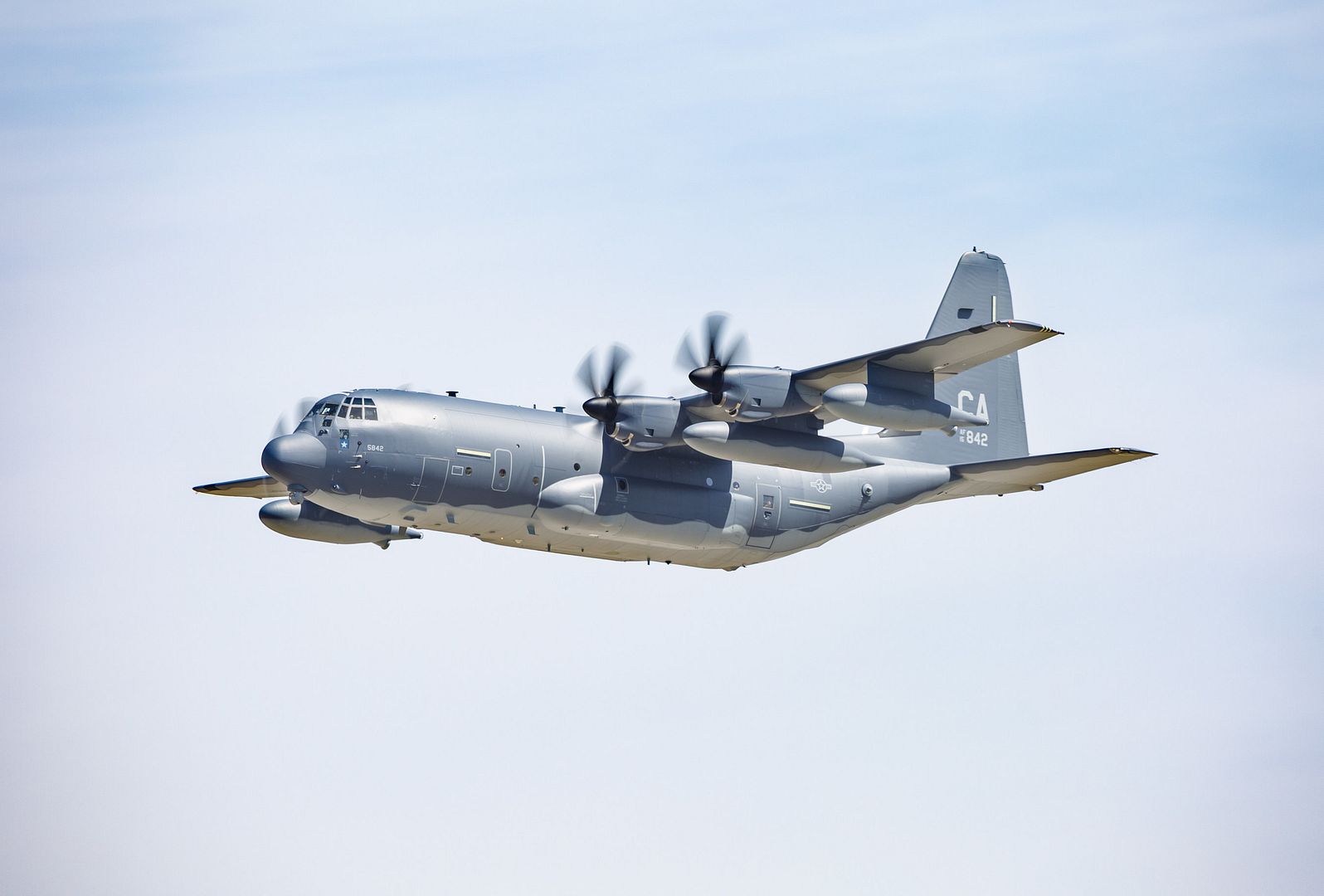
-
 Main AdminA U.S. Air Force B-52H Stratofortress, assigned to the 20th Expeditionary Bomb Squadron, deployed from Barksdale Air Force Base, La., approaches the flightline at Royal Australian Air Force (RAAF) Base Darwin, Australia, April 6, 2018. Two U.S. Air Force bombers visited the base in Australia?s Northern Territory to support the U.S. Pacific Command's Enhanced Air Cooperation (EAC) initiative in cooperation with RAAF joint terminal attack controller teams. The EAC comprises a range of air exercises and training activities designed to enhance regional cooperation, coordination and interoperability between Australian and U.S. service members. (U.S. Air Force photo's by Staff Sgt. Alexander W. Riedel)
Main AdminA U.S. Air Force B-52H Stratofortress, assigned to the 20th Expeditionary Bomb Squadron, deployed from Barksdale Air Force Base, La., approaches the flightline at Royal Australian Air Force (RAAF) Base Darwin, Australia, April 6, 2018. Two U.S. Air Force bombers visited the base in Australia?s Northern Territory to support the U.S. Pacific Command's Enhanced Air Cooperation (EAC) initiative in cooperation with RAAF joint terminal attack controller teams. The EAC comprises a range of air exercises and training activities designed to enhance regional cooperation, coordination and interoperability between Australian and U.S. service members. (U.S. Air Force photo's by Staff Sgt. Alexander W. Riedel)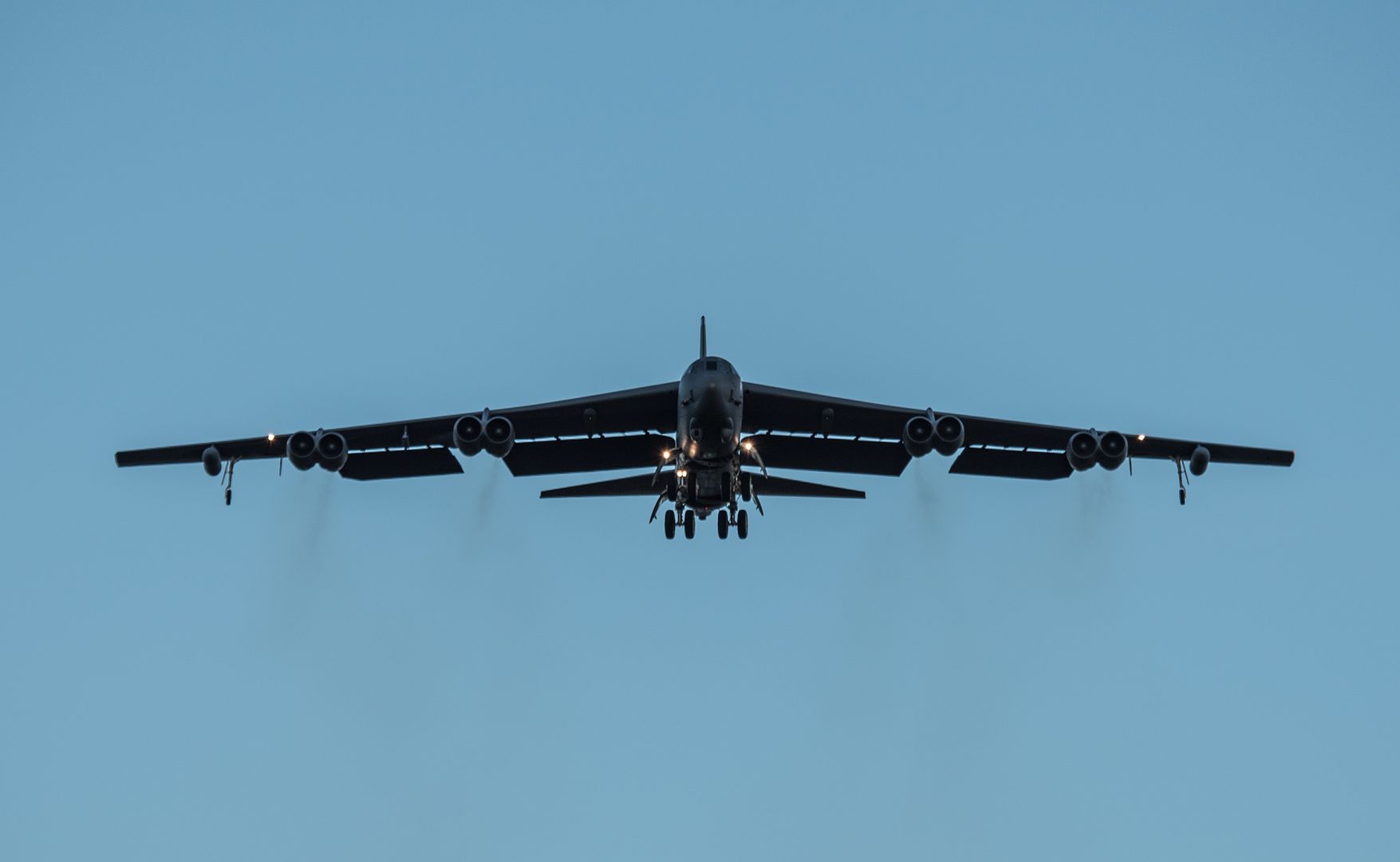

A U.S. Air Force F-35A Lightning II with the 419th Fighter Wng assigned to Hill Air Force Base, Utah, is refueled by a KC-10 Extender with the 78th Air Refueling Squadron located at Joint Base McGuire-Dix-Lakehurst, N.J., April 6, 2018. The 514th is an Air Force Reserve Command unit located at Joint Base McGuire-Dix-Lakehurst.(U.S. Air Force photo's by Staff Sgt. Michael Ki Hong)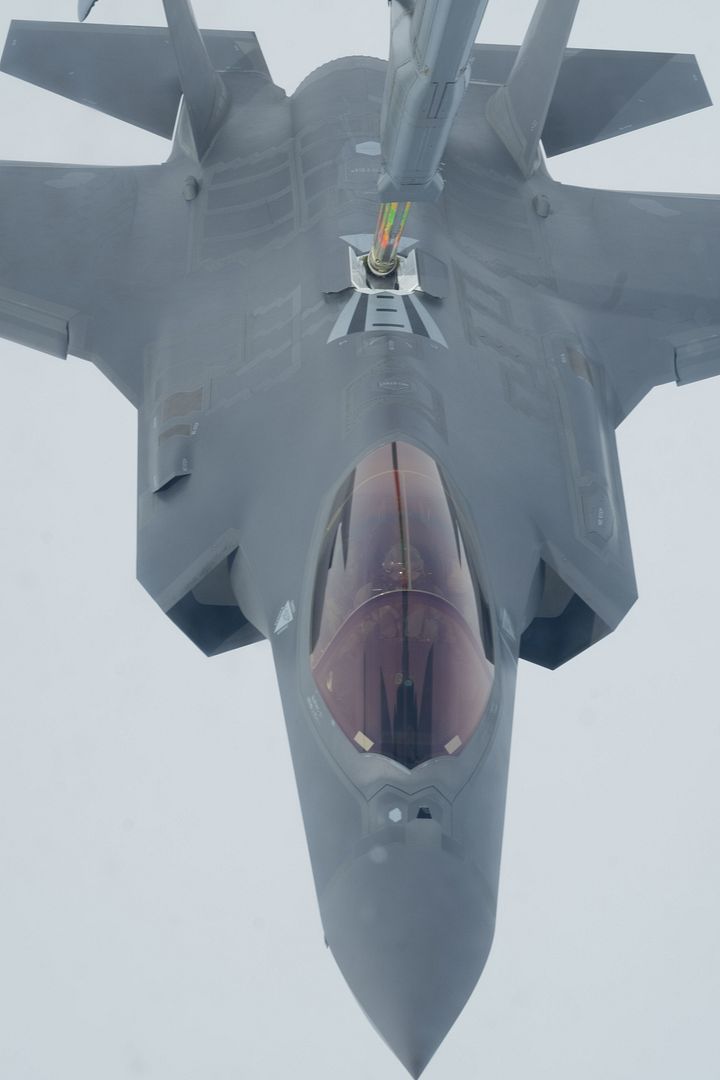
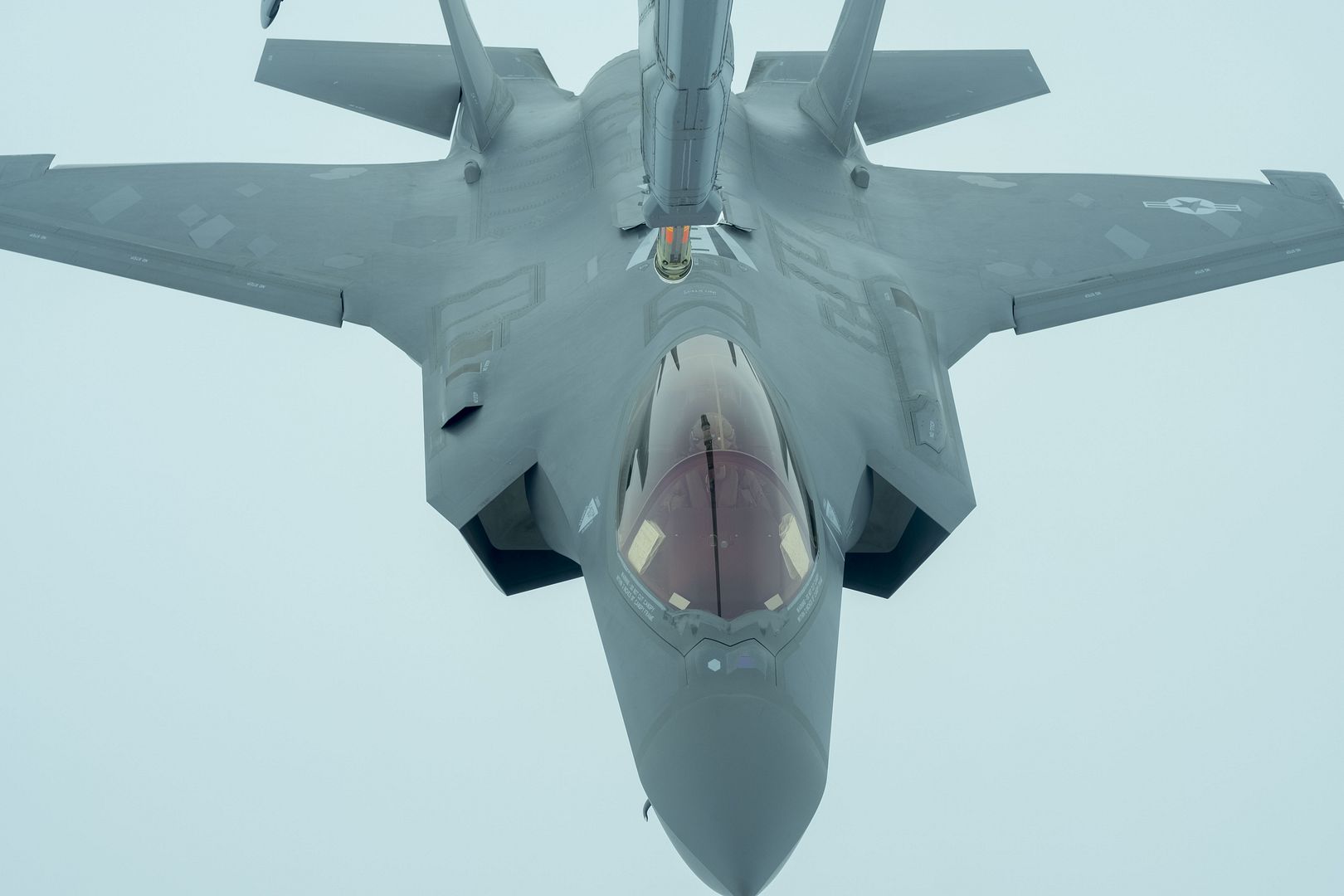

SEATTLE, April 6, 2018 /PRNewswire/ -- Boeing [NYSE:BA] and American Airlines today announced the world's largest airline will more than double its 787 Dreamliner fleet with a new order for 47 of the super-efficient airplane plus 28 options. The 47 787s are valued at more than $12 billion at list prices and makes American Airlines the largest 787 customer in the Western Hemisphere.
Boeing and American Airlines today announced the world?s largest airline will more than double its 787 Dreamliner fleet with a new order for 47 of the super-efficient airplane plus 28 options. This rendering shows the airplanes in the carrier's livery. (Boeing illustration)
American originally ordered 42 787 Dreamliners and has been using the airplanes' tremendous fuel efficiency and superior passenger amenities to open new routes around the world, including Asia Pacific and Europe, and boost its network efficiency. While American still has more airplanes on the way from its initial order, the airline is buying the additional Dreamliners ? 22 787-8s and 25 787-9s ? to further modernize and expand its fleet.
"We are extremely honored that American Airlines, is deepening its commitment to the 787 Dreamliner. This new order is a powerful endorsement of the 787 family's unique passenger appeal and unmatched ability to help airlines open new routes and grow profitably," said Boeing Commercial Airplanes President and CEO Kevin McAllister.
Built with lightweight composite materials and powered by advanced engines, the Dreamliner family lowers operating costs by more than 20 percent compared to previous airplanes, and nearly 10 percent compared to today's competing jets.
American becomes the latest airline to place a repeat order for the 787 Dreamliner. More than half of the program's 71 customers have done so, which has helped the 787 program achieve more than 1,350 orders to date.
"We are showing again and again that the 787 Dreamliner is the champion in its class. The airplane's tremendous value proposition explains why it has become the fastest selling twin-aisle jet in history," said Ihssane Mounir, senior vice president of Commercial Sales & Marketing for The Boeing Company. "And when we match the Dreamliner with Boeing's suite of services, it is a combination that delivers unbeatable value for our customers."
Boeing's Global Services division provides American Airlines with efficiency tools such as Airplane Health Management and Toolbox, which help the airline improve operational performance and improve dispatch reliability.
The 787-8 Dreamliner can fly 242 passengers up to 7,355 nautical miles (13,620 km) in a typical two-class configuration. The 787-9, a stretch of the 787-8, can fly 290 passengers up to 7,635 nautical miles.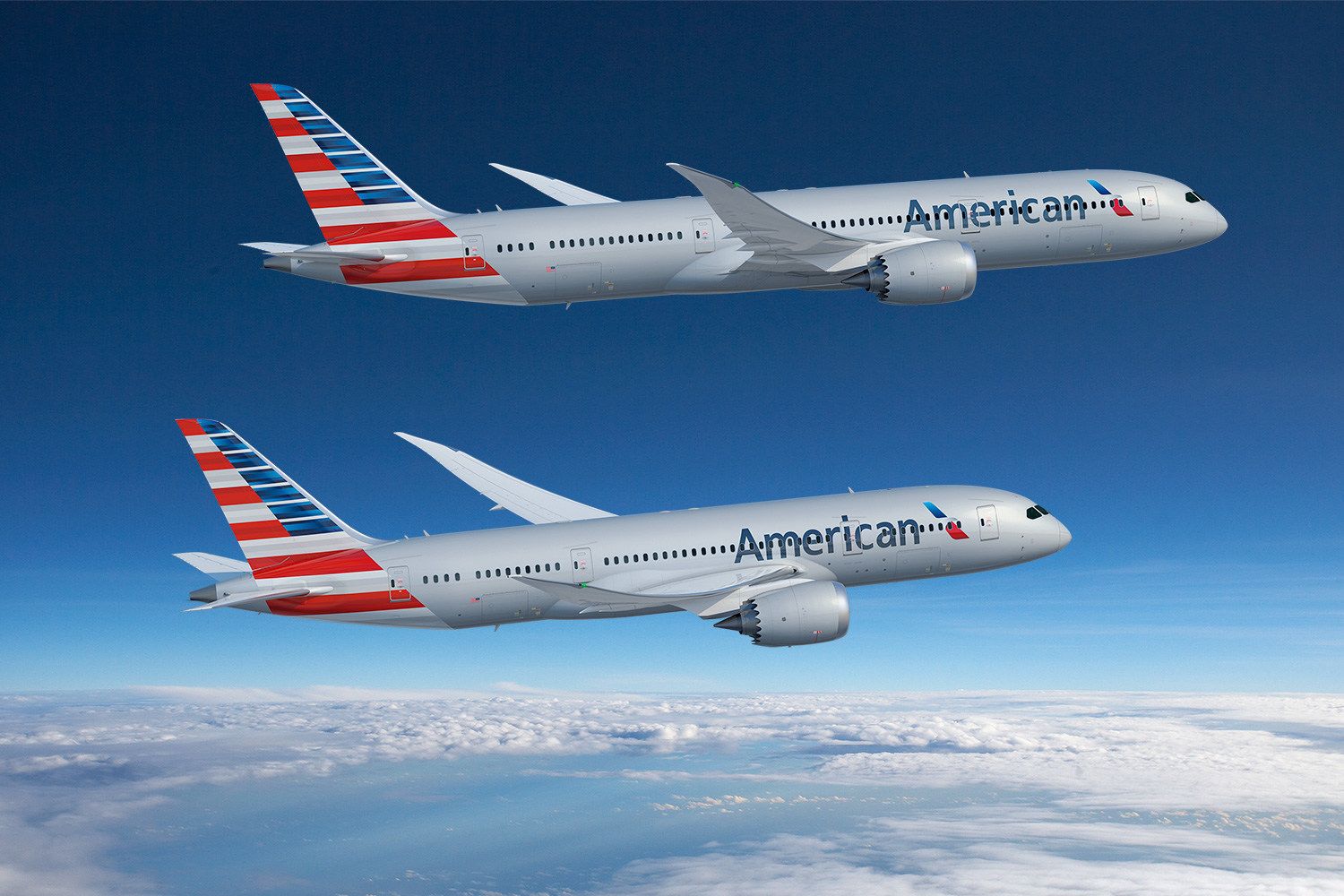
-
 Main AdminA CH-47 Chinook flies overhead during the Japanese Amphibious Rapid Deployment Brigade?s unit-activation ceremony at Camp Ainoura, Japan, April 7, 2018. The 31st Marine Expeditionary Unit supported the ceremony with a fast rope demonstration from a CH-53E Super Stallion. As the Marine Corps? only continuously forward-deployed MEU, the 31st MEU provides a flexible force ready to perform a wide range of military operations throughout the Indo-Pacific region. (U.S. Marine Corps photo by Lance Cpl. Amy Phan/Released)
Main AdminA CH-47 Chinook flies overhead during the Japanese Amphibious Rapid Deployment Brigade?s unit-activation ceremony at Camp Ainoura, Japan, April 7, 2018. The 31st Marine Expeditionary Unit supported the ceremony with a fast rope demonstration from a CH-53E Super Stallion. As the Marine Corps? only continuously forward-deployed MEU, the 31st MEU provides a flexible force ready to perform a wide range of military operations throughout the Indo-Pacific region. (U.S. Marine Corps photo by Lance Cpl. Amy Phan/Released)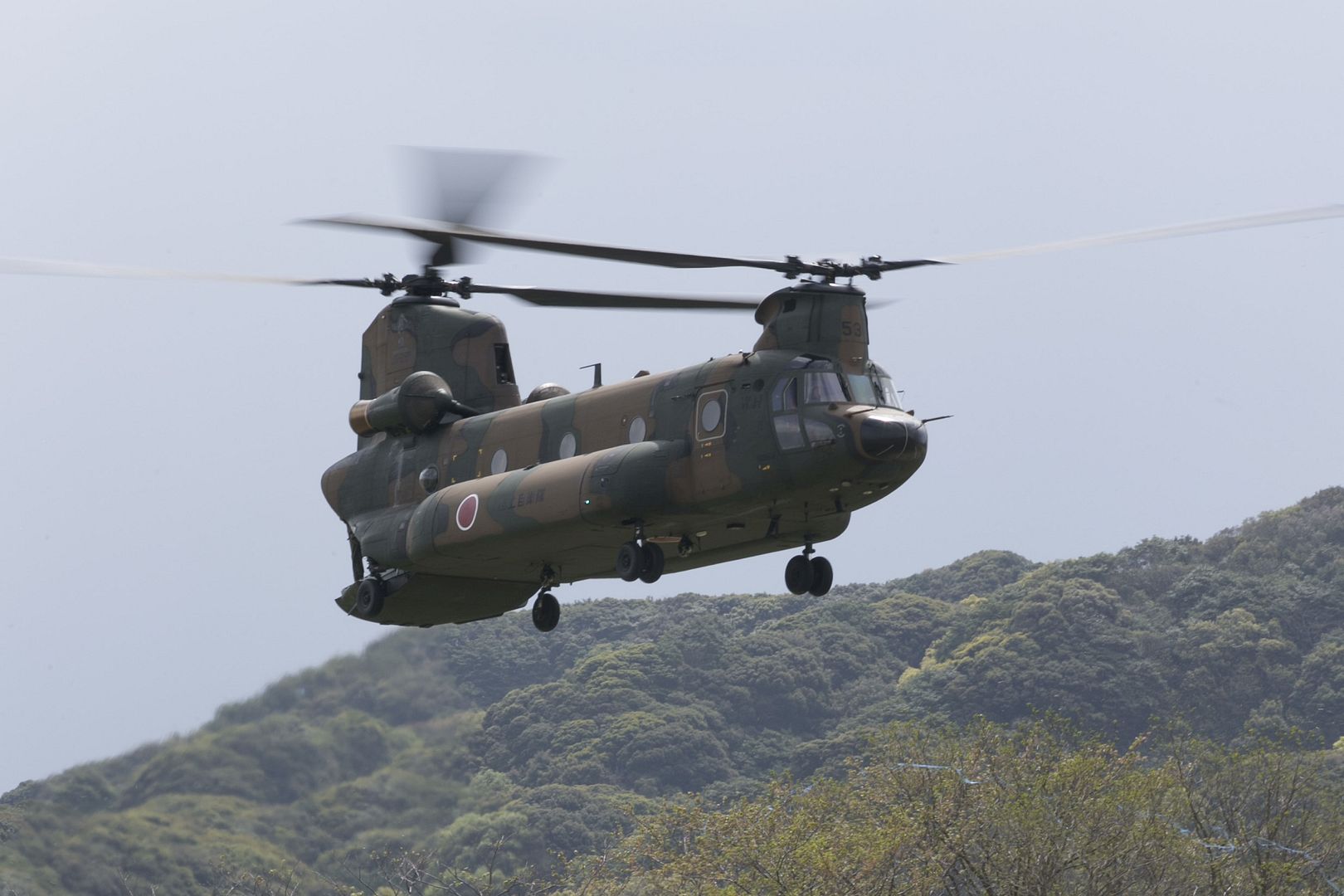
A C-17 Globemaster III aircraft flies over the N.C. coast line on the way to the North Carolina Air National Guard Base, Charlotte Douglas International Airport, April 7, 2018. The airframes homecoming will be marked by an Acceptance Ceremony. The 145th Airlift Wing (AW) was selected to transition from the C-130 Hercules aircraft to the C-17 Globemaster III aircraft 18 months ago, and the airframe will carry the units airlift mission into the future. The first two aircraft of eight to come to the 145th AW were previously assigned to the active duty wings at Joint Base Charleston, S.C. or Joint Base Lewis-McChord, Wash.
Photo by Tech. Sgt. Julianne Showalter
U.S. Air Force Maj. Paul ?Loco? Lopez, Air Combat Command F-22 Raptor Demonstation Team commander, flies the F-22 Raptor, demonstrating its combat capabilities at FIDAE (Feria Internacional del Aire y del Espacio) in Santiago, Chile, April 7, 2018. The Raptor is a multirole fighter capable of supporting both air-to-air and air-to-ground missions worldwide.
Photo by Senior Airman Kaylee Dubois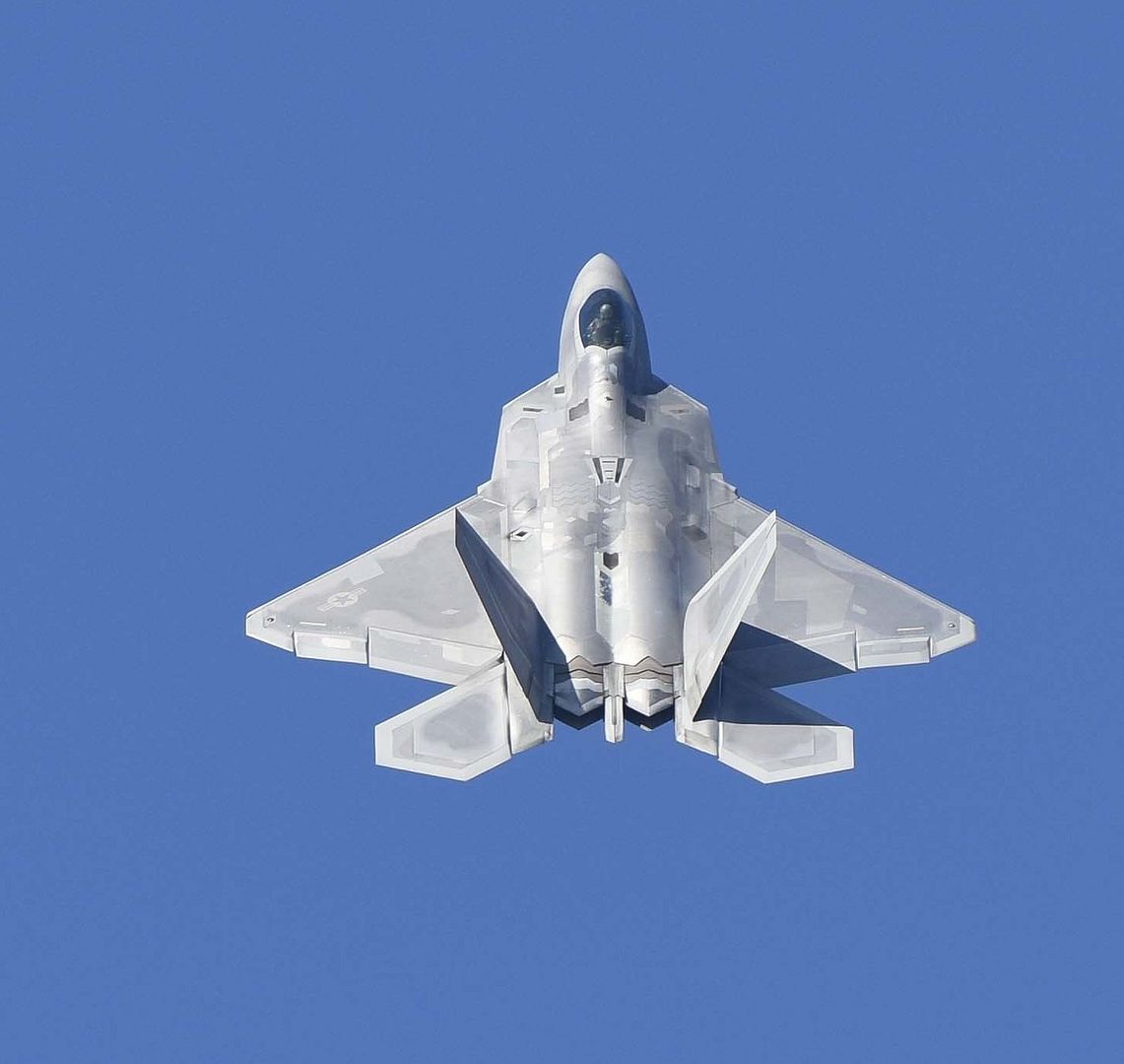
A U.S. Air Force F-35 Lightening II with the 419th Fighter Squadron flies alongside a KC-10 Extender crewed by Reserve Citizen Airmen with the 76th Air Refueling Squadron, 514th Air Mobility Wing, over the Atlantic Ocean, April 7, 2018. The 514th is an Air Force Reserve Command (AFRC) unit located at Joint Base McGuire-Dix-Lakehurst, N.J. The 419th is an AFRC unit assigned to Hill Air Force Base, Utah. (U.S. Air Force photo by Master Sgt. Mark C. Olsen)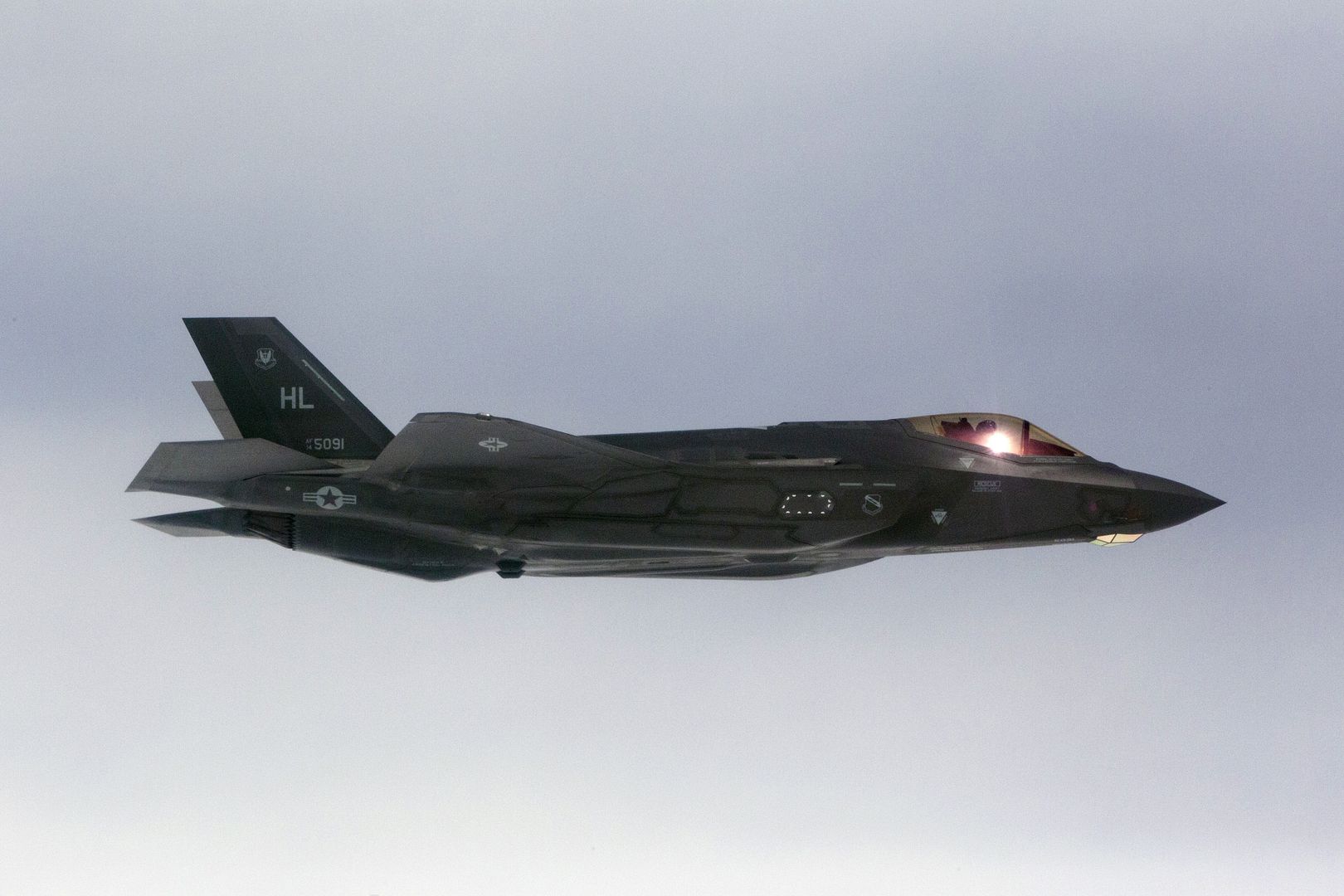
Mobility Wing, refuels an F-35 Lightening II with the 419th Fighter Squadron during a joint training mission over the United States, April 7, 2018. The 514th is an Air Force Reserve Command (AFRC) unit located at Joint Base McGuire-Dix-Lakehurst, N.J. The 419th is an AFRC unit assigned to Hill Air Force Base, Utah. (U.S. Air Force photo's by Master Sgt. Mark C. Olsen)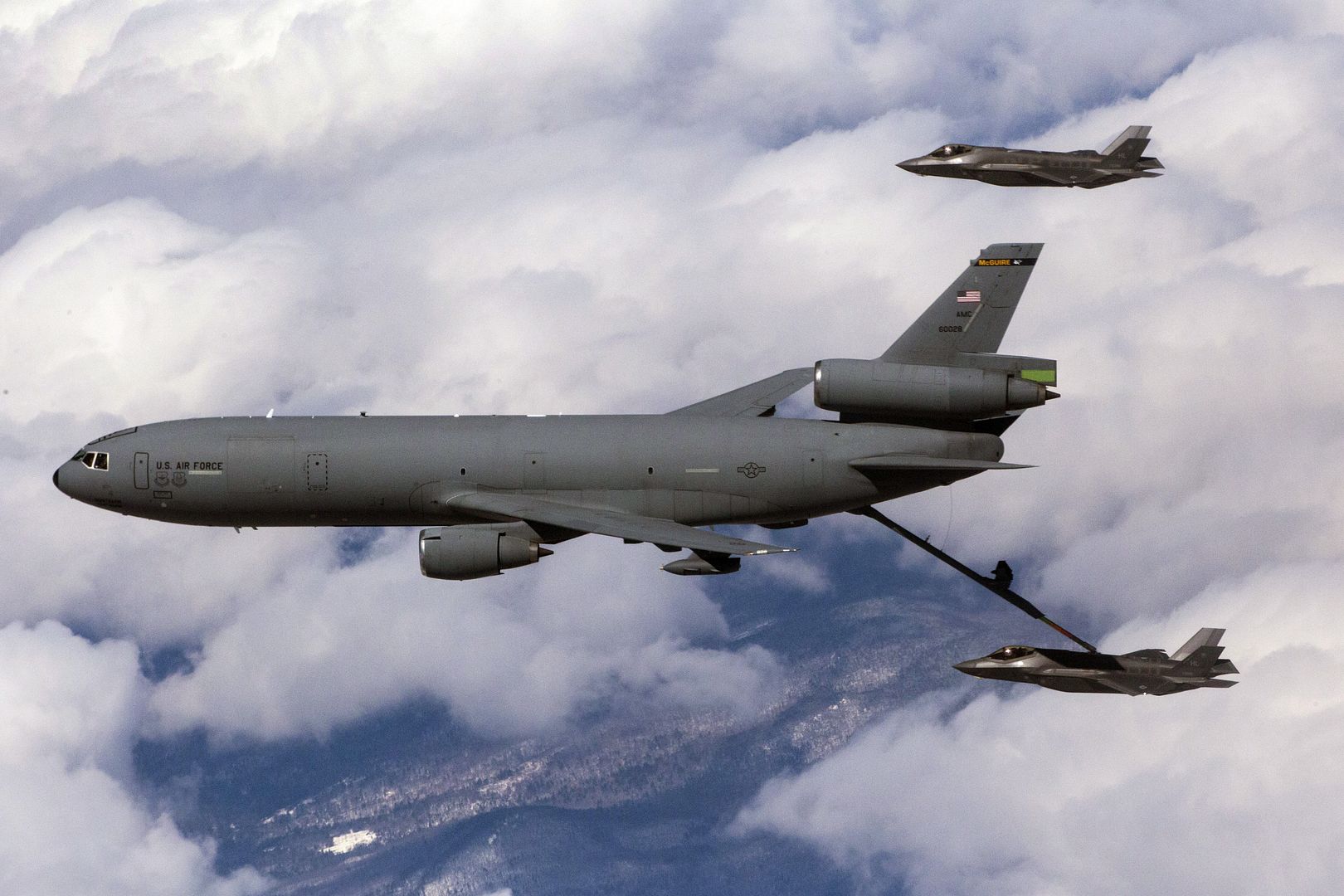
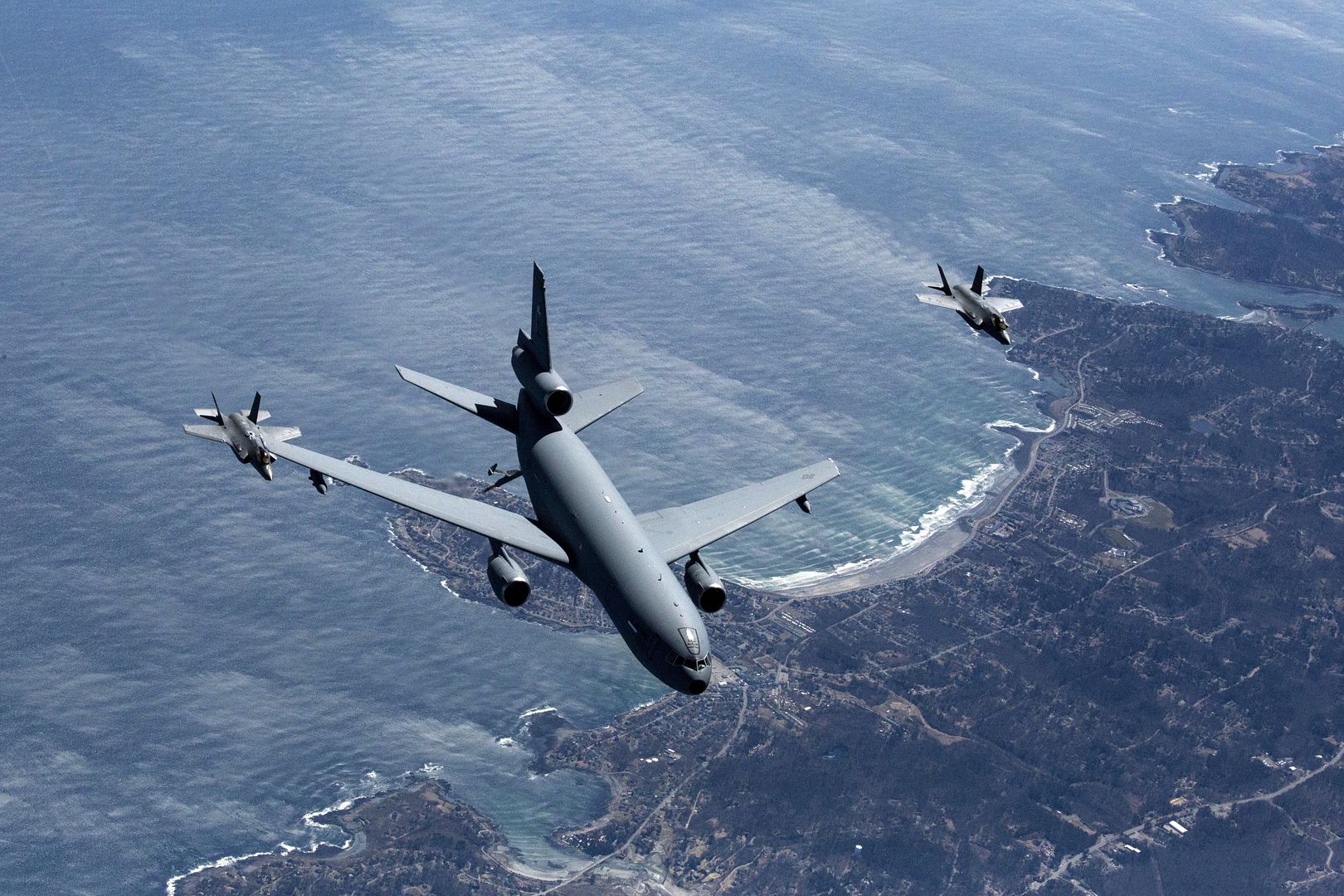
A pair of U.S Air Force F-35 Lightening IIs with the 419th Fighter Squadron fly alongside a KC-10 Extender crewed by Reserve Citizen Airmen with the 78th Air Refueling Squadron, 514th Air Mobility Wing, as an F-15 Eagle with the 104th Fighter Squadron approaches during a joint training mission over the United States, April 7, 2018. The 514th is an Air Force Reserve Command (AFRC) unit located at Joint Base McGuire-Dix-Lakehurst, N.J. The 419th is an AFRC unit assigned to Hill Air Force Base, Utah. The 104th is with the Massachusetts Air National Guard located at Barnes Air National Guard Base. (U.S. Air Force photo by Master Sgt. Mark C. Olsen)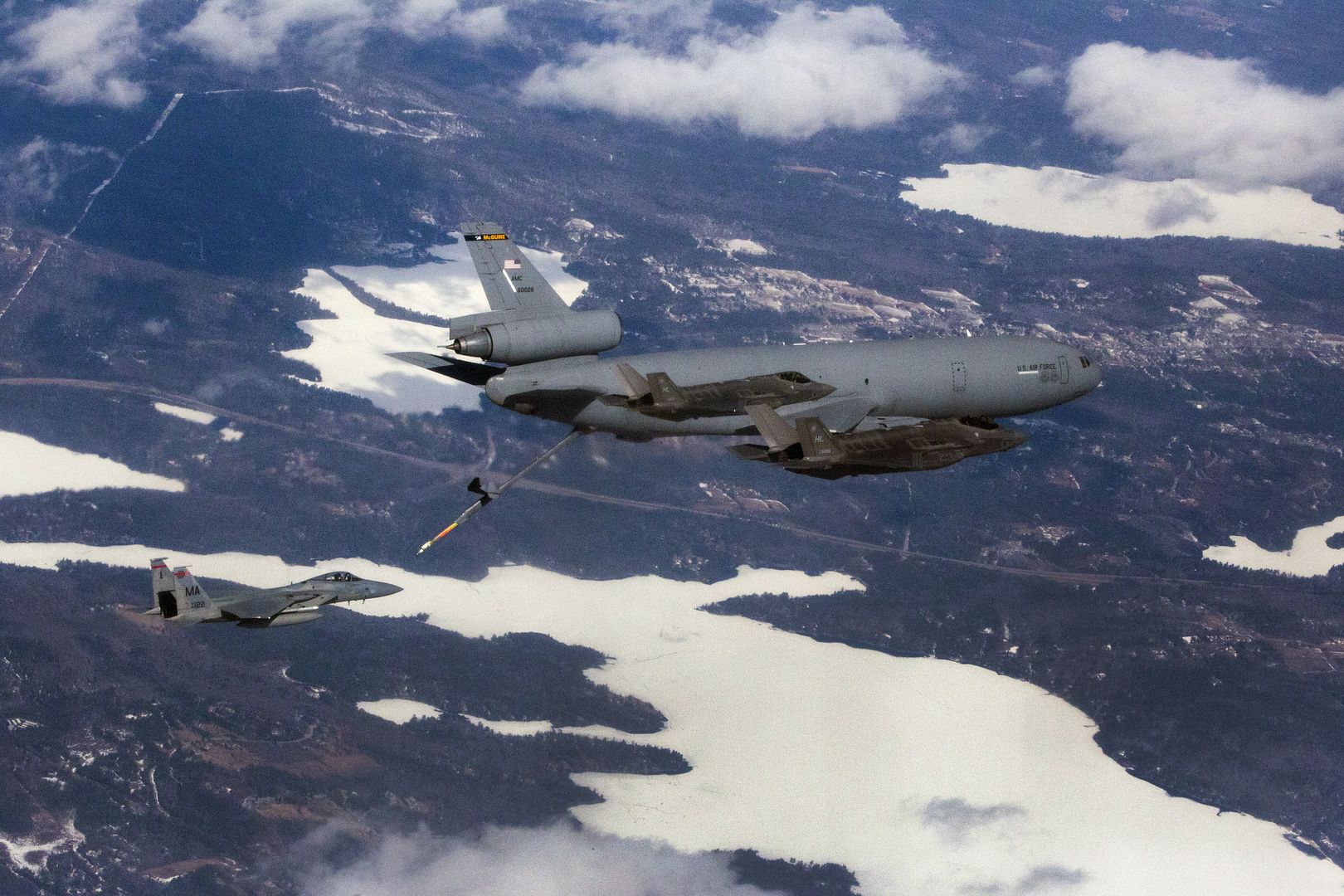
On Thursday 5 April 2018, RAF Brize Norton, home of the Air Mobility Force, welcomed home the Hercules C-130 after completing 36 years of support to the British Forces South Atlantic Islands (BFSAI).
Returning from its 20 hour journey from Mount Pleasant Complex in the Falkland Islands, the C-130 has now formally handed over the role to the Atlas A400M which will continue to provide tactical airlift, maritime reconnaissance and search and rescue capabilities.
The A400M will also step in to the role of providing humanitarian assistance in the region; a task undertaken recently by the Hercules during the multi-national search for the Argentinian submarine the ARA San Juan in 2017.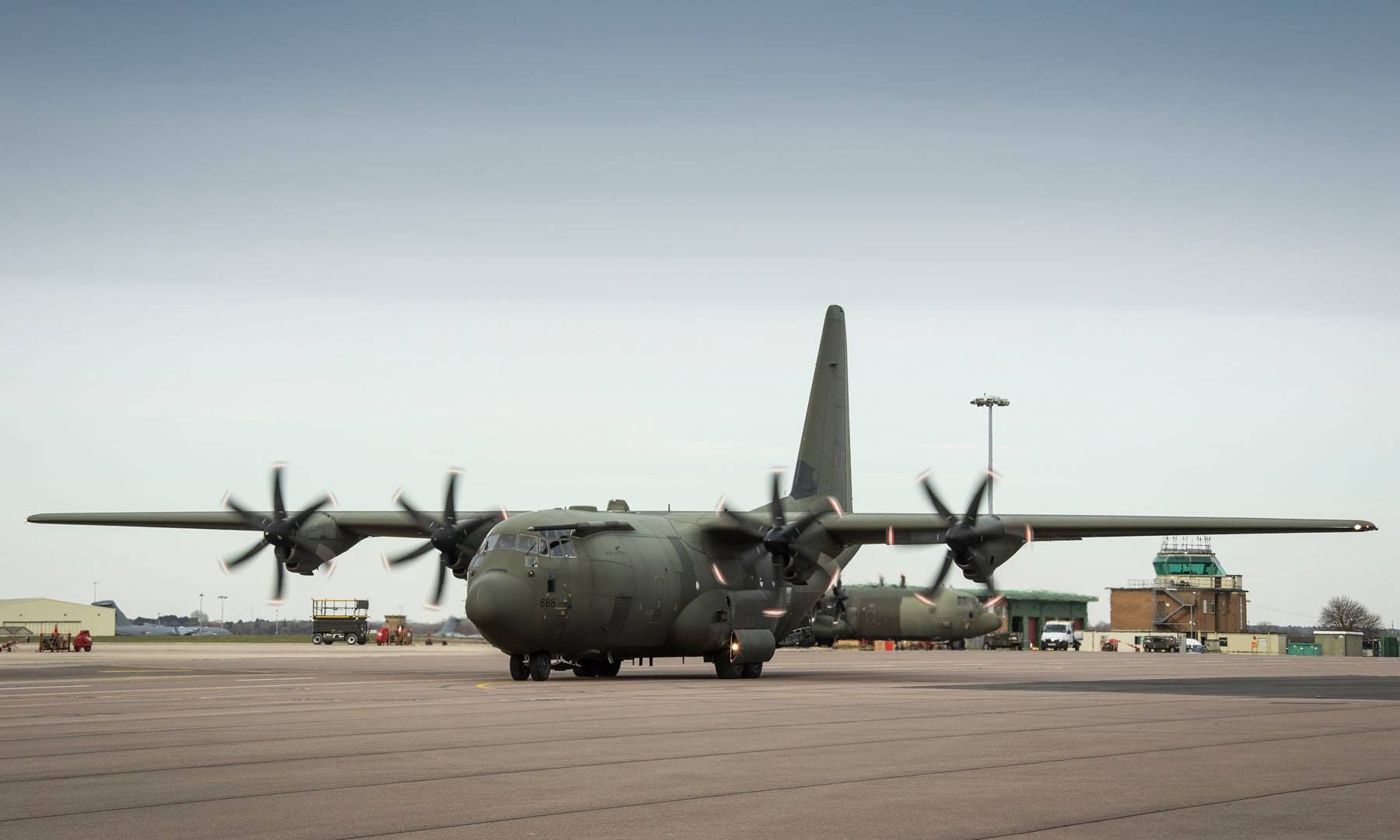
Australia has taken delivery of the next three F-35A aircraft from Lockheed Martin.
Minister for Defence Senator the Hon Marise Payne and Minister for Defence Industry the Hon Christopher Pyne MP congratulated Defence and Lockheed Martin on reaching the important milestone.
Minister Payne said our F-35 program is on track to provide Australia with a fifth generation aircraft at the forefront of air combat technology.
?These latest aircraft are fitted with the program?s final software system, which unlocks the aircraft?s full war-fighting potential including weapons, mission systems and flight performance,? Minister Payne said.
?The stealthy, advanced F-35A is a step change in the Australian Defence Force?s capabilities, giving Australia an edge against the emergence of advanced capabilities in our region.?
?Australia is the first international partner to accept jets with Block 3F capability, and this is another key step towards introducing the aircraft into service before its arrival in Australia in December this year.?
Minister Pyne said this is another significant point in the Joint Strike Fighter program.
?Australia now has five aircraft at Luke Air Force Base in Arizona, USA, where our pilots are currently training. Five more aircraft are scheduled for delivery by the end of 2018.
?More than 50 Australian companies have directly shared in more than A$1 billion in production contracts to date, providing further opportunities to small and medium Australian businesses which benefit through supply chain work.
?In 2016, the F-35 Program supported more than 2,400 jobs across Australia, which is set to grow to 5,000 by 2023.
The Australian Government is investing in 72 F-35A Lightning II aircraft to replace the current fleet of 71 ageing F/A-18A/B Classic Hornets.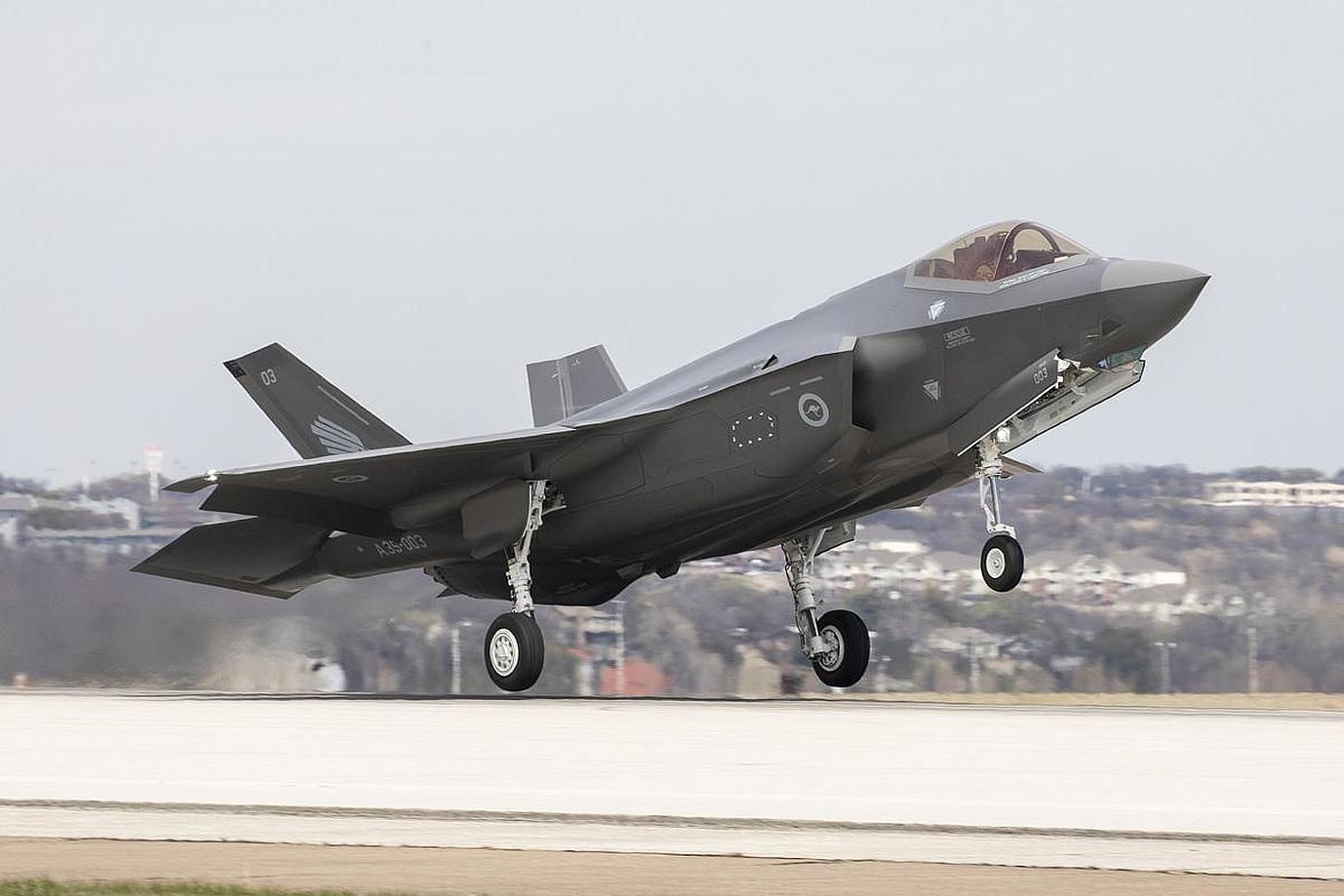
-
 Main AdminSOUTH CHINA SEA (April 10, 2018) An EA-18G Growler, assigned to the Cougars of Electronic Attack Squadron (VAQ) 139, takes off from the flight deck of the aircraft carrier USS Theodore Roosevelt (CVN 71). Theodore Roosevelt is currently underway for a regularly scheduled deployment in the U.S. 7th Fleet area of operations in support of maritime security operations and theater security cooperation efforts. (U.S. Navy photo by Mass Communication Specialist Seaman Michael Colemanberry/Released)
Main AdminSOUTH CHINA SEA (April 10, 2018) An EA-18G Growler, assigned to the Cougars of Electronic Attack Squadron (VAQ) 139, takes off from the flight deck of the aircraft carrier USS Theodore Roosevelt (CVN 71). Theodore Roosevelt is currently underway for a regularly scheduled deployment in the U.S. 7th Fleet area of operations in support of maritime security operations and theater security cooperation efforts. (U.S. Navy photo by Mass Communication Specialist Seaman Michael Colemanberry/Released)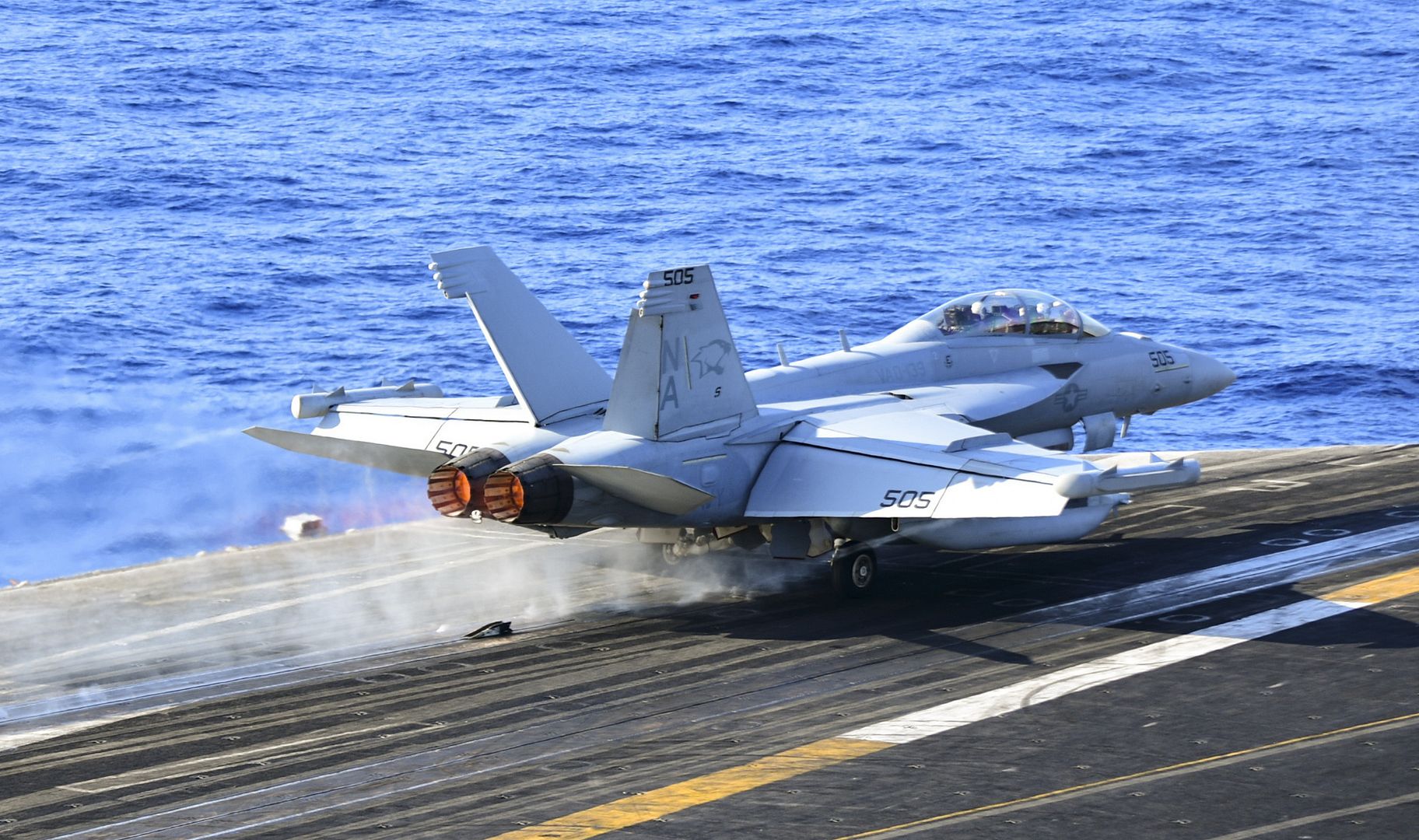
A U.S. Air Force B-52H Stratofortress, assigned to the 20th Expeditionary Bomb Squadron, deployed from Barksdale Air Force Base, La., takes off from Royal Australian Air Force (RAAF) Base Darwin, Australia, April 9, 2018. Two U.S. Air Force bombers arrived to the small base in Australia?s Northern Territory to support the U.S. Pacific Command's Enhanced Air Cooperation (EAC) initiative in cooperation with Australian RAAF teams. The EAC comprises a range of air exercises and training activities already Australian and the U.S. aircrews support teams. (U.S. Air Force photo by Staff Sgt. Alexander W. Riedel)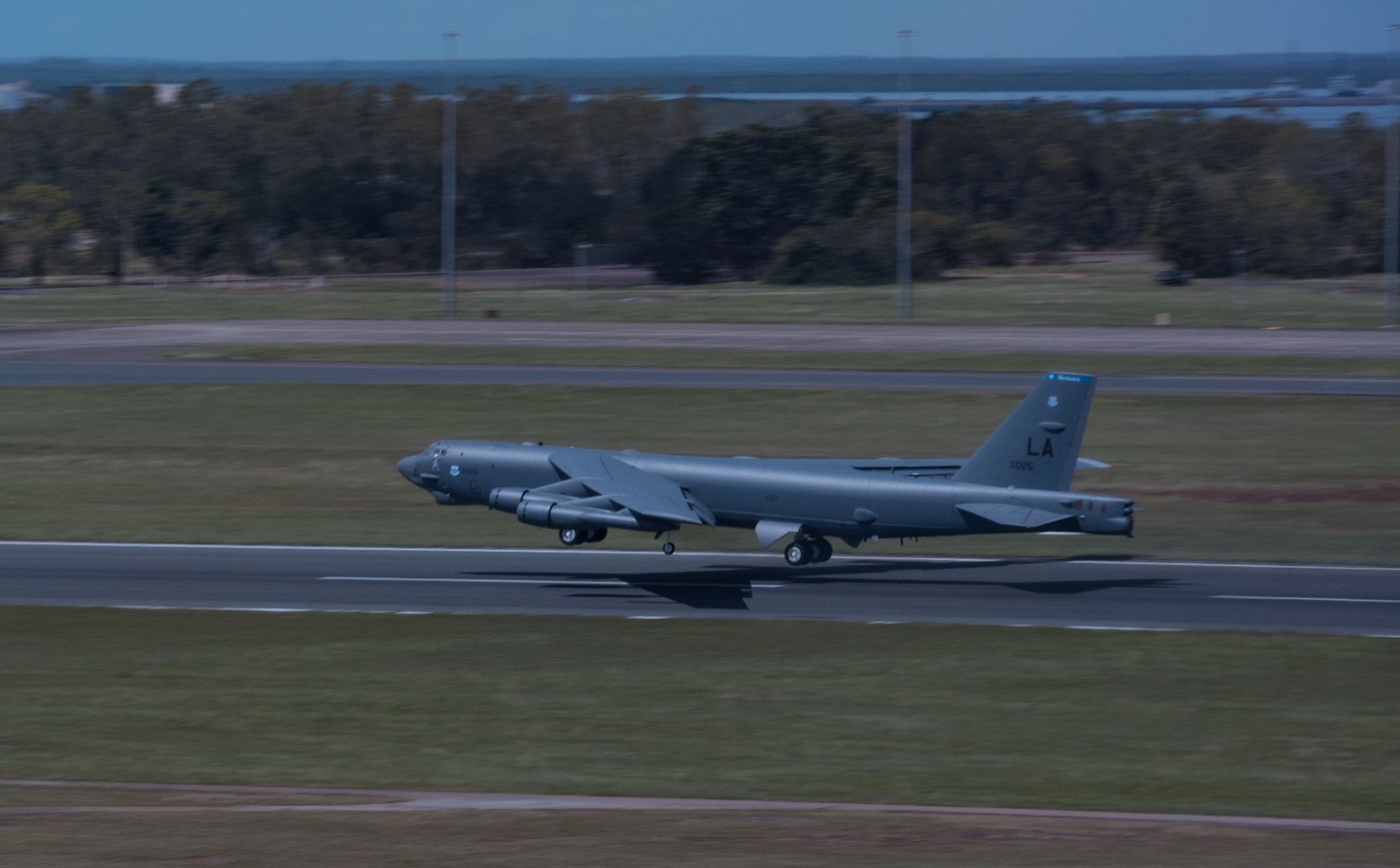
JAKARTA, Indonesia, April 10, 2018 /PRNewswire/ -- Boeing [NYSE: BA] and the Lion Air Group today announced the airline purchased 50 of Boeing's new 737 MAX 10 airplane, which will be the most fuel-efficient and profitable single-aisle jet in the aviation industry. The deal, valued at approximately $6.24 billion at list prices, is the largest incremental order to date of the MAX 10 variant. The order was previously listed as unidentified on Boeing's Orders & Deliveries website.
Boeing and the Lion Air Group today announced the airline purchased 50 of Boeing?s new 737 MAX 10 airplane, which will be the most fuel-efficient and profitable single-aisle jet in the aviation industry. This rendering shows the airplane in the carrier's livery. (Boeing illustration)
"Lion Air is very excited to be a launch customer of the latest version of the 737. This airplane delivers a new level of fuel efficiency and operating economics and fits in perfectly with our fleet of modern airplanes," said Edward Sirait, President Director, the Lion Air Group. "We are proud to continue our tradition of innovation at Lion Air as we again lead the way with new airplane technology."
The Lion Air Group was first in the world to put the 737 MAX 8 into service and the first to order the 737 MAX 9. Last month, the group became the first to take delivery of a 737 MAX 9, using the airplane's added capacity to launch several international routes.
"We are honored that Lion Air Group, one of the most innovative and fast-growing carriers, has once again placed its trust in the 737 family," said Dinesh Keskar, senior vice president, Asia Pacific & India Sales, Boeing Commercial Airplanes. "With the 737 MAX 10, Lion Air will have a range of efficient and reliable options to optimize their network to serve their customers and grow profitably."
The 737 MAX is a family of airplanes that offer about 130 to 230 seats with the ability to fly up to 3,850 nautical miles (7,130 kilometers). These jets incorporate the latest CFM International LEAP-1B engines, Advanced Technology winglets, the Boeing Sky Interior, large flight deck displays and other features to deliver the highest efficiency, reliability and passenger comfort in the single-aisle market. The 737 MAX 10 is the largest variant in the family. At 43.8 m (143 ft 8 in) long, the airplane can seat a maximum of 230 passengers and offer airlines the lowest seat-mile cost ever in a single-aisle aircraft.
The 737 MAX is the fastest-selling airplane in Boeing history, accumulating more than 4,400 orders from 96 customers worldwide. For more information and feature content, visit www.boeing.com/commercial/737max.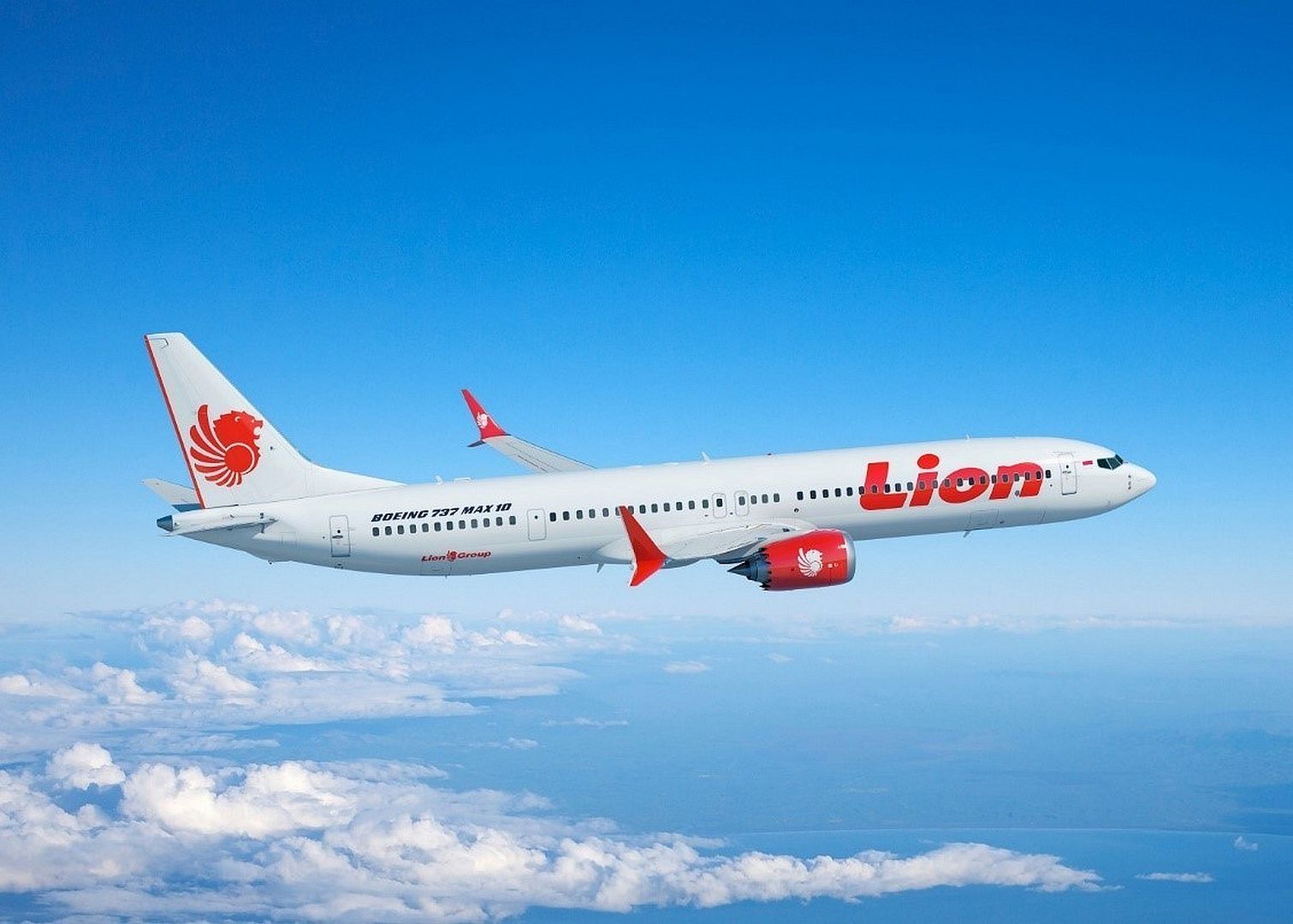
WASHINGTON, April 10, 2018 /PRNewswire/ -- Boeing [NYSE: BA] and Qatar Airways today signed a letter of intent to purchase five 777 Freighters, valued at $1.7 billion at list prices. When a purchase is finalized, it will be posted to Boeing's Orders and Deliveries website.
His Excellency Mr. Al Baker, Qatar Airways Group CEO and Kevin McAllister, president & CEO, Boeing Commercial Airplanes sign a Memorandum of Understanding for five Boeing 777 Freighters in the presence of the Qatari Minister of Finance and Qatar Airways Chairman His Excellency Mr. Ali Sharif Al Emadi (left) and Sheikh Meshal Bin Hamad Al-Thani, Qatari Ambassador to the USA. (Boeing photo)
The letter of intent was signed during a ceremony attended by Qatari Minister of Finance and Qatar Airways Chairman His Excellency Mr. Ali Sharif Al Emadi, Qatar Airways Group Chief Executive His Excellency Mr. Akbar Al Baker, Boeing Commercial Airplanes President & CEO Kevin McAllister.
"The addition of five 777 Freighters is a significant moment for our cargo division," said His Excellency Mr. Al Baker. "As the world's third-largest cargo operator, Qatar Airways continues to invest in fleet expansion. This transaction will be a reinforcement of our confidence in Boeing to continue to deliver an outstanding product that meets our exacting standards. We expect no less than perfection, and we are confident that Boeing will continue to deliver that."
Qatar Airways currently operates a fleet of nearly 100 Boeing widebody airplanes and has about 100 more Boeing airplanes on order.
"We are proud of our long-standing partnership with Qatar Airways and we value their business and the positive impact on Boeing, our employees, suppliers and communities," said McAllister. "We are honored that one of the world's leading international cargo carriers recognizes the unmatched capabilities of the 777 Freighter to continue to lift their growing freight operations."
The 777 Freighter is capable of flying 4,900 nautical miles (9,070 kilometers) with a payload of 112 tons (102 metric tonnes or 102,000 kg). The airplane's long range translates into significant savings as fewer stops mean lower landing fees, less congestion, lower cargo handling costs and shorter delivery times.
Boeing is the air cargo market leader, providing over 90 percent of the dedicated freighter capacity around the world.
About Qatar Airways:
Qatar Airways is proud to be one of the youngest global airlines to serve all six continents, and thanks to our customers' response to our offerings, we are also the world's fastest-growing airline. We connect more than 150 destinations on the map every day, with a fleet of the latest-generation aircraft, and an unrivalled level of service from our home and hub, the Five-star airport, Hamad International Airport in Doha, the State of Qatar.
Qatar Airways Cargo, the world's third largest international cargo carrier, serves 60 exclusive freighter destinations worldwide via its world-class Doha hub and also delivers freight to more than 150 key business and leisure destinations globally with 200 aircraft. The Qatar Airways Cargo fleet includes eight Airbus A330 freighters, two Boeing 747-8 freighters and 13 Boeing 777 freighters.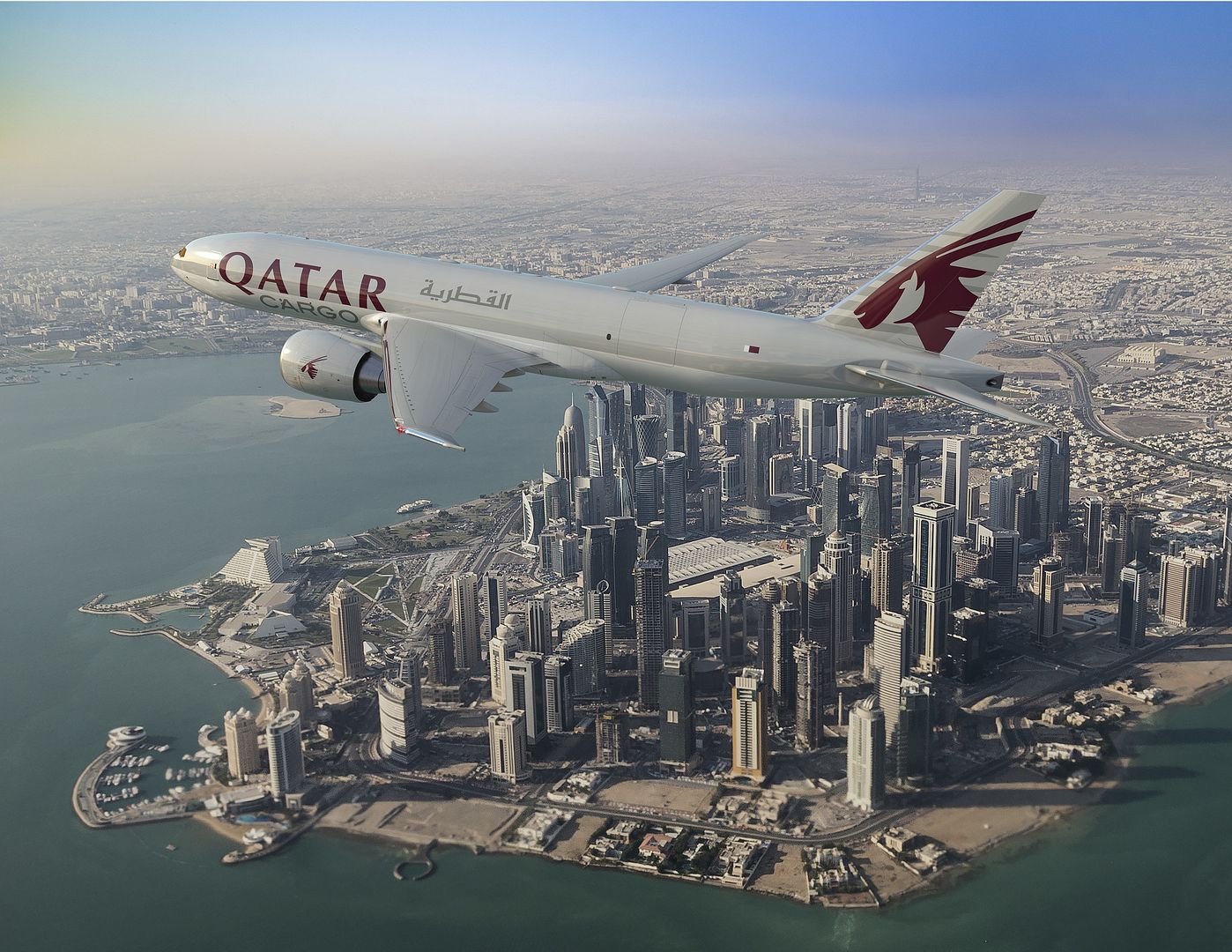
SAS Group has signed a firm order for 35 A320neo aircraft. SAS will also lease 15 additional A320neos from leasing companies. This important new strategic commitment will result in SAS becoming an all Airbus operator with the fuel-efficient A320 family for its mainline European operations, as well as for its extensive domestic services in Scandinavia.
These new A320neos will join the airline?s existing Airbus fleet of 56 aircraft (eight A340s, eight A330s and 40 A320 Family aircraft). The engine selection will be announced by the airline at a later date. SAS has been an Airbus customer since 1980.
?Just over one year ago, we started to phase into service brand new Airbus A320neos, and since then we have received a very positive response from our customers. I?m therefore delighted that, through this order, we can continue improving and investing in our customer offering, and thereby SAS?s future. We are also creating a single-type and more efficient fleet for the first time. Ordering 50 Airbus A320neos gives us access to the market?s most efficient aircraft thereby enabling us to further improve our operational efficiency and to continue to reduce our climate-impacting emissions,? says Rickard Gustafson, President and CEO of SAS.
?We are proud with this repeat commitment by SAS. The A320neo will complement SAS?s existing Airbus fleet, with unbeatable fuel efficiency, the lowest operating costs and environmental footprint. It is the perfect choice for SAS, for replacing its older generation aircraft. This means more of SAS?s passengers will keep enjoying the best comfort in the skies,? said Eric Schulz, Chief Commercial Officer, Airbus Commercial Aircraft.
The A320neo Family incorporates the very latest technologies including new generation engines and Sharklets, which together deliver at least 15 percent fuel savings at delivery and 20 percent by 2020. With more than 6,000 orders received from 99 customers, the A320neo Family has captured nearly 60 percent share of the market.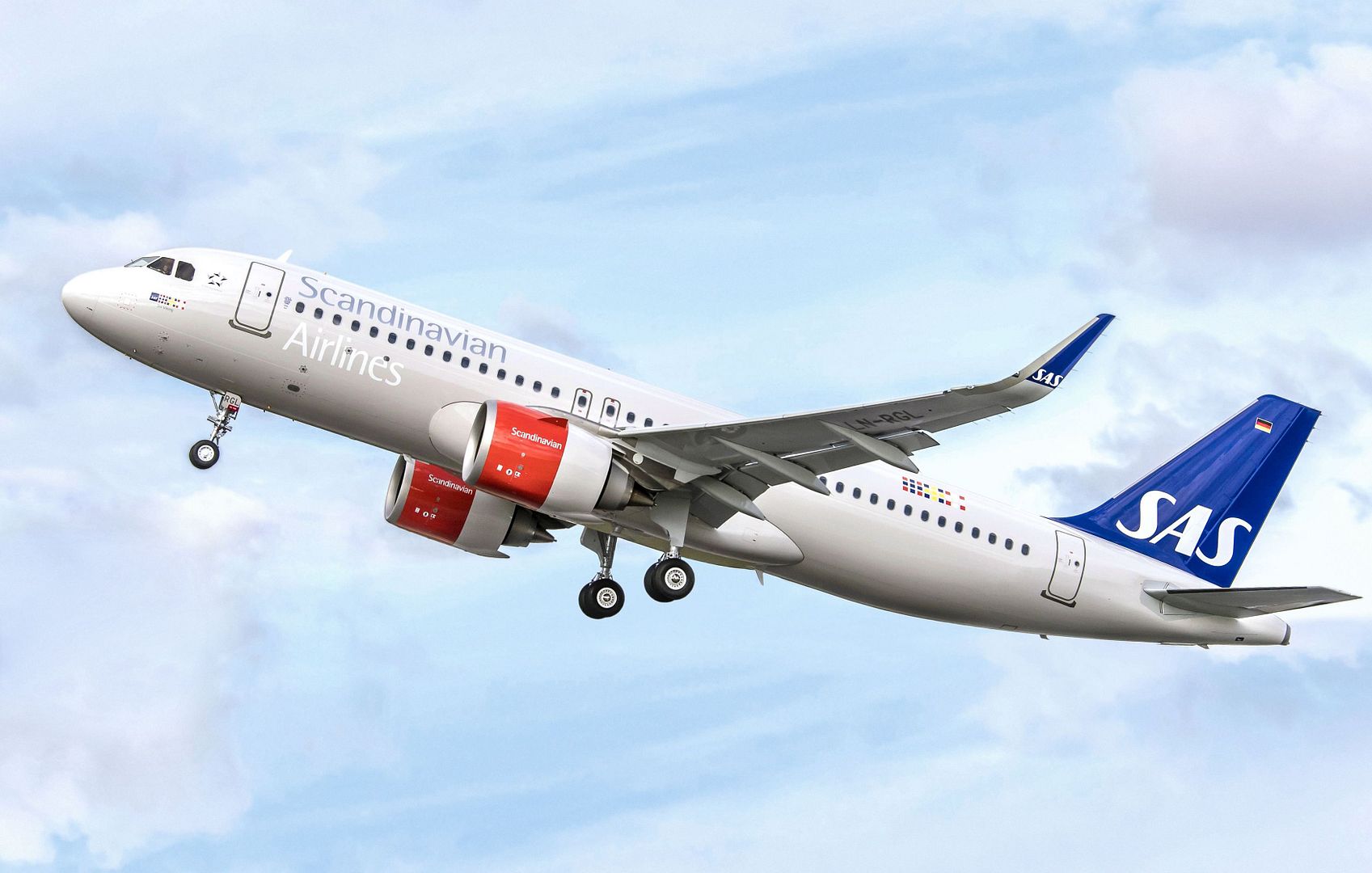
Austin, Texas, April 9, 2018 ? Embraer Services & Support has completed the first upgrade of a Phenom 300 light business jet with a two-person divan, increasing cabin passenger capacity to 11 occupants, the highest in its class. The announcement was made today at the Embraer Executive Operators Conference, in Austin Texas, a joint event hosted by Embraer Services & Support and the Embraer Jet Owners Association. ?I am very excited to share this news with our Phenom 300 customers around the world,? said Johann Bordais, President & CEO, Embraer Services & Support. ?And I also want to congratulate our teams for developing this solution to make our Phenom 300 customers even happier. At each of our service centers, our teams are eagerly awaiting the privilege of serving our Phenom 300 customers with this special upgrade for their aircraft.? The first upgrade was completed at Embraer?s Customer Service Center in Sorocaba, Brazil, through the implementation of a service bulletin, which is now available and applicable to the entire global fleet of more than 430 Phenom 300 in operation in about 30 countries. The divan, positioned at the front of the cabin facing the entrance and the refreshment center, was already available as an option in one of three cabin layouts in new Phenom 300 just as it is in the new Phenom 300E, which entered service in the first quarter of this year. Developed by maintenance engineers and technicians, the divan upgrade is being made available to Phenom 300 customers at all 70 owned and authorized service centers worldwide, leveraging existing maintenance team skills and resources.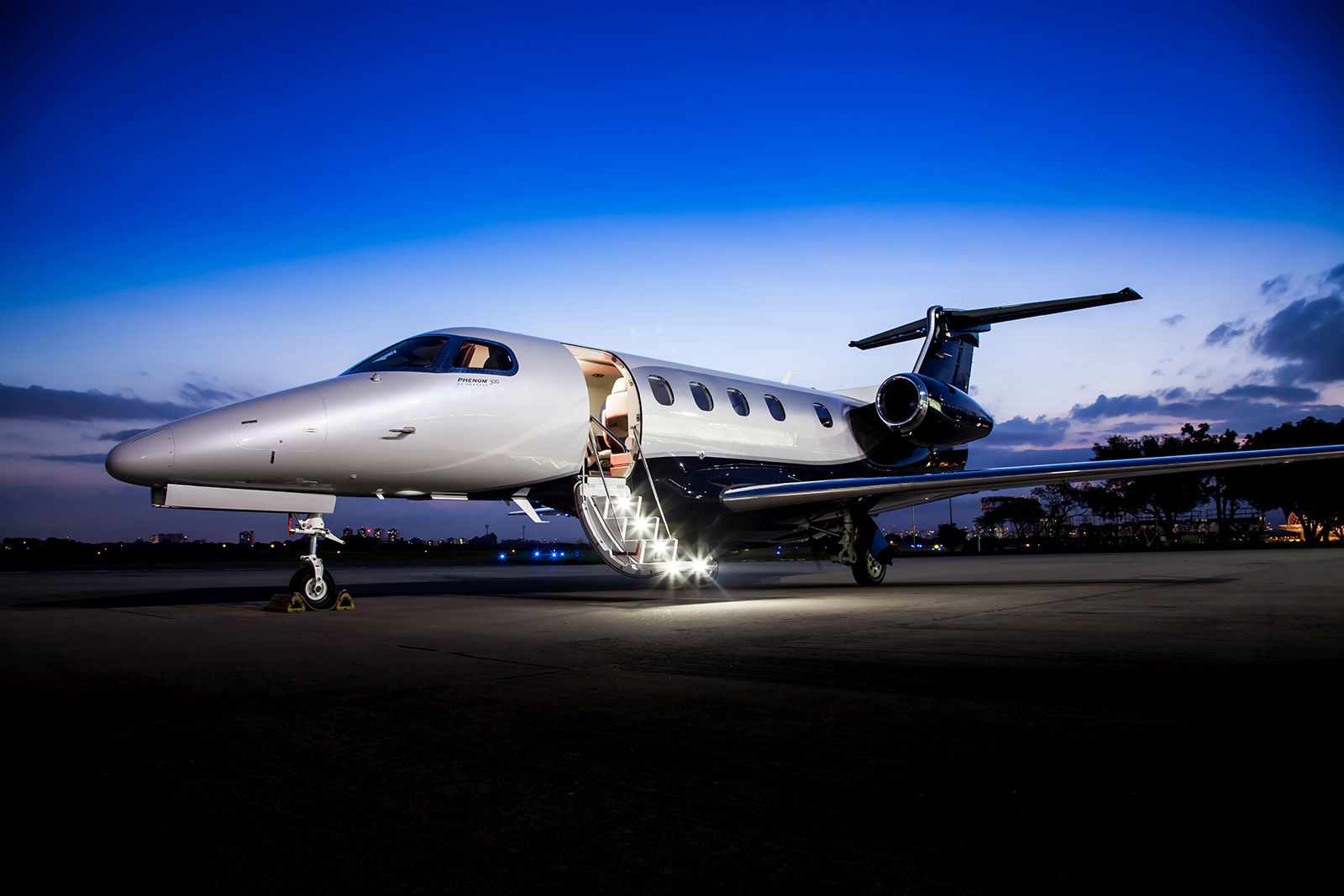
A 10 sqn RAF Voyager is at Jacksonville?s Cecil Airport, Florida, preparing for the first RAF refuelling sortie with the 207 and 617 Sqn Lightning?s based in Marine Corps Aviation Station Beaufort. The crew, usually based at RAF Brize Norton, will be conducting day and night sorties for the next few days to prepare for the return of the Lightning aircraft to their future home in RAF Marham later in the year; a logistical move that will require the 617 Sqn jets to refuel several times over the Atlantic.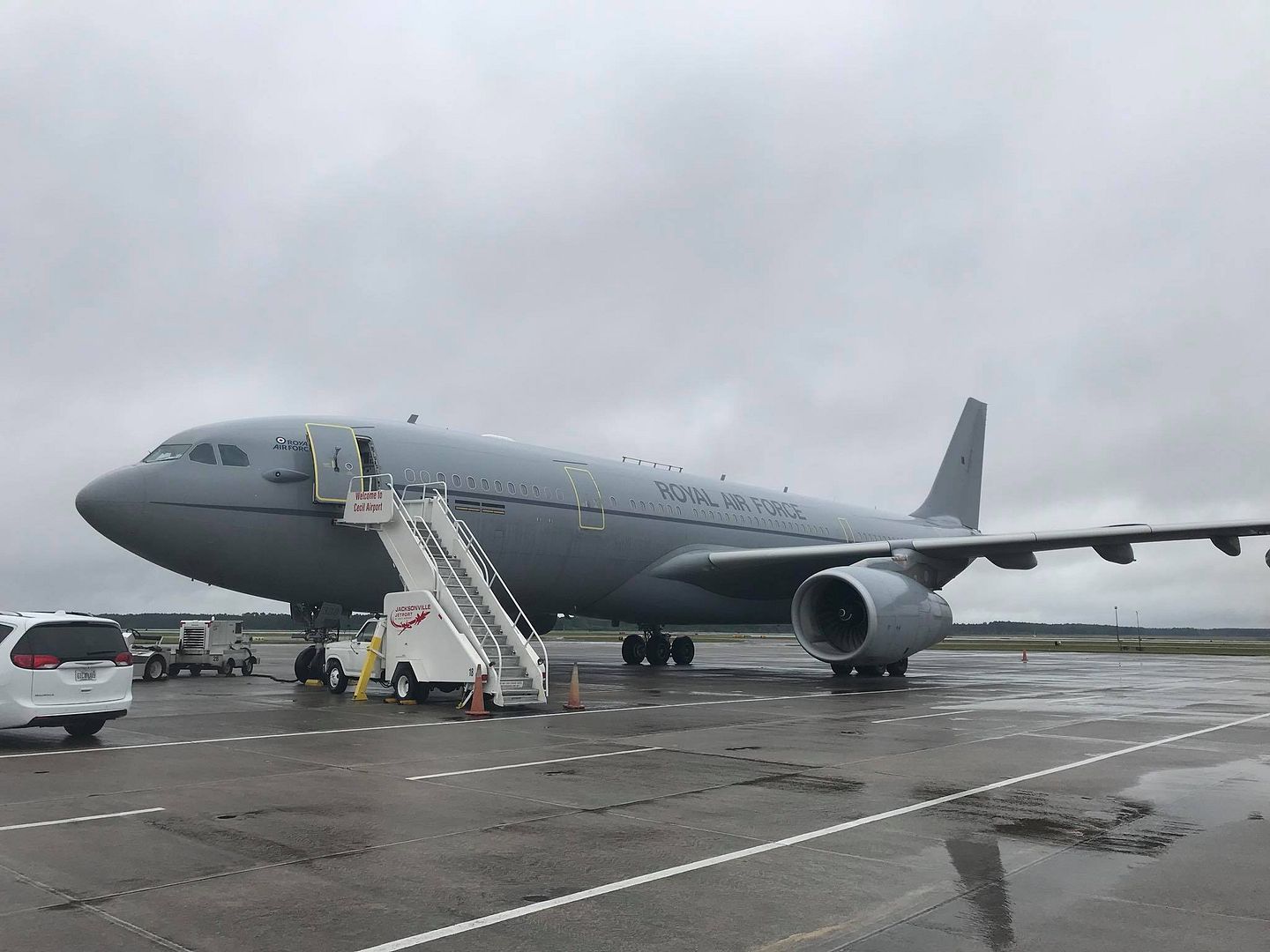
Post a reply
- Go to Next topic
- Go to Welcome
- Go to Introduce Yourself
- Go to General Discussion
- Go to Screenshots, Images and Videos
- Go to Off topic
- Go to Works in Progress
- Go to Skinning Tips / Tutorials
- Go to Skin Requests
- Go to IJAAF Library
- Go to Luftwaffe Library
- Go to RAF Library
- Go to USAAF / USN Library
- Go to Misc Library
- Go to The Ops Room
- Go to Made in Germany
- Go to Campaigns and Missions
- Go to Works in Progress
- Go to Juri's Air-Raid Shelter
- Go to Campaigns and Missions
- Go to Works in Progress
- Go to Skinpacks
- Go to External Projects Discussion
- Go to Books & Resources
